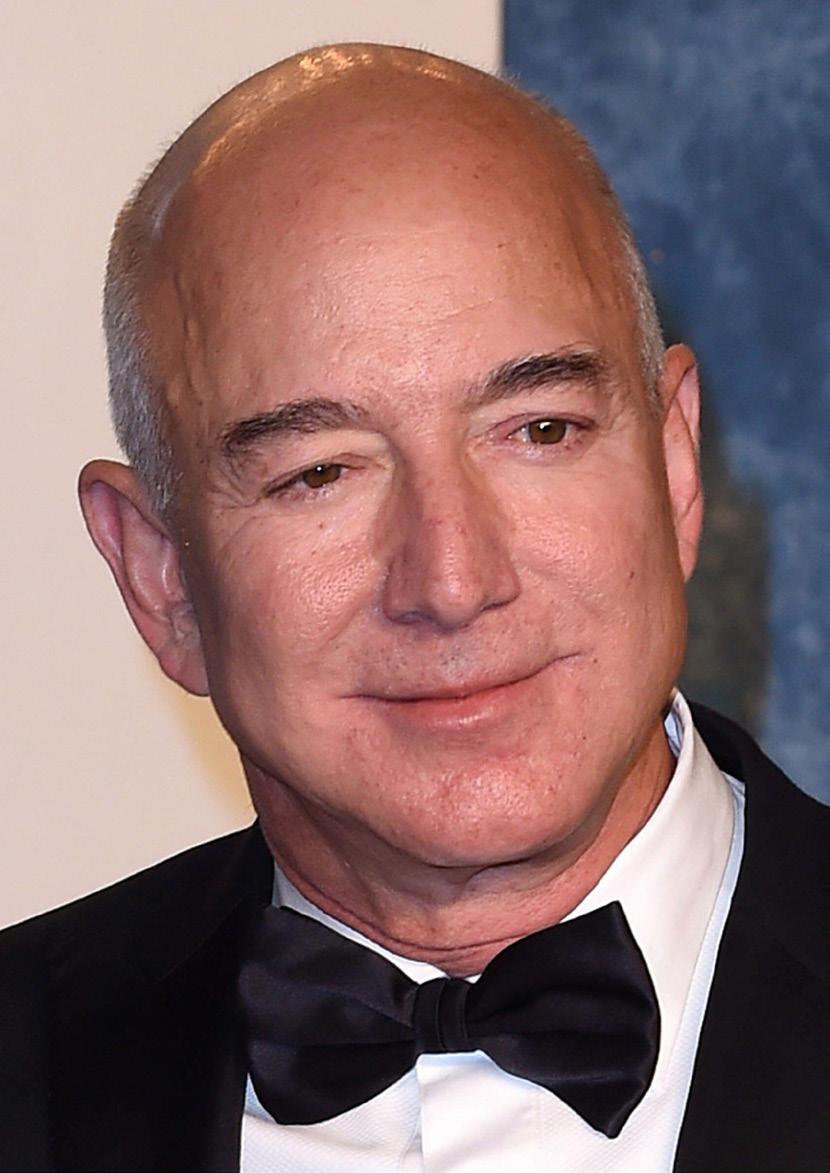




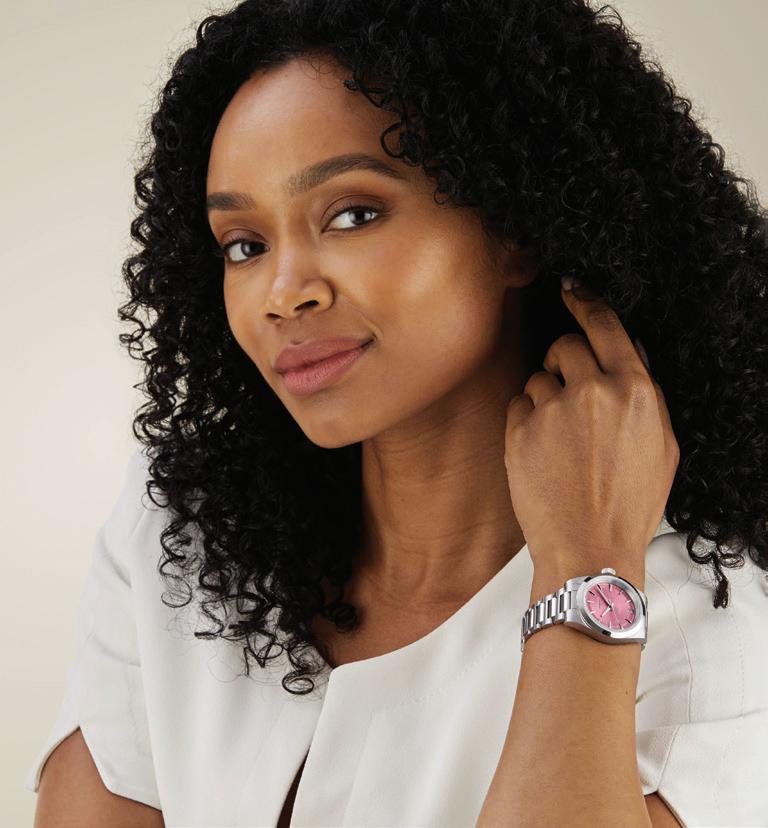
goldsmiths.co.uk Discover the world of luxury watches and jewellery from the Watches of Switzerland group with multibrand showrooms across Watches of Switzerland, Mappin & Webb and Goldsmiths. Our
watches-of-switzerland.co.uk
mappinandwebb.com



Discover the world of luxury watches and jewellery from the Watches of Switzerland group with multibrand showrooms across Watches of Switzerland, Mappin & Webb and Goldsmiths.
Our expert teams are here to guide you to find that perfect piece.
watches-of-switzerland.co.uk
mappinandwebb.com
goldsmiths.co.uk
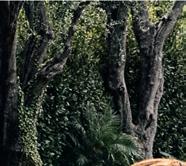


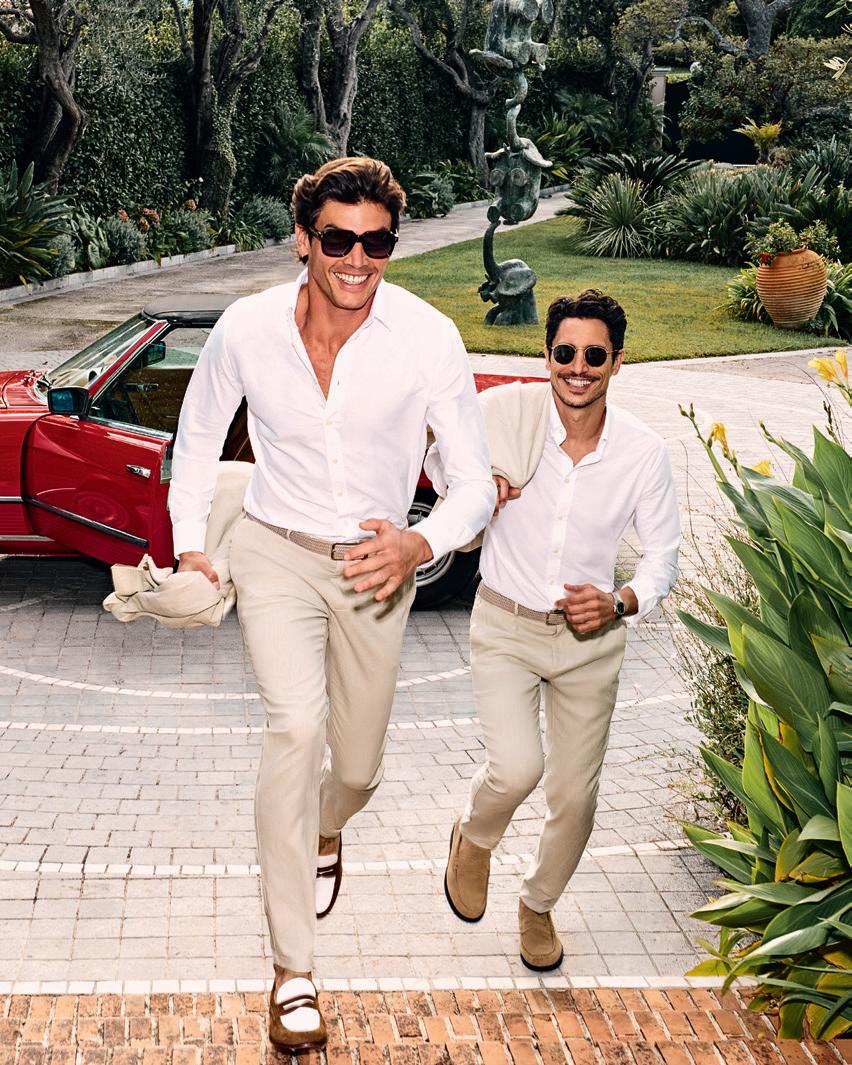







Editor: Christopher Jackson
Editor-at-large: Claire Coe
Contributing Editors:
Emily Prescott, Meredith Taylor, Lord Ranger, Liz Brewer, Dr Paul Hokemeyer
Advisory Board:
Sir John Griffin (Chairman), Dame Mary Richardson, Sir Anthony Seldon, Elizabeth Diaferia, Ty Goddard, Neil Carmichael
Management: Ronel Lehmann (Founder & CEO), Colin Hudson, Tom Pauk, Professor Robert Campbell Christopher Jackson, Curtis Ross, Julia Carrick OBE, Gaynor Goodliffe
Mentors:
Derek Walker, Andrew Inman, Chloë Garland, Alejandra Arteta, Angelina Giovani, Christopher Clark, Robin Rose, Sophia Petrides, Dana JamesEdwards, Iain Smith, Jeremy Cordrey, Martin Israel, Iandra Tchoudnowsky, Tim Levy, Peter Ibbetson, Claire Orlic, Judith Cocking, Sandra Hermitage, Claire Ashley, Dr Richard Davis, Sir David Lidington, Coco Stevenson, Talan Skeels-Piggins, Edward Short, David Hogan, Susan Hunt, Divyesh Kamdar, Julia Glenn, Neil Lancaster, Dr David Moffat, Jonathan Lander, Kirsty Bell, Simon Bell, Paul Brannigan, Kate King, Paul Aplin, Professor Andrew Eder, Derek Bell, Graham Turner, Matthew Thompson, Douglas Pryde, Pervin Shaikh, Adam Mitcheson, Ross Power, Caroline Roberts, Sue Harkness, Andy Tait, Mike Donoghue, Tony Mallin, Patrick Chapman, Amanda Brown, Tom Pauk, Daniel Barres, Patrick Chapman, Merrill Powell, Kate Glick, Lord Mott, Dr Susan Doering, Raghav Parkash, Marcus Day, Sheridan Mangal, Mark Thistlethwaite, Madhu Palmar, Margaret Stephens, John Cottrell, Victoria Anstey, Stephen Goldman, Patrick Timms, James Meek, Dominique Rollo, Tracey Jones, Alan Urmston, Duncan Palmer, James Slater, Charles Hamilton-Stubber, Catherine Wood, Guy Beresford
Business Development: Rara Plumptre
Design and Digital: Nick Pelekanos, Ankita Agrawal, D’Arcy Lawson Baker
Photography: Sam Pearce, Will Purcell, Gemma Levine
Public Relations: Pedroza Communications
Website Development: Eprefix
Media Buying: Virtual Campaign Management
Print Production: Marcus Dobbs
Printers:
Micropress Printers Ltd
Distribution: Emblem Group
Registered Address:
Finito Education Limited, 14th floor, 33 Cavendish Square, London W1G 0PW, +44 (0)20 3780 7700 Finito and FinitoWorld are trade marks of the owner. We cannot accept responsibility for unsolicited submissions, manuscripts and photographs. All prices and details are correct at time of going to press, but subject to change. We take no responsibility for omissions or errors. Reproduction in whole or in part without the publisher’s written permission is strictly prohibited. All rights reserved. Registered in England No. 9985173


I always remember with a good deal of pride the Head of City of London School reporting exceptional A level examinations results and University entrance offers to parents. One pupil had turned down both Cambridge and Oxford Universities to gasps of surprise from a packed audience. In a beautifully choreographed moment, the Head then let slip that the pupil was fortunate to have been offered a place at Havard. The Trump administration's plan to bar Harvard University from enrolling international students would be a blow to those who seek higher education in the United States.
For someone who helps others to find employment, I realise that I prefer working for myself. I have been told that I am unemployable. Taking an entrepreneurial route comes with great risks and is not for everyone. Having said that, we are getting more enquiries from school and college leavers and graduates who do not want to work for others and are keen on setting up their own businesses. To cope with this demand, our mentors will soon be providing support to those who wish to furrow their own path. I hope that we will be able to share some success stories in the same way that we feature candidates who secure meaningful careers.
When we started this magazine in the early days of Covid lockdown,
it was unlike any other publication launch. We did not raise money for this publishing venture and fourteen issues later we still have not had a celebration event. Everything we have done has been with slow organic growth, gaining the trust of world leaders, politicians, business leaders and advertisers. The move to a bimonthly edition is in our growth plan.
Recently, one of our revered business leaders, Richard Oldfield, felt that we had been unduly harsh in a Leader column about former Archbishop Justin Welby and the Makin Report. Our immediate response was to extend an invitation for the submission of an opinion piece to provide a balanced viewpoint. This was immediately published online and appears now in the magazine.
In contrast, Charlotte Leslie, a former Member of Parliament, subjected us to not one but two Subject Access Requests over two years, asserting that we have been processing significant amounts of her personal data.
Freedom of expression is sacred and the way that responsible publishers deal with complainants, is to invite contributions, not be subjected to vexatious actions.
We have always sought to celebrate pioneers who inspire the next generation. Jeff Bezos is one such person. His own “1-hour rule” is simple: no screens, no rushing, just an intentional tech-free start to the day, yet the impact of Amazon is so profound and felt across the world. It may be that we will be revering Greg Meredith, who appears on page 68 in the same vein. Remember that you read about F1R3FLY here first.



As the new Department of Government Efficiency (DOGE) gets into full swing, Elon Musk appears to have overtaken President Donald Trump as the least popular American from the Democrats’ perspective. But as interesting as the items being cut from the federal budget is Musk’s methodology: as before at Twitter, he is giving a lot of power to very young people.
What’s interesting is that a hierarchy that has nothing to do with age suggests meritocracy. Among Musk’s team are Akash Bobba, 21, Ethan Shaotran, 22, Luke Farritor, 23 – and the youngest of them all, Edward Coristine, aged 19.
Some news outlets have expressed dismay at the youth of the people now called in to mark the homework of seasoned civil servants. But it’s a reminder that the middle-aged don’t necessarily have a monopoly on intelligence. Take Farritor as an example: he won part of a $700,000 prize in 2024 after using AI technology to help decipher a 2,000-year-old document, which was thought to be burnt beyond repair.
The traditional view is that human beings begin in ignorance and therefore need to be educated. Naturally, this is the case with children, but when does it cease to be true?
Well, even then, received wisdom says, eighteen-year-olds might all have varying degrees of intelligence, and some of them may be very smart indeed – but even then, the argument runs, wisdom still won’t have been generated. That takes decades of lived experience. Leadership roles are therefore better
assigned to people of a certain age, who have attained the higher level of being that this implies - usually brought on by such things as marriages, children, divorces, and not easily being able to ascend stairs.
Very often, that view of life will prove true. We rightly consider some of our great leaders to have brought to the table the additional perspective that the years bring. Sir Winston Churchill is frequently lambasted for being the architect of the Gallipoli disaster, among many other things, but his long service made him the Churchill who stood firm in 1940: we revere him because he learned from his mistakes.
In America itself, there are signs that this has gone too far. The image of the father – as in the Founding Father – is woven into the fabric of the nation and reaches its perfection in the mysterious figure of Abraham Lincoln. But over the years, the notion that wisdom can only emanate from the old is beginning to look somewhat tired. Nobody was ever certain that Ronald Reagan was at his sharpest during his second term; Joe Biden was almost certainly in no state to govern from day one of his presidency. This makes Musk’s band of waste-cutters a timely symbol of a new chapter.
What can we learn from this in our own business lives? The young, of course, bring an energy that the middle-aged know all too well doesn’t come twice. We see this most particularly in popular music, where to be 30 is to be past one’s sell-by date. Taylor Swift, cheered last year at American football, was booed this year. The switch doesn’t always flip quite so
swiftly as it does for the mega-famous. It was Sir Kingsley Amis who said he hated reading the young because they were saying: “The world’s not like that anymore; it’s like this.” We’re aware of a privilege that the young have: to define their own generation and, in so doing, to issue some sort of rebuke to the previous one.
Rigid hierarchy can lead to the ossification of any collective structure. Energy gets trapped low down in the organization. Whatever one thinks about Musk, there is something to be said for the way in which he is prepared to use the best people he can find for the job. Another tech giant, Jeff Bezos, has spoken in the past about the importance of the least senior person in the meeting being the first to speak. “You want to set up your culture so that the most junior person can overrule the most senior person if they have data,” he says.
The enemy of creativity and imagination is groupthink, and very often, groupthink emanates from the limits we place on ourselves because of how we appear to one another, whether that be age, gender, or skin color. We may not like what Musk is cutting, and we may even sometimes wonder if he’s not a bit bonkers, but a cursory look at Tesla and SpaceX will tell you he gets results. As productivity in the UK continues to dawdle miserably along, we’d be foolish to claim we have nothing to learn from him.
To be quietly useful is therefore as good a New Year’s Resolution as any. Besides, not to be useful can come back to you quicker than you may imagine, as Reeves and Trump may well discover.
Inthe usually choreographed world of Oval Office meetings, the recent heated exchange between Ukrainian President Volodymyr Zelensky and former President Donald Trump provided a rare glimpse of authentic political discourse.
As CNN reported, “the tense meeting quickly escalated into an argument about the ongoing war in Ukraine,” with Trump reportedly telling Zelensky, “I don’t think you’re doing enough to achieve peace,” while Zelensky responded that Ukraine was “fighting for its very survival.”
There was something oddly refreshing about this diplomatic departure from script. In an era where political interactions are meticulously stagemanaged, seeing genuine emotions surface – frustration, conviction, even anger – reminds us that behind the polished facades of international relations are actual human beings grappling with complex problems.
The Washington Post noted that “staffers appeared visibly uncomfortable” as the discussion grew heated, with one aide describing the exchange as “brutally
honest in a way we rarely see in diplomatic settings.” Marco Rubio looked like he wished the sofa he was sitting on contained a trapdoor. Yet this discomfort itself speaks to our collective aversion to confrontation, even when it might serve a productive purpose.
As in our personal and professional lives, political confrontations need not spell disaster. Psychotherapist Esther Perel observes that “conflict is growth trying to happen,” and perhaps the same applies to international relations. After the initial heat of argument comes the cooling-off period, where reflection can occur and new understandings may emerge.
The New York Times reported that following the meeting, both men “appeared to have reached a better understanding of each other’s positions, though significant differences remained.” This trajectory – from confrontation to reflection to potential progress – mirrors healthy conflict resolution in any context.
In our professional lives, we often avoid necessary confrontations. Management consultant Peter Bregman points out that
In“avoiding difficult conversations is actually increasing your stress, not reducing it.” We fear damaging relationships or creating awkwardness, yet skillful confrontation can strengthen bonds through honesty.
Leadership expert Susan Scott puts it succinctly: “The conversation is the relationship.” By this measure, the frank exchange between Zelensky and Trump may have actually improved their relationship by establishing authentic communication.
While decorum has its place in diplomacy, occasionally breaking through the veneer of politeness allows for genuine engagement with the high-stakes issues at hand. As philosopher Hannah Arendt noted, “Politics is based on the fact of human plurality,” which necessarily involves disagreement and its expression.
Perhaps we should view such moments not as diplomatic failures but as rare instances of political truthfulness –uncomfortable, messy, but ultimately more productive than perfectly staged photo opportunities that mask fundamental disagreements.
May, Finito World once again played host to an important national conversation - this time on the subject of food in schools. The venue was the Gielgud Theatre, a place of imagination and storytelling, but also of timely seriousness, as Tim Clark launched his fourth school improvement report.
This latest offering, supported by Finito and introduced by Sir Anthony Seldon, stands out for its courage. Rather than simply listing reforms, Clark invites rigorous debate. Are free school meals the responsibility of the state or
parents? Should we fund breakfast clubs more effectively? Can school meals realistically impact national health, when children spend most of their lives beyond the school gate?
These are not easy questions - but Clark does not shy away from complexity. His report examines everything from the inconsistencies in FSM eligibility across the UK to the troubling correlation between food insecurity and children in alternative provision. The tone is pragmatic, never polemical, and always child-focused.
Clark’s work highlights a central truth: food in schools is not just about nutrition, but about dignity, equity, and opportunity. With NHS obesity costs hitting £11.4 billion, the economic case is there. But more important is the moral one.
In bringing this to the fore, Tim Clark is performing a vital public service. His voice - thoughtful, questioning, persistent - is one our education system needs now more than ever. We at Finito World salute his clarity, his courage, and his commitment to the next generation.
3 FOUNDER'S
6 LEADERS
10 DIARY
Baroness Morgan of Cotes
12 MEET THE MENTOR
Matt Thompson on guidance that matters
20 THE FORMER PRIME MINISTER
Boris Johnson on leadership, legacy, and levelling up
21 THE ANGLICAN
Richard Oldfield defends Welby
22 THE CEO
Karen Jones on the highs and lows of running a business
24 THE DIPLOMAT
Baroness Ashton of Upholland on Syria and global diplomacy
26 A QUESTION OF DEGREE
Tom Dawson on reshaping the school day
28 RELATIVELY SPEAKING
Nadhim Zahawi’s journey from Baghdad to Britain
30 TOMORROW’S LEADERS ARE BUSY TONIGHT
Zaf Bhunnoo and the future of e-scooter racing
32 10,000 HOURS
Sandro Forte’s extraordinary career in financial planning
34 THOSE ARE MY PRINCIPLES
Kamran Razmdoost on inclusive leadership
36 EVENT REPORT
A one-way ticket to Antigua

46 THE BEZOS BLUEPRINT
How Jeff Bezos mastered the long game
64 AMAZON AGE
Inside the empire that changed the world
68 INTRODUCING F1R3FLY
Ancient wisdom for modern success
78 BUDDHA’S GUIDE TO WORK
Ancient wisdom for modern success
86 EDUCATION IN THE MIDDLE EAST
How the Gulf is leading the way in EdTech
90 SIMON CUNDEY
Heritage cut with precision
LUNA BENAI
Jewels with depth and daring
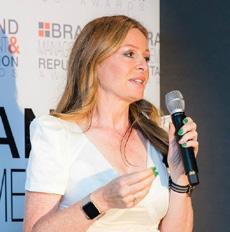

98 DESIGN CENTRE CHELSEA
Where interiors find their voice
102 A ROYAL LEGACY
How King Charles’ charity is shaping the next generation
104 BACKING BRIGHT FUTURES
Ollie Nicholls on the power of bursaries to change lives
108 LETTER FROM IRAN
Lord Lamont’s reflections on a changing Middle East
110 LETTER FROM NORTHERN IRELAND
Lord John Alderdice on the region’s uncertain future





The peculiarities of official paperwork mean I remain "Mrs. Morgan" on a variety of documents. While I’ve long since transitioned away from frontline politics, certain things are easier left unchanged. Much like the title, I continue to navigate multiple roles: non-executive director, media commentator, and now Chair of the Advertising Standards Authority. Each day is a patchwork of engagements - some political, some corporate, and occasionally, the odd foray into public speaking about careers and governance.
One of the great blessings of 2025 is that it will be a year free from general election speculation. For those running businesses, sitting on boards, or simply trying to lead a quiet life, this stability allows for proper planning. The question facing this government, however, is straightforward: can they get a grip? They had ample time to plan, yet the execution appears patchy. A more orderly No.10 is a step in the right direction, and Sir Chris Wormald’s appointment as Cabinet Secretary should provide much-needed discipline in decision-making.
With France in turmoil, Germany facing economic headwinds, and America consumed by its own dramas, the UK has the chance to position itself as a rare beacon of stability. The Investment Summit last October demonstrated that global businesses are still eager to bet on Britain - provided we offer a clear, credible strategy for growth. Whether we seize that moment remains to be seen.
Asubject close to my heart, the education system remains in flux. The government’s curriculum review is underway, and while change is necessary, it must be handled carefully. Young people today need an education that prepares them not just academically, but for the realities of modern work. Meanwhile, renationalisation is back - at least in the world of rail. The hope is that this will finally lead to trains that run on time. Skepticism is healthy, but infrastructure decisions send signals far beyond passenger experience. If we can’t run a punctual rail service, what does that say about broader governance?
Few were surprised that Donald Trump won the U.S. election. Electorates worldwide are fed up with politicians over-promising and under-delivering. The business world has long known that results matter, yet governments have been slow to grasp this principle. Trump’s re-election raises questions about America’s role in global security, particularly in relation to NATO and Ukraine. European nations are finally realising they must invest in their own defence. Whether NATO emerges stronger or fractured will be a defining issue of 2025.
Jon Sopel (Wikipedia.org)

Wikipedia.oeg
highlights global unease. The online world has evolved into an unregulated social experiment, reshaping attention spans, mental health, and even democratic discourse. How we manage its impact on future generations will be a defining challenge for policymakers, tech firms, and parents alike.
IOf there’s one issue I remain deeply invested in, it’s online safety for young people. The Online Safety Act was a significant step forward, but enforcement and adaptation remain challenges. Australia has banned social media for under-16s - an approach that raises logistical questions but
ne of the more surreal moments of my career transition came in late 2019. After a Thursday night spent dissecting the general election, I assumed I was done with front-line politics. By Friday morning, I found myself on Have I Got News for You. By Monday, I was taking my teenage son Christmas shopping when Boris Johnson called. He asked if I would continue as Culture Secretary and move to the House of Lords - so much for my carefully planned exit. Lesson learned: when asked to serve, always be prepared to say yes.

Empower your school community with innovative digital tools that support teachers, engage students, and help every learner reach their potential - an essential solution in today’s world, where technology complements teaching, not replaces it.

WITH A BACKGROUND SPANNING MARKETING, AUTOMOTIVE, AND LEADERSHIP, MATT THOMPSON BRINGS CLARITY, WARMTH, AND HARD-WON INSIGHT TO HIS WORK AT FINITO. HERE, HE REFLECTS ON THE ROLE OF PASSION, THE PITFALLS OF MODERN RECRUITMENT, AND THE QUIET POWER OF MENTORING
Q: What is your educational background and early career history?
A: Growing up, we had to count every penny. I was fortunate to gain an Assisted Place at Loughborough Grammar School, where I made lifelong friends - an opportunity that later led me to study Modern History at UCL. University was free back then, which made a huge difference. My education gave me an early understanding that success is rarely achieved alone; it takes hard work, smart choices, a good team, and sometimes, a little luck.
Q: Was there a clue early on that you’d end up in the sector you’re in?
A: My other lifelong passion, even as a child, was cars and trucks. I had a sizeable Matchbox collection and could identify almost every vehicle on the road - something I can, rather embarrassingly, still do. That early interest stayed with me and later became the foundation of a career in the automotive industry.
Q: Tell us a bit about your career and what’s shaped you.
A: Professionally, I’ve worked across multiple businesses in marketing roles - covering cars, tyres, and trucks -
both in the UK and abroad. My early years with the Chartered Institute of Marketing (CIM) gave me structure and professional confidence. Looking back, I’d say the qualities that shaped my career were simple: curiosity, ambition, a willingness to listen, and the courage to make bold choices - even if they didn’t always work out.

Q: What role has passion played in your success?
A: One constant through all of this was passion. My love for the automotive world provided a thread of continuity across six different organisations and helped me through challenging periods. Passion doesn’t just sustain you - it often powers your best ideas and unlocks the most successful moments.
Q: How do you approach mentoring at Finito?
A: That’s something I try to pass on in my mentoring at Finito. I encourage candidates to identify what really excites them. Passion makes people memorable in interviews. It fuels preparation. And more importantly, it tends to lead to a more fulfilling career. Helping young people find that internal compass is central to what we do.
Q: Did you have mentors in your own career?
A: I’ve had mentors throughout my life - some formal, many informal. In truth, the most valuable mentors weren’t always the ones assigned to me. They were directors, colleagues, even friends, who gave their time generously and offered real-world insight. Mentorship, to me, is about engagement. It’s not about having all the answers - it’s about listening, asking the right questions, and tailoring advice to the person in front of you.
Q: How do you define mentoring success?
A: That’s especially important at Finito, where no two candidates are the same. Everyone arrives with their own
background, ambitions, and challenges. A one-size-fits-all model doesn’t work. The key is patience, and above all, good listening.
Q: What do you think about the state of marketing today?
A: My work in strategic marketing has also shaped how I guide candidates. I believe today’s marketing landscape suffers from an obsession with digital tactics - clicks, impressions, ROAS - often at the expense of the bigger picture. We’ve lost sight of foundational elements like brand development, customer insight, and long-term value creation. “Digital” should be an important part of the story - not the whole story.
Q: What advice do you give to young people interested in marketing?
A: I try to help candidates think about marketing in three parts: first, diagnose the problem strategically; second, build a tailored strategy; and only then, third, execute tactically. Most people jump to tactics, skipping the crucial first two steps. The best marketers strike a balance between analytical thinking and creativity - and that balance is more important now than ever.
shows up in the over-reliance on tools and metrics, and the under-emphasis on customer empathy, long-term thinking, and strategic creativity. For candidates who do understand those things, it’s a real opportunity to stand out.
Q: What common mistakes do you see from young job seekers?
A: One of the most common mistakes I see in early career paths is over-reliance on “easy apply” platforms like LinkedIn or Glassdoor. Clicking a button is not a strategy. If a job really matters, the application process should reflect care and thought. You need to research the company, understand their values, and clearly articulate how you can contribute. It’s amazing how rare that is.
Q: If you could go back and advise your younger self, what would you say?
A: If I could go back and offer one piece of advice to my younger self, it would be this: don’t try to map your entire career in advance. Life doesn’t work that way. Careers evolve, sometimes unexpectedly, and that’s a good thing. I wish I’d travelled more. I wish I’d been more strategic in balancing spontaneity with long-term thinking. But mostly, I’d remind myself: it’s not about knowing every step - it’s about staying curious, staying open, and following what energises you.
That’s still how I try to live - and how I try to mentor, too.
What challenges do you see in the field today?
A: One growing concern is the number of people in marketing without formal training. In the U.S., less than 30% of people working in the field have studied marketing. That
Q: What do you think about the current state of recruitment?
A: Recruiters, too, need to improve. Too often, candidates hear nothing back. That’s not just rude - it damages a company’s reputation. We wouldn’t treat potential customers this way. Why do we treat job applicants differently?
Q: How can tech help - not hinder - the recruitment process?
A: I believe technology, including AI, should help humanise the recruitment process - not replace it. Simple things like acknowledgment emails, realistic timelines, or even basic feedback can make all the difference. Respect goes a long way.



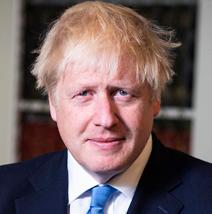
BORIS BIKES AGAIN? Johnson on comebacks, cock-ups, and 2028

KEEPING UP WITH THE JONES Karen Jones on business battles, burnout, and bouncing back

THE SYRIA FILES Baroness Ashton’s advice to young diplomats

FLAGSHIP STORE LONDON
Second Floor, South Dome, Design Centre, Chelsea Harbour, London, UK
london@turri.it / Ph +44 0208 067 9111

IT A LIAN PERFECTION. SINCE 1925
Looking back on it all, I was very lucky. When I was first asked to be Mayor of London, I said no. Why would I do that? I had the safest seat in the country, I was enjoying being an MP, why would I want to? But I was told, no, you would win it - and I did. Being Mayor of London was a fantastic experience. We brought real change to the city - policing, transport, infrastructure, and of course, the 2012 Olympics, which was an extraordinary triumph for the country.
The idea of levelling up, the potential of the UK is everywhere, but the concentration of wealth, power, talent, productivity is overwhelmingly still in London and the South East. And in that respect, the UK is unlike many other major economies - we are much more imbalanced. That is why I wanted to take this vision nationwide. The whole country has talent, but we need to make sure opportunities are spread fairly.
I was very lucky. All politicians have those ‘could have, would have, should have’ moments. But actually, I then spent 15 years in frontline politics - whether at City Hall, the Foreign Office, or Number 10. I was able to do a lot of the things I really cared about, so I can’t complain.
They basically thought, well, old Johnson bangs on about it so much, and he seems to have a view about what it should be - let’s give him a go. Brexit was in deadlock when I took over in 2019. We told the public we were going to deliver it, but we couldn’t, and Parliament wouldn’t do it. We had basically got ourselves into
a total jam. So they turned to me, and we got it done.
The problem now is that today, you’ve got an absolutely appalling situation - classic situation engendered entirely by this Labour government - in which the bond markets are starting to demand ever higher yields on British gilts because they can see no clear economic strategy.
It’s a wonderful job. But in politics, it’s a Darwinian process. If you fail to manage your backbenchers, as I probably did, you’re going to come a cropper. You’ve got to have all the things lined up.
People ask me if I’ll ever return to frontline politics, but my chances of becoming PM again are about as good as being blinded by a champagne cork, locked in a disused fridge, or decapitated by a frisbee.
That said, it’s the job of people like me to try to be useful. If I can contribute ideas, if I can help push forward the things I believe in - then that’s what I’ll do.
The only point that the Conservatives need to make, and Kemi needs to make between now and 2028, is that if you want to end this socialist madness, this craven left-wing high-taxing nonsense, there is only one way to do it, and that is to vote Conservative.
I like Kemi Badenoch’s intellectual impatience. I think she’s got a lot of energy. Let’s face it, she’s got a massive opportunity.
People keep asking about Reform UK and Nigel Farage, but my view is, when you’re in a political contest, you don’t talk about your rivals. You talk
about yourself and what you can offer the country.
I competed against the party you mention in one guise or anotherwhether it was UKIP or whatever - for decades as an MP. They didn’t even stand against me in London, I don’t think, and they were on zero per cent or less than 3% when I was PM. Even right at the end, they were nowhere. Don’t talk about them, don’t escalate them.
We should talk about ourselves. What are we going to do? How are we going to fix the immigration problem? What are we going to bring to government? The UK depends hugely on international investment in our debt. The bond markets can see there is no real economic plan from this government. That’s where Conservatives are strong, and that’s where we should be thumping every single day.

The Makin Review, which led Justin Welby to resign as Archbishop of Canterbury in October, is a horror story. John Smyth beat young men with ferocious violence over several decades. Smyth’s victims suffered appallingly and many continue to suffer. But the editorial comments on Welby in the last edition of Finito are unfair, particularly about the necessity to ‘face up to the reality that the Archbishop of Canterbury felt the appearance of his function was more important than the function itself’.
Few people who know him would doubt that he worked extraordinarily hard, did his best to hold together an unholdable-together Church of England and Anglican Communion, and had a very high view of his personal responsibility in everything he did.
Welby himself has acknowledged, most recently in his interview with Laura Kuenssberg, that he ‘got it wrong’, ‘needed to resign’, is ‘utterly sorry and feel[s] a deep sense of personal failure’. He also apologised immediately for the idiotic ad lib comment in the House of Lords that his diary secretary was the one to pity: stung by his vilification to make this valedictory speech, he should have stuck carefully to a proper script.
Senior churchmen – with the admirable exception of the Bishop of Dover, Rose Hudson-Wilkin – have not defended him from being on the receiving end of limitless blame and opprobrium. In their behaviour towards him they seem anxious to protect the institution of the Church– ironically an accusation that the Makin Review makes about
the Church’s conduct – rather than to behave justly.
Makin made criticisms of Welby under three headings: first, that having known Smyth in the 1970s he must have known what he was up to; second, that he did not enquire vigorously enough about the investigation into Smyth once the horrible saga was reported to him while Archbishop in 2013; and third that he should have agreed to meet victims earlier than he did.
The first of these is speculative. Welby attended several of the Iwerne camping retreats at which Smyth was one of the leaders. As the Smyth victims rarely told anyone what was happening it is perfectly credible that others around at the time did not know – especially at the Iwerne camps where apparently Smyth did not abuse boys as he did on the fringes of Winchester College. The Makin Review concludes at one point that ‘on the balance of probabilities, it is the opinion of the Reviewers that it was unlikely that Justin Welby would have had no knowledge of the concerns regarding John Smyth in the 1980s in the UK’; but later concedes: ‘That is not the same as suspecting that John Smyth had committed severe abuses.’
The second rests largely on Makin’s finding that, although Smyth was reported to the police in 2013, this report was inadequate – it was just a ‘referral’ – because those reporting were not given a crime number. Makin noted that Welby was told by his staff in 2013 that ‘the matter is being dealt with, the Police have been notified and a letter has been sent to the appropriate Bishop in Cape Town’ (where Smyth now was living). With the benefit of hindsight
Welby says that he ‘should have pushed harder’. But it was reasonable and proper for him, having been told that it was in police hands, to expect them to get on with it without interference. Welby should have met victims earlier, and was badly advised that to do so might get in the way of the police investigation. Some feel a sense of personal betrayal on that count. He should not have had to resign, but it became almost inevitable on the morning of an avalanche of adverse editorials and opeds. He was then treated disgracefully, above all by The Christian Society which publicly announced that it could not accept the Welbys’ personal Christmas donation, as though Welby were himself Smyth. He was not responsible for the horrors inflicted on Smyth’s victims, and he did not cover up. His resignation should be regarded as a reflection of his integrity rather than the reverse.
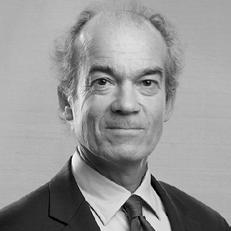
THE CEO OF CITYWEALTH GIVES HER TIPS ON HOW TO BE A CEO – AND HOW NOT TO BE
BUSINESS: A BATTLE WORTH FIGHTING?
Let’s start with a scene: the Luddites raging against the machine, plug-pulling protestors, the endless battle of business in a world that rarely plays fair. If you’ve ever been in business, you know this fight intimately. It’s a game of endurance, resilience, and - let’s be honest - a touch of madness. As I celebrate twenty years as a founder, it felt time to deconstruct the mirage that it’s all fun at the top.
THE POOL OF HELL: WHY YOU SHOULDN’T JUMP IN THE DEEP END
You wouldn’t leap into a pool if you couldn’t swim, would you? Yet, time and time again, bright-eyed entrepreneurs hurl themselves into business ventures without the lifeline of deep pockets or even a basic understanding of cash flow. I can attest to this being me. And so, they drown. The survivors? They learn the discipline of business, that the tax man is all powerful, that paperwork can gather dust, but it won't go away and that preparation along with permanent, risk horizon scanning helps. As well an acute awareness that even those with deep pockets can lose it all. Fearlessness, unreasonable and unfounded positivity and a large dose of stupidity also help.
In the words of Mike Tyson, “Everyone has a plan until they get punched in the face.” It is a famous and perhaps throw away quote now but being in business sometimes feels like being repeatedly punched in the face. And business will punch you. Hard. The key? Get up. Again and again, wipe the
blackboard clean and prepare a new set of chalk. You learn to structure your business like a military operation and learn to know when to retreat -you can't win 'em all, and understanding that “collateral damage” often means staff morale, failed products, or investments that should have stayed ideas. A sound bit of advice a coach once charged me a lot of money for was "have less ideas." I only wish I could have listened.
Malcolm Gladwell and Thucydides knew it - humans love a good story, especially if it justifies failure. Sales not happening? It must be the product. Database is wrong? No, it’s the software not the lack of care. No one asks, “What if it’s me?” Instead, blame is shuffled like a deck of bad poker cards. The truth? Sometimes the problem isn’t what you think. Instead of assumptions, just say, “I don’t know. Let’s find out.” I read a book called The Tools some time ago and it was eye opening in that humans have a predilection to find an answer to every situation - to fit a round story into the square hole. Once you know this, it means research and investigation into almost everything as well as "ask the client" feedback forms, then, actually doing something about it, not just listening to another set of stories to maintain inertia. How anyone actually makes any money in business can sometimes be one of life's great mysteries.
Ah, the siren call of innovation. Businesses pile up software, systems, and shiny new tools like dragon hoarders, convinced
they’ll use them all. They won’t. The mirage of the CRM system, the analytics, the payment software, all golden ground to improve your business. Well, that would be the case if they didn't have downtime; such complicated ways of working that expensive talent and skills are what you really need, not more software and integrations that rarely work together. The nonsense that some of the software systems present as fact is also one of life's great mysteries. You realise that they, as you, are indeed, just running a business with all the punches that it entails.
You start with wild dreams, JV partnerships that never materialise, and a belief that funding is the answer. But soon, you’re just another worn out business leader, chasing money, battling taxes, and realising that cash flow is a cruel mistress. Feast and famine cycles drain creativity. Even your accountant, who should be an ally, simply asks, “Are you doing this again next year?” (Translation: Do you still have the stomach for it?). Founders are cool right? Well, get a bunch of them in a wine bar and they all sing from the same song sheet entitled 'it's lonely at the top'. There are not many people who understand the balancing act, the plates spinning and how to catch them when they frisbee off. Clue, it usually entails scraped knees.
Business is personal. Shutting down a product people love? Heartbreaking. But some things don’t work, and sentimentality is a luxury you can’t afford although often afford it you do, for way longer than makes any sense. The same goes for some
staff ideas - brilliant on paper, costly in reality. Worse still, when things go wrong, responsibility is rarely claimed, but pay rises and bonuses are still expected. I read an interesting article in Harvard magazine some years ago which nailed this exact problem. The essence was that once an investment in a product hits a tipping point it's hard to turn back because of the money that will be 'lost' and emotional investment, but they recommend, losing it immediately, cut your losses and get out as fast as you can. Take the hit and get over it. Fine to say but relighting the fire in a team who see it as personal failure, takes a lot of pushing the rock up and over the hill again.
Ever wonder why artists are remembered but business people aren’t? Perhaps because success in business is a mirage, constantly shifting, never truly within grasp. The assumption that money flows endlessly - ask Al Pacino or Muhammad Ali - has seen even the greats go broke. And women? They face a different battlefield almost, it could be called modern-day slavery while they are apparently 'having it all' - working all hours god sends and then balancing the burden of home with children, animals and elderly relatives, and still with unequal pay. Founders of course can create their own schedule but paying yourself does come with ups and downs as you ride the business pony and sometimes have to tighten your belt. It can also kill relationships, make you exhausted and never seem to have an end point. I always say, 'it will still be there in the morning' of working late. And if that work isn't then, sure enough some other work will soon arrive.
So, what’s the key? Structure. Reputation. A ‘good enough’ point, where perfection gives way to practicality. I learned that at London Business School and it is
something I live by. Don't endlessly fiddle with projects, get them out and refine them along the way. When dealing with staff, listen - not just to the loudest voices but to all. And always remember to laugh at yourself, even I think physically laughing can reset a mood. Make friends with fellow business owners in the same boat for morale support and to provide key advice that you can trust implicitly at key moments of frustration or difficulty. Have long lunches with them with plenty of good wine so that the boat rights itself. I also flip a coin if I find myself procrastinating. A decision is a decision, it is off the desk and you can always revisit it, if the decision was crap. Celebrate. It's easy to get too much tunnel vision, to feel like you are always in the weeds. A walk outside to the local park, a few hours in a bowling alley or on a mini golf course can really change the atmosphere and help you see people in a different light - it lifts the darkness.
I have found women, generally, not to be very good at lunch, always late to arrive, leaving early and eating not very much. They can really learn a lesson from men who have generally thought they've had a very good day in business if they have a long lunch with a few glasses of something. They really know the marathon not a sprint phrase. Problems are natural in business but giving them plenty of time is also helpful. What do I mean by that? Buy time, say you will investigate and double any response time so instead of tomorrow say next week and usually the problem will have the heat taken out of it or solve itself in a way that you can accept. I did exec' management at Said Business School and was always fascinated by their classification of problems in three ways. Small, medium and large. Small - you can solve it. Medium, you need a third party to solve it and large, you probably will never solve it and nor will anyone else. Third parties or suppliers can create their own problems, but I find sticking to them generally a better method than the Goldman Sachs idea that you change
all your advisors every 5 years. Strength in family. Although I am not Goldman Sachs, nor never will be, so best not listen to me.
After twenty years in the trenches, one thing is clear: business is not for the faint-hearted. It’s a relentless cycle of wins and losses, highs and lows, breakthroughs and breakdowns. The mirage of success shifts constantly, and the reality is often far grittier than the polished surface suggests.
But if you’re still standing - if you’ve learned to take the punches, adapt to the chaos, and let go of what no longer works - then maybe, just maybe, it’s a battle worth fighting. Not for the money, the title, or the illusion of control, but for the challenge itself. For the sheer, maddening, exhilarating test of endurance. Because at the end of the day, the only real victory in business is the ability to keep going.
It’s a relentless cycle of survival, from forgetting friends and family birthdays to battling bills, fighting fires, and navigating the unbearable weight of responsibility. A key moment not to mention here, of course, was the Covid shut downthrowing a totally unreasonable set of extra problems at one's business. But, despite that and all my complaints, if you’re still in the game, you’ve already won the first battle: you’re still standing. And sometimes, that’s good enough.
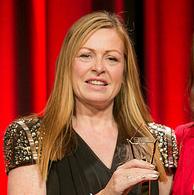
THE LEGENDARY DIPLOMAT SURVEYS THE AFTERMATH OF CHANGES IN SYRIA AND HAS SOME ADVICE FOR PEOPLE STARTING OUT FOR ENTREPRENEURS TO KEEP AN OPEN DIALOGUE

Diplomacy is both an art and a science, requiring patience, pragmatism, and, above all, an unwavering commitment to peace. Nowhere is this more evident than in Syria - a conflict that has spanned more than a decade, reshaping the Middle East and challenging the very principles of international diplomacy. For young diplomats, Syria represents a sobering lesson in the complexities of global affairs, the limits of intervention, and the enduring necessity of dialogue. Many of the challenges we see in
Syria today stem from what I would call unfinished business. I recall my meetings in Damascus over a decade ago with President Assad, discussing the issues Syria faced and beginning the process of engaging with European and transatlantic colleagues on how to support the people’s demands for change. What followed, however, was fragmentation and disintegration. What started as calls for reform quickly descended into conflict, with factions emerging, dividing the country into battle zones. For young diplomats, one of the first lessons in dealing with
a crisis like Syria is the importance of understanding the situation before drawing conclusions. As I often tell those entering this field, take your time to observe, to listen, and to analyse before determining the best path forward. Syria is not an isolated crisis. It has significant implications for the broader Middle East. Its proximity to Lebanon, and the influence of Hezbollah, ties its stability to the interests of Iran and the wider region. The disruption of supply chains, the movement of armed groups, and the involvement of various external powers - from Russia
to Turkey - make Syria not just a local conflict but a geopolitical flashpoint. If you look at where key players stand, you see a shifting balance of power: Israel, Iran, Russia, and the United States all with vested interests, all calculating their moves. But what has been missing from many discussions is the role of Europe. Where does the European Union fit into this puzzle? What should be its approach, and how can it engage constructively in the future of Syria?
One of the stark realities of diplomacy is that crises do not remain contained. The ripple effects of a conflict like Syria extend far beyond its borders. The humanitarian crisis alone has forced millions into displacement, creating a refugee crisis that has affected neighbouring countries and beyond. Terrorism, economic instability, and moral responsibility all come into play. No country can afford to turn away from Syria without consequence. The notion that problems in distant regions can be ignored is a fantasy. Eventually, they will reach all of us in some form - whether through migration, security threats, or economic ramifications.
Another key aspect missing from many conversations is the role of multilateral systems. Where is the UN in all this? What influence does the Organisation for Security and Co-Operation in Europe (OSCE) have in shaping Europe’s policy on Syria? And what of NATO and other international coalitions? These institutions, built to uphold international order, must find ways to remain relevant. I often describe them as tankers at sealarge, slow-moving, covered in rust and barnacles, yet vital in carrying the ideals and values that underpin global stability. In contrast, we also have the smaller, more agile coalitions that can respond rapidly to crises but often lack longevity. Diplomacy needs both - the weight and experience of established institutions and the speed and flexibility of new alliances that can address emerging challenges. The world is changing, and with it, the
way we approach foreign policy must evolve. The war in Ukraine has already demonstrated how historical alliances are being reassessed. Countries that were once reliable partners may now choose to pursue their own interests differently. We can no longer assume that the coalitions that once supported Western ideals will continue to do so unchallenged. In Syria, and in broader Middle Eastern affairs, this shift is particularly evident. Nations are recalibrating their priorities, sometimes stepping away from traditional alignments, and this requires a fresh diplomatic approach - one that acknowledges these changes and seeks to build new, effective partnerships.
"SYRIA SHOULD SERVE AS BOTH A WARNING AND A CALL TO ACTION. IT IS A REMINDER OF WHAT HAPPENS WHEN DIPLOMACY FAILS, WHEN DIVISIONS ARE ALLOWED TO FESTER."
For young diplomats, Syria should serve as both a warning and a call to action. It is a reminder of what happens when diplomacy fails, when divisions are allowed to fester, and when human suffering becomes secondary to political manoeuvring. But it is also an opportunity - a chance for a new generation of diplomats to engage with greater urgency, deeper understanding, and an unwavering belief in diplomacy as the most powerful tool for change.
The challenge ahead is not just about resolving the immediate crisis in Syria but about preventing future conflicts of this nature. This requires investment in

Unsplash.com
diplomacy at every level, strengthening international institutions while also fostering new networks of cooperation. The task is not simple, and the timeline is long. Syria’s reconstruction, whenever it truly begins, will take generations. Trust, once broken, is not easily restored. Diplomacy is not about quick fixes but about sustained commitment. It requires perseverance, the ability to stand firm in the face of adversity, and an unwavering focus on the people whose lives depend on these efforts.
I urge those entering the field of diplomacy to see Syria not as a hopeless case but as a test of their resolve. The path to peace is always complex, but it is never impossible. Diplomacy remains the best hope for Syria and for the world. The question is whether we are willing to invest in it for the long term, knowing that the rewards may not come in months or years, but decades.

THE SUNNINGDALE HEADMASTER DISCUSSES HOW WE MIGHT RETHINK THE TYPICAL SCHOOL DAY TO BETTER PREPARE OUR CHILDREN FOR THE WORKPLACE
Educationis at a crossroads. In schools across the UK, we are faced with increasing demands, limited resources, and a system that seems to be constantly shifting direction. Yet, amidst these challenges, one thing remains clear: we need to reimagine the structure of the school day to better serve our students, teachers, and society as a whole.
One of the most pressing issues in education today is time - or rather, the lack of it. Our students have packed schedules, and yet we struggle to fit in everything they need, both academically and beyond. I have long been fascinated by the idea of extending the school day, an approach trialled in Wales with promising results. If state schools finished at 4pm instead of 3pm, and that extra hour was dedicated to sport, music, or other extracurricular activities, it could be transformative.
“AT MY SCHOOL, WE DEDICATE AN HOUR AND A HALF EACH DAY TO SPORT.”
At my school, we dedicate an hour and a half each day to sport. The benefits are tangible - better physical health, improved concentration, and higher levels of engagement in the classroom. Imagine if every student in the country had that opportunity. Not only would it give them access to activities they currently don’t have time for, but it would also support working parents, alleviating the pressure
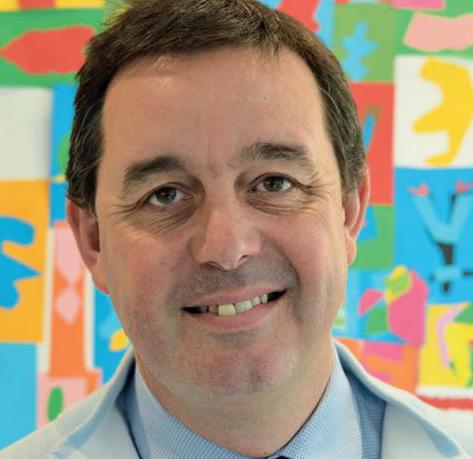
of what to do with their children after 3pm.
Of course, any proposal to extend the school day raises a fundamental question: how do we pay for it? Schools are already struggling with funding, and additional hours would require more resources, staff, and infrastructure. The unions would undoubtedly have concerns, and the government would need to commit substantial investment. Yet, the longterm benefits - healthier, more engaged students, and a system that better accommodates modern family lifesurely make it an idea worth exploring. Contrast this with what is happening in some schools today. In my area, a
local comprehensive has had to cut its school day down to 1pm due to budget constraints. While there are after-school activities, they are no substitute for a full academic day. If we are serious about raising educational standards and supporting families, we should be moving in the opposite direction - not reducing school hours, but making them more meaningful and effective. Another challenge we face in education is recruitment. There is always a shortage of good teachers, particularly in certain subjects. Teaching is not an easy profession - it requires long hours, dedication, and a genuine passion for helping young people. Yet, for all its
challenges, it remains one of the most rewarding careers imaginable. A great teacher is not just someone who delivers a syllabus; they inspire, they ignite curiosity, and they equip students with the tools they need for life beyond school.
“TEACHING IS NOT AN EASY PROFESSION - IT REQUIRES LONG HOURS, DEDICATION, AND A GENUINE PASSION
We need to do more to encourage the next generation to consider teaching as a viable and attractive career path. This starts with improving teacher training, providing better support, and ensuring that schools are environments where talented educators want to stay. If we don’t address this soon, we risk losing some of our best teachers to burnout or disillusionment.
One of the things I value most about working in a small school is the flexibility it offers. Unlike in many larger institutions, we don’t rigidly separate students by year group. Instead, we use a ‘ladder system’ that allows boys to progress at their own pace, moving up as they develop individually. This approach fosters a more tailored education, ensuring that no child gets left behind.
Sadly, individuality is increasingly under threat in education. Schools, particularly in the state sector, face mounting regulations and standardised expectations that limit their ability to innovate. The system is bogged down by ever-changing policies, with each new education minister bringing a different set of priorities. What we lack is a long-term vision - a

coherent, well-researched strategy that isn’t abandoned every few years in favour of the next political trend.
Perhaps the most frustrating aspect of the education system is the lack of consultation with those who actually work in schools. There are brilliant people in education - teachers, heads, support staff - who deeply understand what students need, yet they are rarely given a voice in shaping policy. Instead, we see sweeping changes implemented from the top down, often without a clear understanding of how they will play out in practice.
“IT SHOULD BE A PLACE WHERE THEY DISCOVER THEIR PASSIONS, DEVELOP CHARACTER, AND GAIN THE SKILLS THEY NEED TO NAVIGATE LIFE BEYOND THE CLASSROOM.”
Rather than reacting to the latest fad, we need to step back and ask fundamental
questions: What does a great school day look like? What skills should students leave school with? How can we create an education system that nurtures curiosity, resilience, and independence, rather than just focusing on exam results?
At the heart of all this is a simple truth: education is about more than just academics. A school should not just be a place where students memorise facts and pass exams. It should be a place where they discover their passions, develop character, and gain the skills they need to navigate life beyond the classroom.
This is why I believe in finding a child’s ‘spark’ - that one thing that truly excites them. Whether it’s science, music, sport, or drama, school should be a place where every student gets the chance to explore their interests. That’s why I would love to see more opportunities embedded within the school day - gardening, sustainability projects, creative workshops - things that enrich a child’s experience beyond the core curriculum.
We may not have all the answers yet, but what’s clear is that the current model is not working as well as it could be. It’s time to be bold, to rethink the school day, and to ensure that our education system truly serves the needs of students, teachers, and families alike.
Let me start at the beginning. The book I have been writing did not begin as a plan, nor as a long-held ambition, but as a nudge from a good friend. When I was Secretary of State for Education, I met Neil Blair, an extraordinary literary agent whose reputation in publishing is legendary. His stable includes J.K. Rowling, and he was instrumental in shepherding her career from debut author to global phenomenon. Over coffee one day, he suggested I should write a book. “Get me a contract,” I quipped, and within weeks, he had.
HarperCollins won the bidding war, and Charlie Redmayne, its CEO, saw something in my story worth telling. But first, I had to get permission. As a sitting Secretary of State, I had to run the idea past the Cabinet Secretary, Simon Case. Initially hesitant - after all, politicians usually wait until they leave office to pen memoirs - he later agreed. “This is a remarkable story,” he said. “A Kurdish boy, arriving in Britain with no English, growing up to serve in government. It’s a testament to this country.” The only stipulation? No politics.
That’s how I found myself revisiting the past: the escape from Iraq, the cold pavements of my first British winter, and the long road to Downing Street. It became a book about resilience, the kindness of strangers, and the importance of education.
I was born into a country ruled by fear. My father, a businessman, refused to join the Ba’ath Party, Saddam Hussein’s nationalist political machine. That refusal cost us dearly. In Iraq, even innocent conversations at the breakfast table could be dangerous. At school, children were asked what their parents
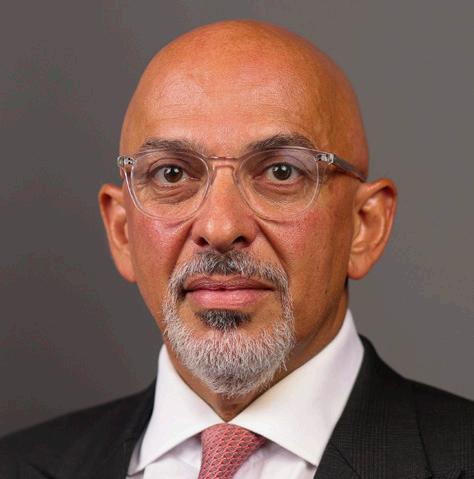
had said over morning tea. A careless answer - mentioning discontent with the regime - could lead to disappearances.
So we fled. Arriving in the UK as a child, I had no idea what awaited me.
My first concern, like any eleven-yearold, was leaving my friends behind. The cold was shocking, the language alien, and I found myself sitting at the back of a classroom, unable to understand a word. Yet resilience is a funny thing. Children adapt. Within a year, I spoke fluent English. Within two, I was debating history with my teachers. Looking back, I see the fine margins between success and struggle. A childhood friend of mine was, by all measures, more talented than I wasbrilliant, charismatic. Yet, his life took a
darker turn, consumed by addiction. His story could have been mine. These are the moments that make you appreciate how easily life can shift in one direction or another. It reinforced my belief in the power of education and mentorship. We talk a lot about social mobility, but often, what it really comes down to is whether someone takes an interest in you at the right moment.
My father was a dreamer, a trait that both inspired and troubled him. He was the type of man who would wake up believing in an idea so passionately that he would bet everything on it. One such idea was a revolutionary cleaning product - an American invention that promised to clear drains without chemicals. He was convinced it was the
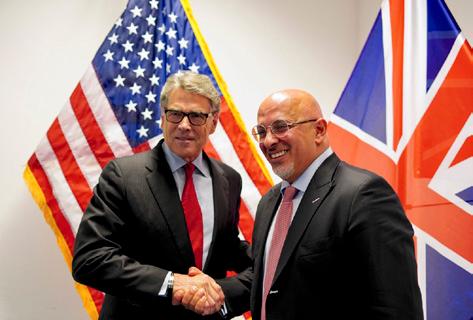
next big thing. He remortgaged our home, invested everything, and thendisaster. The product failed. The house was repossessed.
Yet, without his dreams, I wouldn’t be here today. His decision to leave Iraq, to take the risk of starting over in a foreign land, is why I stand in Britain today, privileged to have served my country. This is why I believe in entrepreneurs - because I saw firsthand that without risk-takers, the world stands still.
When I was young, I was drawn into the orbit of Jeffrey Archer. If he had not been a politician, he would have made an extraordinary football scout - he had an eye for talent and an instinct for leadership. His house in Lambeth became a hub for young, ambitious Conservatives. Among them were people who would go on to become cabinet ministers, including Priti Patel and Robert Halfon.
Archer himself was a complex character, deeply flawed but undeniably charismatic. Writing about him was tricky. I knew I had to be honest, and so, before publishing, I sat down with him. I wanted him to read what I had written. To his credit, he didn’t change a single word.
Boris Johnson was the politician who changed my career. While Theresa May
first appointed me to ministerial office, it was Boris who elevated me to cabinet. He saw something in me, and I will always be grateful for that.
“YOU’RE GOING TO BE MY BEAVERBROOK,” HE SAID. “YOUR COUNTRY NEEDS YOU.”
I remember the phone call vividly. It was a weekend, and my phone flashed with “No.10” on the screen. “Yes, boss,” I answered. “You’re going to be my Beaverbrook,” he said. “Your country needs you.”
He asked me to lead the vaccine rollout, a task of enormous pressure. The role came with a warning - friends texted me to say, “Do not take this job. It will destroy your career.” But for me, public service was never about selfpreservation. We were in the middle of a crisis, and I had seen first-hand how good Britain is at responding to challenge. What followed was one of the most intense periods of my life, working with extraordinary people, including Brigadier Phil Prosser, who ran military logistics for frontline operations. He
taught me the principle that “lateness costs lives,” a motto that drove us to deliver vaccines at a record pace.
Writing about my resignation from cabinet was painful but necessary. I wanted to set the record straight. Mistakes were made, but not in the way many assumed. The issue with my tax affairs arose from decisions made over 24 years ago regarding my company, YouGov. HMRC concluded that I should have structured my shareholding differently. I accepted their ruling, paid the fine, and moved on. But in politics, perception is everything. I should have been more explicit about the settlement from the outset.
“IF YOU DON’T TELL YOUR STORY,” HE SAID, “SOMEONE ELSE WILL TELL IT FOR YOU.”
Sir Brandon Lewis advised me to write about it. “If you don’t tell your story,” he said, “someone else will tell it for you.” So I wrote, not to rewrite history, but to present it truthfully.
If there is one lesson from this book, it is that there are no superhumans in life or politics. Whether it’s my father, my friend who lost his way, Jeffrey Archer, or Boris Johnson, they were all deeply human - capable of greatness but also of mistakes. And that’s what makes public life fascinating. We shouldn’t demand perfection from those who serve; we should demand integrity, resilience, and a willingness to learn.
As I put the final words on the page, I reflect on one thing above all: I am grateful. For this country, for its opportunities, for the people who believed in me when it mattered most. And for the chance to tell my story, in the hope that others might find in it something of their own.
I spent nearly two decades in real estate, working with some of the biggest names in property development, but my transition into the world of e-scooter racing has been one of the most exciting shifts in my journey.
I started my career working with British Land, Aviva, and Royal Mail before joining Blackstone. It was an intense and challenging time, but after a few years, I felt the pull toward entrepreneurship.
I wanted to create an accessible way for people to rent in London, especially those who struggled with affordability. That’s what led me into co-living - micro-apartments designed with financial accessibility in mind.
Despite the challenges - planning, politics, and everything in between - I persisted. I built a company managing 500 units, but ultimately, my cofounder and I parted ways. It was a tough learning curve, but I took the lessons and kept moving forward.
Balance Out Living was my next venture, built on the pillars of wellness, sustainability, and community. I had worked myself to the bone and felt completely imbalanced. I wanted to create spaces where people could live their best lives - physically, financially, and socially.
We had backing from Oaktree Capital, but by the end of 2022, they changed their fund strategy and pulled their investment. Suddenly, I was at a crossroads.
I cycle to work regularly, and I started to explore electric vehicles as an alternative. That’s when I came across e-scooter racing on Instagram. It was

fast, exciting, and - most importantly - gender inclusive. I saw a woman standing on the podium, competing against men, and thought: this is something different.
“I CAME ACROSS E-SCOOTER RACING ON INSTAGRAM. IT WAS FAST, EXCITING, AND - MOST IMPORTANTLY - GENDER INCLUSIVE.”
I went down a rabbit hole, researching the sport, and eventually connected with the founders - veterans from Formula E, Le Mans, and Formula One. At first, they thought I was just interested in sponsorship. But I told them, no, I want to own a team.
By December 2023, my team, XPRS Racing, took the starting line in Dubai, competing against teams from the UK, US, Middle East, India, and the Far East. One of the other UK teams was owned by Anthony Joshua. I was in great company.
XPRS Racing is built on inclusivity, integrity, and authenticity. It’s not just about winning races; it’s about building a movement.
E-scooter racing is still in its early
days, but it’s gaining traction fast. We were meant to race in 2024, but geopolitical tensions put events on hold. Now, we’re looking to scale up in 2025.
I want to establish a UK Championship, with grassroots events around the country leading to a major final in London. I’m in talks with venues like King’s Cross, the ExCeL Arena, and even sites near Buckingham Palace. This needs to be a sport for everyone, from commuters to professional athletes.
At the elite level, our scooters hit speeds of 140 km/h. These aren’t just rental scooters - they’re highperformance machines. But we’re also creating an entry-level category for new riders, racing at 80-90 km/h, so there’s a clear progression path.
There’s a stigma around e-scooters. People associate them with street crime, reckless behaviour, and poor infrastructure. That’s why regulation is so important. The federation is working with governments to implement safe policies for city use.
Paris banned rental e-scooters because they weren’t properly managed. But if done right, micro-mobility can be a game-changer for urban transport. We need better infrastructure and clear rules.
As a team owner, I generate revenue through sponsorships, prize money, and merchandising. We narrowly missed the podium in Dubai, but we were competitive. Sponsorship is a big focus moving forward. We’re already in discussions with major brands.
Some of my fellow team owners are social media influencers, but for me, this isn’t a side project - it’s a serious business and a long-term passion.
I’m also speaking with a former Team GB rugby player and other influential athletes who align with our values. This isn’t just about racing - it’s about changing the narrative around

inclusivity and sustainability in sports. Could e-scooter racing be an Olympic sport one day? Probably not. The Olympics favor non-powered sports. But freestyle kick scootering is being lobbied for inclusion, which is promising.
“MY REAL VISION IS TO MAKE E-SCOOTER RACING A MAINSTREAM PHENOMENON.”
My real vision is to make e-scooter racing a mainstream phenomenon. Formula E started as an experiment and is now a major motorsport. We’re at that same starting line.
I come from a working-class immigrant family. My parents sacrificed a lot to give me opportunities, and now I want to create something that opens doors for others.
That belief extends to my team. My riders aren’t just competitors; they’re role models. They show young people that they can break into this sport, regardless of their background.
As I reflect on my journey, I know this is just the beginning. If we can build a sport that is fast, exciting, inclusive, and sustainable - why wouldn’t we?
From real estate to e-scooter racing, I’ve always tried to stay ahead of the curve. And as XPRS Racing gears up for its next challenge, I’m not slowing down anytime soon.
Ten Thousand Hours
Inever set out to be a financial adviser. As a teenager, I had no grand vision of guiding people toward financial security. If anything, I entertained the usual childhood ambitions - actor, teacher, police officer, even surgeon. But life has a way of shaping us, often through hardship, and my journey into financial planning was no exception.
I was just nine years old when my father passed away from cancer. He was a successful restaurateur, part of the renowned Forte family, and ran a hotel and two restaurants in Westonsuper-Mare. But despite his success, my family was left in financial ruin when he died - no life insurance, no will, no financial planning. My mother was made bankrupt, and from that moment, financial insecurity was woven into the fabric of my life.
At 13, I was helping my aunt run the family business, trying to keep things afloat. Those early years instilled a work ethic in me that never left. I went to university, still unsure of my path, but upon graduation, the realities of needing to pay off my student overdraft led me to take a temporary admin role at an IFA firm. That was when everything clicked.
I quickly realized that my family’s financial struggles were not unique. There were countless others like my father - hardworking, successful
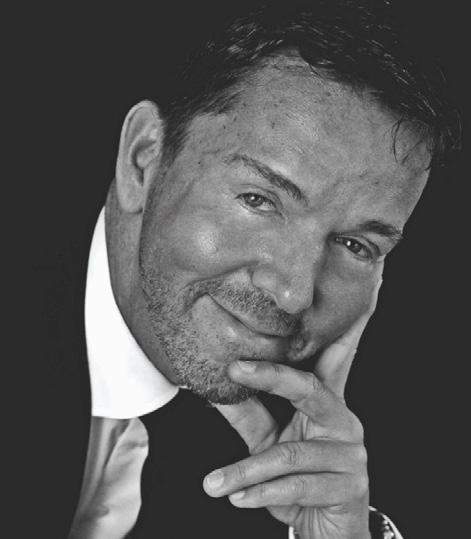
even, but wholly unprepared for life’s uncertainties. The financial world, at the time, was transactional. The focus was on commissions, on selling products rather than providing advice that truly mattered. That didn’t sit right with me.
After four years of working under someone whose approach to financial planning was purely sales-driven, I took a leap of faith. It was a terrifying year - getting married, buying a house I couldn’t afford, and welcoming twins into the world - all while walking away from the security of employment to
start my own business. I set up shop in a converted garage next to my house with a radical idea: financial planning should be about long-term relationships, service, and integrity, not transactions.
It was an uphill battle. A 25-year-old preaching about customer service and holistic planning in an industry built on commissions and quick sales was met with skepticism. But I stuck to my principles. I introduced a guaranteed service charter - something unheard of at the time. Slowly, people started to listen. Thirty years on, the industry
has changed, and while I won’t claim to be a thought leader, I take pride in knowing I was ahead of the curve.
One of the most pivotal moments in my career came two years after starting my firm. I finally convinced my stepfather - my mother had remarried - to become a client. It took courage. No one likes the thought of rejection, especially from family. But he agreed, and in December 1991, we set up his financial plan. Two months later, he was diagnosed with an aggressive form of stomach cancer. Within four weeks, he was gone.
It was a devastating blow, but it reinforced my purpose. I had seen firsthand what happened to families left unprepared. My mother had lost everything after my father’s death. Now, here I was, watching history repeat itself. That solidified my passion: ensuring that no family suffered the way mine had.
“62% OF
People don’t like to think about their own mortality. It’s why 62% of the UK population doesn’t have a will. We delay, believing we have time. But financial planning isn’t just about preparing for death; it’s about making life better now. It’s about security, education, choices. I help clients set up trust funds for their grandchildren because I know what it’s like to have no lasting legacy. I ensure people understand their finances so they can enjoy their lives, not just scrape by.
The lack of financial education in schools is something that deeply frustrates me. We teach algebra, but not how to manage debt. We expect
young people to sign up for mortgages and pensions without understanding interest rates or inflation. When I left university, no one had ever explained the difference between a repayment and an interest-only mortgage to me - I had to figure it out myself. That’s unacceptable.
Financial illiteracy isn’t just an inconvenience; it has real consequences. I meet clients who proudly tell me they’re earning 2% interest on their savings while holding debts that cost them 7%. They don’t realize that simply reallocating their funds could transform their financial future. People rush into investments - buy-to-let properties, stocks - without understanding the risks, drawn in by hype and emotion rather than logic. And then, when things go wrong, they find themselves in financial distress, forced to rely on family or the state for support. It doesn’t have to be this way.
The truth is, good financial planning isn’t about picking the right stocks or chasing the highest returns. It’s about adaptability. Life changes - marriages, divorces, new jobs, redundancy, illness. What works today may not work tomorrow. I operate on what I call the “1-100 Rule” - in one year, your financial situation will be 100% different than it is today. That’s why ongoing advice matters. It’s not enough to set up an investment or a pension and forget about it. Plans need to evolve.
I recently dealt with a client whose investment, sold to them by a major bank in 2011, had dwindled to just 25% of its original value. No one had checked in. No one had advised adjustments based on inflation, market shifts, or their changing needs. They now face running out of money within four years. This isn’t an isolated caseit’s a systemic failure of transactional financial services.
That’s why I advocate for continuous, proactive financial planning. A simple concept like the “safe withdrawal limit” can make all the difference. If a client sells their business and needs to turn capital into income, we work on a sustainable 4% withdrawal rate - enough to maintain their lifestyle without depleting their savings. Factoring in inflation, market performance, and long-term sustainability is crucial. Yet, so many people don’t receive this kind of structured guidance, and they suffer for it.
“IT’S NOT ENOUGH TO SET UP AN INVESTMENT OR
A PENSION AND FORGET ABOUT IT. PLANS NEED TO EVOLVE.”
I’m on a mission. Not just to advise my clients, but to change the way people think about money. To educate, to empower, to ensure that no one experiences the financial hardship my family did. Financial security isn’t about being wealthy - it’s about having control, peace of mind, and the ability to enjoy life without constant worry.
So, no, I didn’t wake up at 13 dreaming of being a financial adviser. But I did wake up to the reality that financial planning changes lives. And that’s what drives me every day.
In the context of today’s everevolving and dynamic business landscape, inclusive leadership has never been more important. At its core, inclusive leadership isn’t just about avoiding discrimination or bias (although that’s clearly essential), it’s also a mindset that prioritises authenticity, empowerment, and innovation. Inclusive leadership goes beyond isolated initiatives; it concerns every moment a leader makes a decision or interacts with others. Business leaders increasingly recognise that this approach isn’t just better for your employees - it’s critical for building resilient, high-performing businesses.
Fostering inclusive leadership promotes diversity and produces tangible business results. Zheng et al. (2023) found that teams led by inclusive leaders are 17% more likely to report high performance, 20% more likely to make high-quality decisions, and 29% more likely to collaborate effectively. These numbers speak for themselves.
Inclusion is a priority for the next generation of employees. Gen Z is the most diverse generation in the workforce, and they are demanding greater diversity and inclusion in the workplace. In fact, more than half of Gen Z employees would not accept a job without diverse leadership and for good reason. Inclusive teams make better decisions 87% of the time and are up to 36% more likely to have above-average profitability. Gen Z reject top-down decision-making, instead welcoming diverse approaches and ways of thinking. They look for leadership approaches that value all opinions.
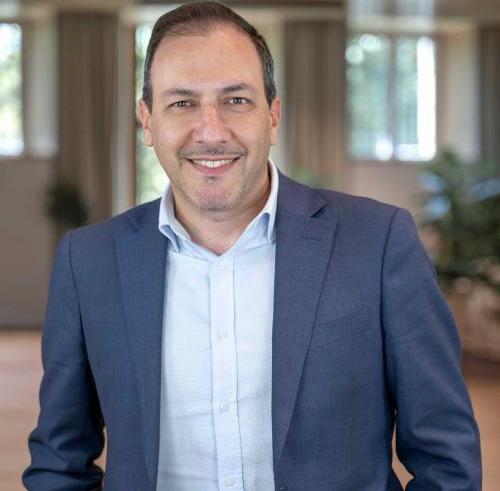
This raises an important question: if the evidence that inclusive leadership attracts top talent and drives better business results is so strong, how can we develop more inclusive leaders?
As Dean of ESCP Business School in London, the challenge for me is clear - to create environments where our students not only learn about inclusive leadership but also practice it in ways that prepare them for the realities of the modern business world. Every year, ESCP welcomes 11,000+ students from 136 different nationalities. A diverse international community is an essential part of our education. By embedding diversity and inclusivity into our curriculum and ways of learning, we actively empower the next generation
to lead with full awareness, confidence, compassion, and competence.
I believe business schools also have a responsibility to work with current leaders and to co-create inclusive leadership practices. Lifelong learning should be a priority for everyone, and business schools are a great place to start. While it might be difficult for those with more traditional leadership styles to change and transform their practices, we need to continue educating leaders and showcasing success stories of leadership transformation. Even small changes in behaviour, such as improving how to listen or chair a meeting, are a great achievement and serve as a starting point for a more significant transformation.
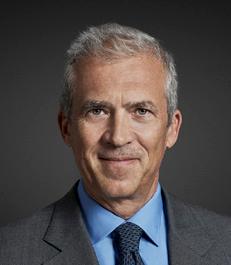
The traits of an inclusive leadership style that we prioritise at ESCP are humility, authenticity and mindfulness. Today’s workforce wants leaders who prioritise relationships over hierarchy. Younger generations of workers crave authenticity and collaboration, and they’re inspired by those who lead with purpose rather than hard power.
“EFFECTIVE LEADERSHIP IS NOT ROOTED IN RANK BUT IN MINDSET, CULTIVATED THROUGH CONTINUOUS PERSONAL AND PROFESSIONAL GROWTH, FOSTERING TRUST, AND INSPIRING OTHERS TO STRIVE FOR A COMMON GOAL.”
A great example of this leadership in action is Andreas Utermann, former CEO of Allianz Global Investors, who recently visited our campus and shared that authenticity is one of his top strategies for success. For Andreas, effective leadership is not rooted in rank but in mindset, cultivated through continuous personal and professional growth, fostering trust, and inspiring
others to strive for a common goal. Such a leadership approach requires bravery that goes beyond having full control of what is happening and is closely associated with developing trust. Inclusive leadership is also about empowerment. The best leaders don’t just guide their team, they lift them up and create environments where everyone feels valued and motivated to do their best work. Business schools have an important role in developing this mindset in the next generation of leaders. At ESCP, we place a lot of value on student voices but also make it clear that leadership isn’t about being the loudest in the room - it’s about enabling others to contribute and excel.
Gwendoline Cazenave, CEO of Eurostar and another business leader I had the pleasure of discussing this topic with, highlighted the power of inclusive leadership in driving innovation. Reflecting on her approach, Gwendoline emphasised that innovation thrives in diverse environments. Research supports this. Companies with above average diversity report up to a 20% higher rate of innovation and 19% higher innovation revenues. Being a great leader means ensuring everyone in your organisation understands your values, mission, and vision and their role in realising it. This
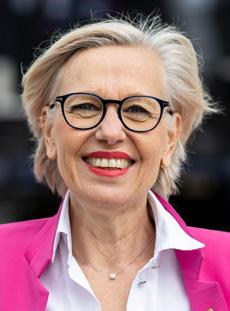
collaborative mindset will help you think bigger, innovate, and grow.
At ESCP, we’ve long recognised the value of diverse perspectives and champion a global education. With six campuses across Europe in Paris, Berlin, London, Madrid, Turin, and Warsaw, our students gain first-hand experience working with peers from different cultures and backgrounds. This exposure doesn’t just broaden their perspectives, it prepares them to lead in an increasingly interconnected world.
We know it is important to align your actions with words, which is why ESCP has invested €5 million in impact research accelerators, including the Inclusive Leadership Accelerator, which is dedicated to exploring the future of leadership in a rapidly changing world. From transformational leadership to new forms of work and feminist practices, students and executive participants will benefit from this cutting-edge research that will shape the leaders of tomorrow for the better.
As we look to the future, one thing is clear: the leaders who will thrive are those who embrace inclusivity. Business schools have a unique responsibility to prepare the next generation for this reality. It is essential to nurture leaders who not only excel in their careers but also make the world a better, fairer place.
Inclusive leadership is not just a strategy - it’s a mindset, a movement, and a mission. Fundamentally, it’s an approach that can create a world where every voice is heard, every perspective is valued, and every individual has the opportunity to succeed.
Kamran Razmdoost is Dean of ESCP Business School London Campus
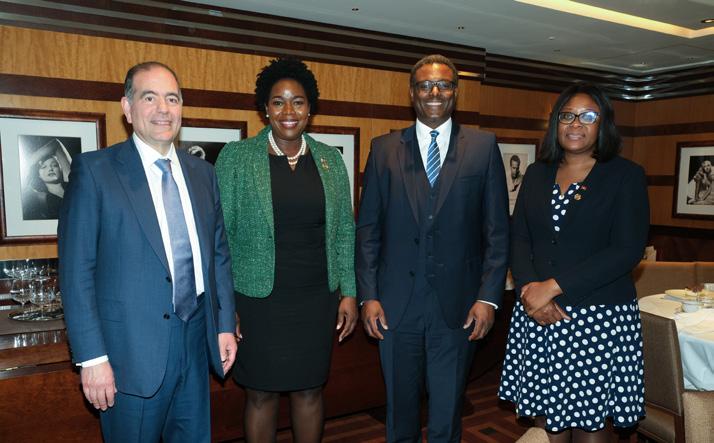
The weather did its best at irony. It was a freezing February afternoon in London, as guests gathered in the Lotus Room at The Beaumont Hotel to discuss a country with 365 beaches - one for every day of the year. The contrast was not lost on attendees as they came in from the hostile cold to discuss a land of perennial sunshine. Tables were adorned with beautiful Antiguan fruit platters, offering a literal taste of the Caribbean sunshine, with this guest particularly favouring the dragonfruit. The occasion brought together leading figures from business, finance, and diplomacy to explore investment opportunities in Antigua and Barbuda’s Citizenship by Investment (CIP)
programme. It was a remarkable list of speakers including: Charmaine Donovan, CEO of the Citizenship by Investment Unit, Her Excellency Karen-Mae C. Hill OBE, Antigua and Barbuda High Commissioner, Professor Michael Mainelli, Chairman of Z/Yen Group and Late Lord Mayor of London (20232024), and Darren Henry, Former Prime Minister’s Trade Envoy to the Caribbean. Also in attendance were notable figures such as Sir John Griffin, David Scowsill, and Dr Patrick Doherty OBE. Liz Brewer had just returned from the island and was able during the Q&A to give her experience of the sunsets, and the warmth of the island’s people.
For those who don’t know the country,
Antigua and Barbuda offers a unique blend of opportunity, culture – and overall quality of life – that makes it an attractive destination for investors and residents alike.
It is difficult to list the sheer range of benefits. With world-class education facilities, including the American University of Antigua, a competitive tax regime with no capital gains or inheritance tax, and a thriving business environment, the islands provide both financial and personal advantages. Beyond economics, Antigua boasts a rich cultural heritage, from its vibrant music and culinary scene to its deeprooted love of cricket, with legendary batsman Sir Vivian Richards as one of
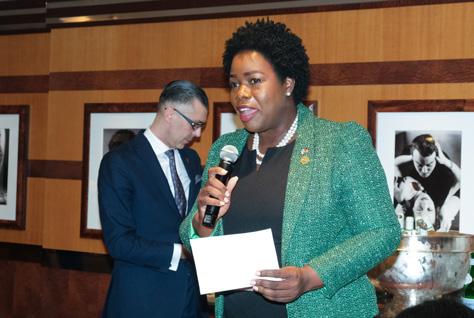
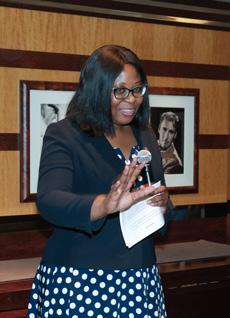

its proudest sons. Those lucky enough might even spot him on the golf course, sharing stories of his glory days while enjoying the island’s stunning landscape.
Opening the event, Charmaine Donovan extended a warm welcome to guests, offering an engaging introduction to Antigua and Barbuda’s CIP programme.
“I bring you sunshine greetings from Antigua and Barbuda,” she said. “For those unfamiliar, our twin-island paradise is affectionately called The Gem of the Caribbean and offers unparalleled investment opportunities. We have a robust real estate market, a thriving tourism industry, and strong

democratic governance, making us a top-tier destination for those seeking second citizenship.”
Highlighting the four investment options available under the CIP programme, she explained: “We offer routes through real estate, the National Development Fund, business investments, and contributions to the University of the West Indies fund, which was established to support education while providing a citizenship pathway.”
Emphasising Antigua and Barbuda’s economic stability, Donovan added: “Our currency, the Eastern Caribbean Dollar, has been pegged to the US dollar at a rate of 2.7:1 since 1976,
providing certainty for investors. If you are looking for a Plan B country, then look no further - Antigua and Barbuda is your best choice.”
IF YOU ARE LOOKING FOR A PLAN B COUNTRY, THEN LOOK NO FURTHER - ANTIGUA AND BARBUDA IS YOUR BEST CHOICE.”
Donovan concluded with a personal invitation to the Caribbean Investment Summit in April 2025, an annual event showcasing the region’s investment landscape, hosted this year at the newly inaugurated American University of Antigua conference facility.
Next to speak was Her Excellency Karen-Mae C. Hill OBE, who reflected on Antigua and Barbuda’s impressive economic growth and global influence.
“WE HAVE BEEN CONSISTENTLY THE SECOND FASTEST-GROWING ECONOMY IN CARICOM FOR THE PAST FIVE YEARS, DESPITE BEING A SMALL ISLAND NATION.”
“We have been consistently the second fastest-growing economy in CARICOM for the past five years, despite being a small island nation,” she said. “We have successfully hosted major global events, including the Organisation of American States (OAS) General Assembly and will soon welcome the Commonwealth Heads of Government Meeting in 2026.”
Hill highlighted the nation’s resilience and ambition, stating: “We may be small, but we think big. Antigua and Barbuda is a place where business thrives, investors flourish, and citizens enjoy an exceptional quality of life.”
She also underscored the government’s commitment to maintaining democratic stability and businessfriendly policies, making the islands an attractive hub for international commerce.
Adding an international perspective,
Professor Michael Mainelli, Chairman of Z/Yen Group and former Lord Mayor of London, spoke about Antigua and Barbuda’s evolving role in global finance.
“Our research into global financial centres has shown that small island economies - especially those with strong regulatory frameworks and open markets - are increasingly competitive on the world stage,” Mainelli noted.
He praised Antigua and Barbuda’s participation in international economic initiatives, saying: “What stands out about Antigua and Barbuda is its commitment to legal transparency, market access, and financial stabilitykey indicators of long-term economic success.”
Mainelli also emphasised the benefits of citizenship in a jurisdiction with sound financial policies: “When you consider a second citizenship, you are looking for stability, opportunity, and access to international markets. Antigua and Barbuda is uniquely positioned to offer all three.”
Finally, Darren Henry, Former Prime Minister’s Trade Envoy to the Caribbean, rounded off the discussion by highlighting the growing trade relationship between the UK and the Caribbean.
“As a proud descendant of the Windrush generation, I have seen firsthand the strong historical and economic ties between the UK and the Caribbean,” he shared. “When I served as Trade Envoy, we worked hard to build stronger commercial partnerships between UK businesses and Caribbean markets.”
He explained that British companies are increasingly viewing the Caribbean as a prime market for investment, particularly in renewable energy, infrastructure, and financial services.
“Our approach was simple: partner, not take. We focused on connecting UK SMEs with Caribbean businesses to
scale up and prosper together. There is a huge appetite for high-quality British expertise in sectors such as education, engineering, and environmental sustainability.”
“WE MAY BE SMALL, BUT WE THINK BIG. ANTIGUA AND BARBUDA IS A PLACE WHERE BUSINESS THRIVES, INVESTORS
Henry ended with a light-hearted but sincere call to action: “I may have lost my seat in Parliament last year, but I’m available for the next opportunity - so if there’s any way I can help facilitate investment in Antigua and Barbuda, you know where to find me!”
After the Q&A, guests were heard to reflect that it had successfully reinforced Antigua and Barbuda’s position as a premier investment destination, with speakers articulating a clear vision for economic growth, global engagement, and business-friendly policies.
As conversations continued over coffee and petit fours, there was a genuine buzz of excitement about future opportunities between the UK and Antigua and Barbuda. As Her Excellency Karen-Mae C. Hill OBE succinctly put it: “Whether you’re looking to invest, do business, or start a new chapter in your life, Antigua and Barbuda welcomes you with open arms.”
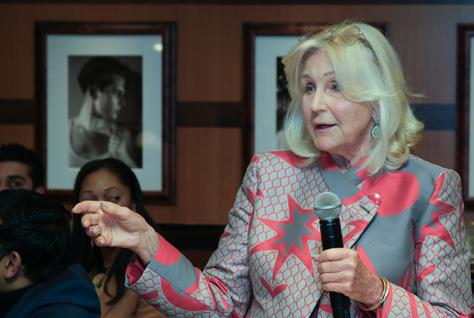


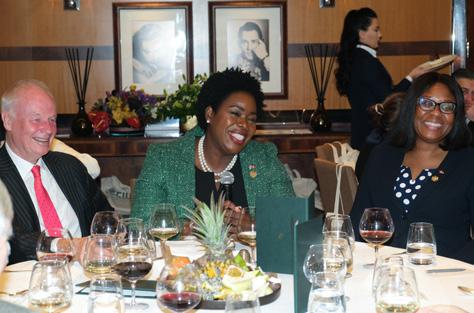


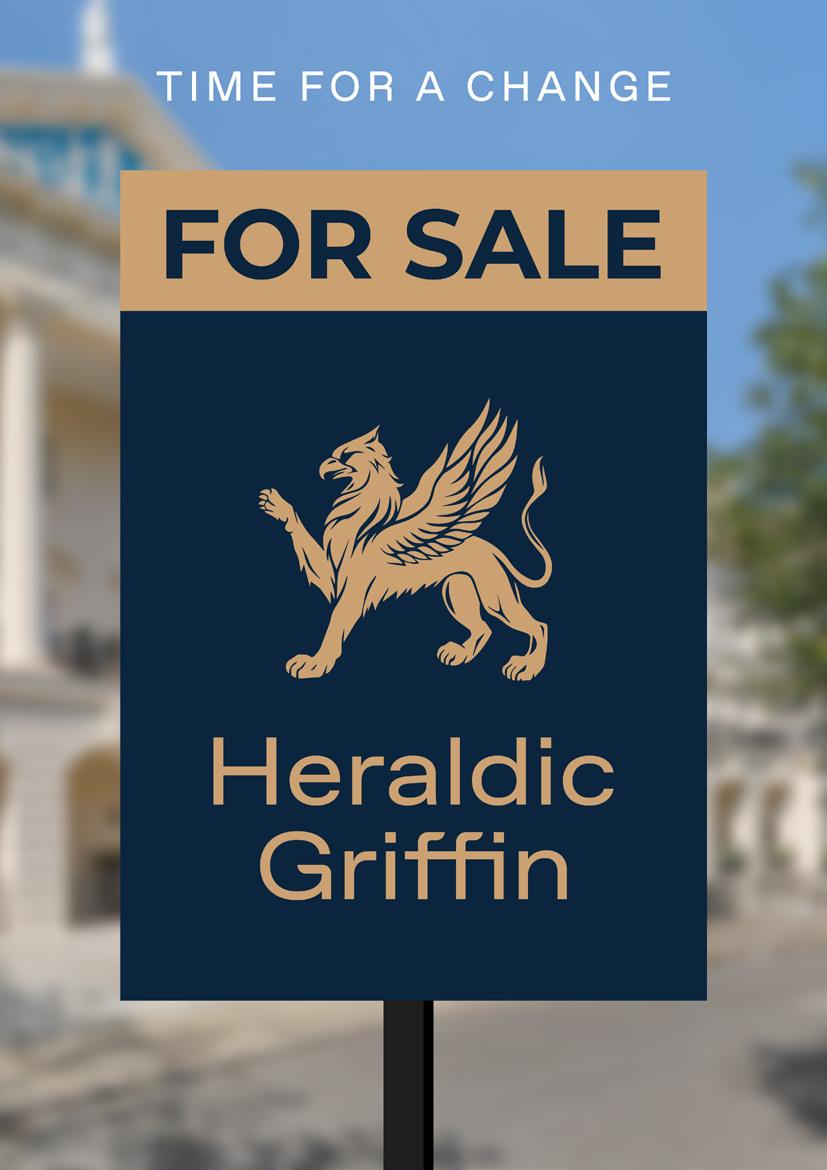

When London’s villages like Hampstead and Highgate got too expensive, Londoners looked elsewhere for value. Somewhere equally as picturesque with a lifestyle to match and only a few miles north.

Road - 4 Bed House - £670,000
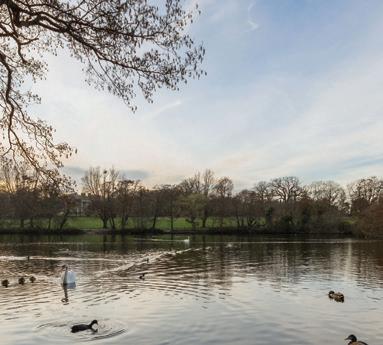
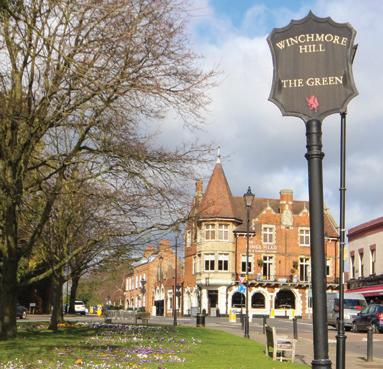

Winchmore Hill is situated in London N21, only 7 miles north of Highgate, with the qualities of a modern London village life, including pubs and restaurants, as well as it’s own station with fast links to central London. If you haven’t met Winchmore Hill yet, now is your chance. havilands.co.uk/london-village-lifestyle | Call - 020 8886 6262

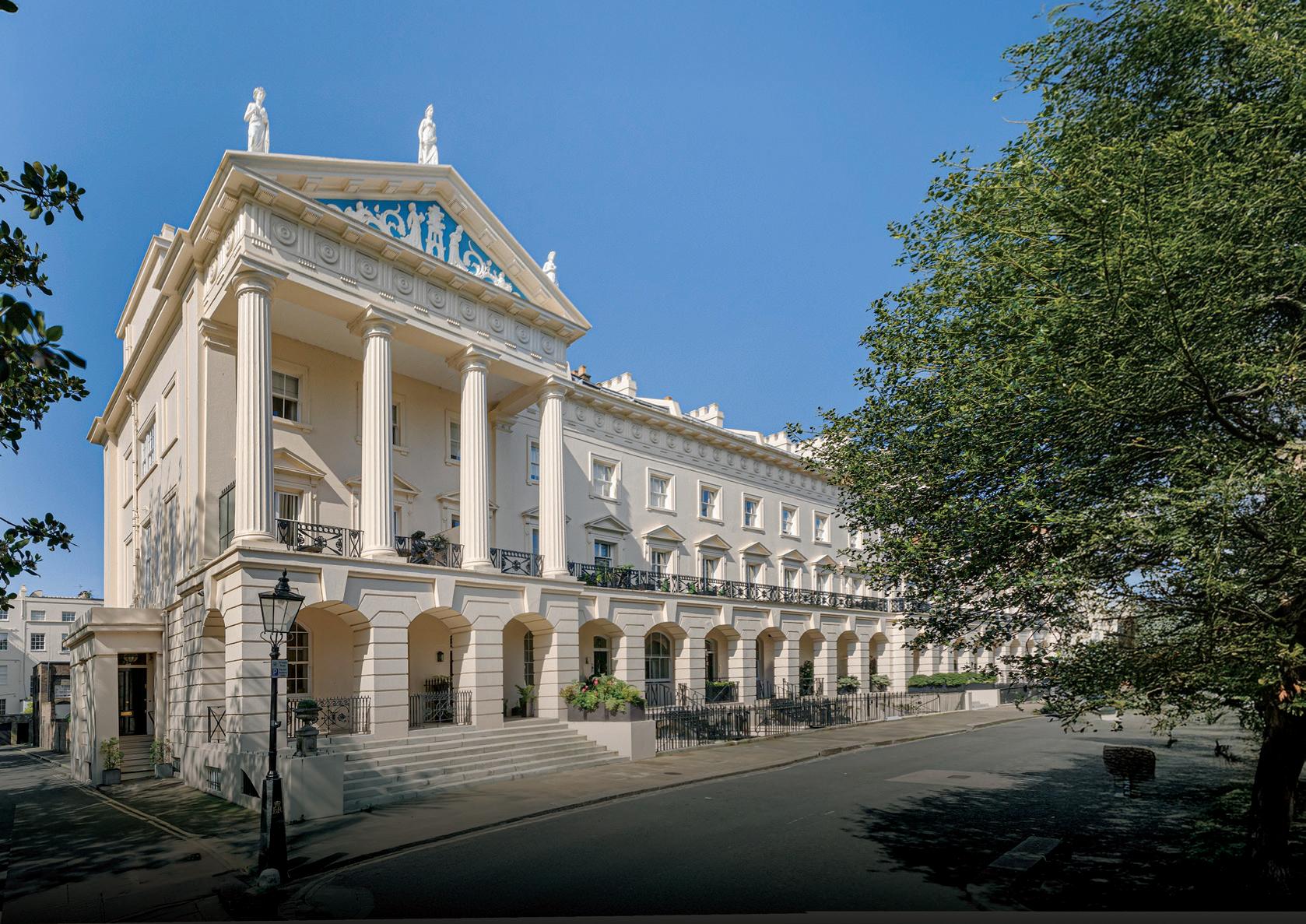

An exemplar of Palladian design. This regal residence presides over the western edge of Regent’s Park.
Designed in 1822 by renowned architect Thomas Nash, this Grade I-listed home is one of two wing buildings bookending an immaculate Georgian terrace. A quartet of soaring Roman Doric columns defines the property, which is crowned with a vast frieze and an intricate, statue-topped pediment.
£18,950,000 | 6 Beds | 6 Baths | 6,730 SQ.FT.



BUDDHA’S BUSINESS
Ancient wisdom for modern success

EDTECH IN THE GULF
Why the Middle East is streets ahead

TESSELLATION
An update from Luna Benai
CHRISTOPHER JACKSON LOOKS AT THE CAREER OF THE TECH TITAN AND ASKS WHAT WE CAN LEARN FROM HIS EXTRAORDINARY SUCCESS
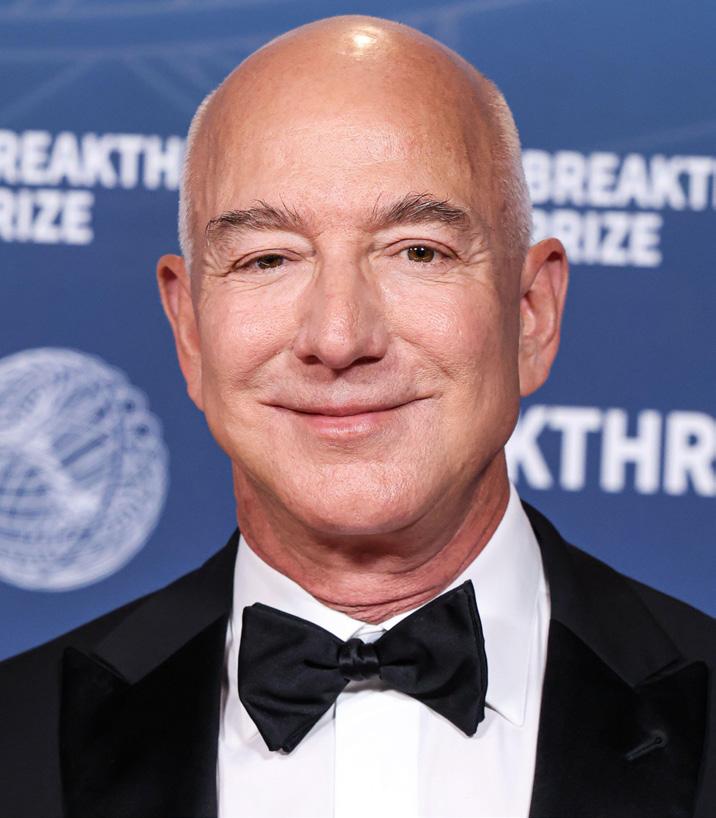
Itis a shame to begin on an ad hominem note but it must be admitted that of all our billionaires, Jeff Bezos bears the greatest resemblance to Dr. Evil. “Be nice to geeks,” Bill Gates once said, adding: “Chances are you’ll end up working for one”. He was pointing to a perennial underestimation of a certain kind of problem-solving type. He was likely referring to himself to some extent – but he might just as well have been referring to the Amazon and Blue Origin founder.
There’s always something of a juxtaposition between the man the tech CEO was and the man he has become.
We all know that success engenders some form of internal transformation –and this is why we all want success. You see this with all the billionaires down the years, whatever the sector: suddenly, as the billions roll in, we get the confidence; the TV shine; the measured cadences that let you know there is nothing left to prove to anyone.
In Bezos’ case we also have the superyacht, the fiancée Lauren Sanchez who turned Zuckerberg’s head at the Trump inauguration, and the transition from the unglamorous world of e-commerce into his current incarnation as a Space Cowboy.
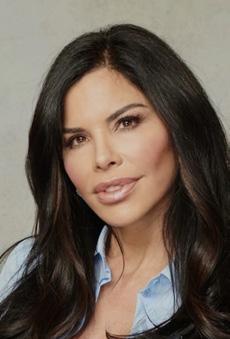
But who is Bezos really and what does his journey tell us about ourselves and our own careers? For this article we spoke with experts in business, politics and journalism to gauge Bezos’ contribution.
Seated across from Lex Fridman, the thinking man’s tech podcaster – whose carefully measured questions often elicit philosophical musings from his guests – you certainly feel that Bezos is a man who is now used to success, though perhaps still can’t quite believe its scale. There’s a moment, mid-conversation, when Bezos leans in slightly, the edges of his mouth curling upward in that unmistakable, booming laugh that has launched a thousand memes. In another sign of confidence, Bezos is dressed in a simple green polo neck - a departure from the corporate uniform of his Amazon years.
His words are deliberate, his tone genial but confident. This is a man who has spent decades refining his understanding of the world - one calculated decision at a time. “I think people assume I’m an optimist,” he says, cheerfully. “But I think of myself as a realist. The world is messy, unpredictable, and you have to build systems that anticipate change.”
It’s a playbook that has defined his career, and taken him from a Wall Street analyst to the architect of one of the most influential companies on the planet. It’s probably the first thing that strikes the viewer about Bezos – what a clear thinker he is, and how articulate.
Those who have read Bezos’ letters to his shareholders, which are compiled in Walter Isaacson’s brilliant book Invent and Wander: The Collected Writings of Jeff Bezos, won’t be so surprised by that. In his introduction – the first thing you should read about Bezos –Isaacson writes that Bezos possesses "an unending curiosity that leads him to explore new realms," and notes how he
"remains, like Steve Jobs and Leonardo da Vinci, someone who can connect the arts and sciences."
Those are some big names to be placed alongside, but the results – Amazon’s market cap is currently $2.11 trillion – won’t allow you to call it hyperbole. Besides, Bezos's talent for connecting the arts and sciences is evident in Amazon's literary origins as an online bookstore, where his technical innovation met his deep appreciation for literature. As Isaacson notes, "Bezos chose books as Amazon's first product because there were millions of titles in print, far more than a physical store could stock."
It was a masterstroke, and on many levels. James Badgett, the CEO of Angel Investment Network, has seen numerous entrepreneurs up close and has studied Bezos’ career closely. He tells me: “Bezos also understood that books were the one thing people would be most likely to buy online – he understood that a book is in a sense a trusted thing. And he never could have arrived at that insight without some sense of books – perhaps even a reverence for them.”
This intersection of commerce and culture was further enriched by his relationship with his first wife, MacKenzie Scott, a novelist who studied under the Nobel Prize winning Toni Morrison at Princeton. Morrison later praised Scott's fiction as having "a rare power and elegance."
Their partnership during Amazon's formative years embodied this fusion of literary and technical worlds. What distinguishes Bezos as an intellectual entrepreneur is his ability to not merely execute business strategies but to conceptualize entirely new paradigmscreating what Isaacson calls "a flywheel that would disrupt multiple industries." In a sense Bezos isn’t predominantly a technical innovator: what he does

instead is to approach problems with a philosopher's mindset, asking fundamental questions about human behaviour and desire. He then builds systems to address them.
The results are, appropriately for the founder of Blue Origin, out of this world. Consider the following, and try to imagine the extent of what has been achieved. As of 2024, Amazon generates over $500 billion in annual revenue, making it one of the world's most valuable companies. The platform boasts over 300 million active customer accounts and processes more than 66,000 orders per hour. Amazon Web Services (AWS) alone contributes nearly $90 billion in revenue, powering a vast share of the internet. The company employs over 1.5 million people worldwide, and during peak shopping seasons like Prime Day and Black Friday, Amazon ships over a million packages per hour. With a global reach spanning over 100 countries, Amazon continues to revolutionize online shopping, cloud computing, and logistics at an unprecedented scale.
So how did he do it? Put another way, how did the man with the nervous geek giggle become the man with the billionaire’s laugh?
Interestingly, in his conversation with Lex Fridman, Jeff Bezos reflects on the childhood experiences that shaped his problem-solving skills: "I spent all my summers on a ranch from age four to 16... I did all the jobs you would do on a ranch. I've fixed windmills, and laid fences, and pipelines, and done all the things that any rancher would do."
“I SPENT ALL MY SUMMERS ON A RANCH FROM AGE FOUR TO 16... I DID ALL THE JOBS YOU WOULD DO ON A RANCH”.
Bezos is referring to the ranch of his maternal grandfather, Lawrence Preston Gise, who instilled in him his values and work ethic. Gise, a former regional director of the U.S. Atomic Energy Commission, retired to his 25,000-acre ranch in Texas, where a young Bezos spent countless summers immersed in the world of cattle, horses, and the challenges of rural life.
These formative experiences on the ranch left an indelible mark on Bezos, shaping his character and worldview in ways we need to understand.
"My grandfather was a self-reliant man," Bezos recalled in a 2010 commencement speech at Princeton University. "He could fix anything, build anything. He taught me the value of resourcefulness and how to solve problems with limited resources."
"HE ALWAYS ENCOURAGED ME TO PURSUE MY DREAMS, NO MATTER HOW AUDACIOUS THEY MIGHT SEEM."
What’s important is that Bezos's grandfather was not just a skilled handyman, he was also a meticulous planner – not to mention a man of unwavering determination. "He taught me to think big," Bezos said in a 2018 interview with Forbes. "He always encouraged me to pursue my dreams, no matter how audacious they might seem." This is good because his dreams were destined to be very audacious indeed. On that ranch, it seemed as though no problem was permitted to be left unsolved. Bezos would later recall in a 2016 interview with The Washington Post, the newspaper he would later buy: "I helped fix windmills, vaccinate cattle, and do other chores. We also watched the Apollo moon landings on television together." Let’s remember that this was the man who would later declare in 2019: "I want to build a spacefaring civilization. "We need to go to space to save Earth."
The role of a mentor is transformative, but when that mentor is a family member - especially a grandparentit’s as if the lessons take on a different
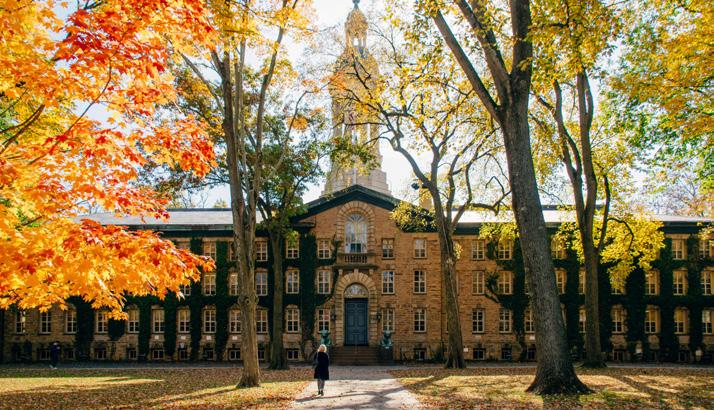
weight. The difference between being mentored by a family member rather than an outsider is often one of depth and longevity - there is an unspoken trust, an inheritance of values that is absorbed as much through osmosis as instruction. It seems possible to speculate that had Bezos’ primary mentor not been a family figure, then Bezos might have gained professional insights but perhaps not the same deep, instinctive approach to problemsolving that defined his leadership. The emotional layer of mentorship within a family can create an unwavering confidence in one's own abilities - a trait Bezos has carried into every venture –and which he would show in his early days at Amazon.
That was in the future. Initially, Bezos thought he would be a physicist. Bezos' journey from aspiring physicist to e-commerce titan is a testament to the profound impact of self-awareness and pivotal encounters. While at Princeton University, Bezos grappled with a challenging partial differential
equation for hours alongside his roommate, Joe. In their frustration, they sought help from their peer, Yasantha Rajakarunanayake, whom Bezos described as "the smartest guy at Princeton." Upon presenting the problem, Yasantha glanced at it and promptly provided the solution, stating, "cosine is the answer." This swift resolution left Bezos both astonished and introspective, leading him to realize, "That was the very moment when I realized I was never going to be a great theoretical physicist."
This epiphany prompted Bezos to pivot towards computer science and electrical engineering, disciplines where he felt his strengths were better aligned. This decision laid the groundwork for his future ventures, including the founding of Amazon.
Badgett tells me: “Bezos' experience underscores the importance of recognizing one's limitations and adapting accordingly - a trait common among many successful individuals. In Bezos' case, acknowledging that he might not excel as a theoretical physicist led him to a domain where his talents thrived, ultimately revolutionizing
global commerce. This ability to pivot, informed by both personal insight and the recognition of others' strengths, is a hallmark of adaptive and successful individuals.”
Fast forward to 1994 and Jeff Bezos, then a 30-year-old vice president at the hedge fund D.E. Shaw, made a pivotal decision that would forever alter the landscape of retail and technology. Since he has subsequently been so successful, we almost forget how inspired his decisions were; they seem inevitable in retrospect precisely because they’ve altered every aspect of our lives, and become so embedded.
Observing the rapid growth of internet usage, Bezos envisioned an online marketplace that could capitalize on this burgeoning medium. He identified a list of 20 potential products to sell online, ultimately deciding that books were the most logical starting point due to their universal demand and extensive selection.
With this vision in mind, Bezos
resigned from his lucrative position and, along with Scott, embarked on a cross-country journey from New York to Seattle - a trip during which they refined the business plan for their nascent company. Operating out of their rented garage in Bellevue, Washington, they laid the foundation for what would become Amazon.
It’s often overlooked what a crucial role MacKenzie Scott played in Amazon's early development. Drawing from her background in research and administration, she took on multiple responsibilities, including bookkeeping, writing checks, and negotiating the company's first freight contracts. Brad Stone, an author who chronicled Amazon's rise, noted, "She was clearly a voice in that room in those early years."
One of the earliest and most significant challenges Amazon faced was securing adequate funding. Bezos invested a substantial portion of his own savings and sought investments from family and friends. His parents, Jackie and Mike Bezos, contributed approximately $300,000, despite the high risk involved. Bezos candidly warned them that there was a 70 per cent chance the company would fail.
We now know that they needn’t have worried. In July 1995, Amazon. com officially launched as an online bookstore. The response was overwhelmingly positive, with orders pouring in from all corners of the United States and beyond. This rapid growth, while encouraging, presented logistical challenges. The fledgling company had to adapt its operations quickly to meet the surging demand, often improvising solutions to ensure timely deliveries.
A pivotal decision during this period was Amazon's commitment to reinvest profits into expanding its infrastructure and improving customer experience, rather than focusing on immediate profitability. This strategy allowed Amazon to scale rapidly and diversify

its offerings, setting the stage for its evolution into a comprehensive online retail platform.
In 1997, Amazon went public, raising $54 million on the NASDAQ exchange. This infusion of capital enabled the company to further expand its product lines and invest in technology to enhance user experience. Bezos's vision extended beyond books; he aimed to create a platform where customers could find anything they wanted to buy online.
Throughout these formative years, Bezos's leadership was characterized by a willingness to take calculated risks and a relentless focus on customer satisfaction. He famously stated, "We’ve had three big ideas at Amazon that we’ve stuck with for 18 years, and they’re the reason we’re successful: Put the customer first. Invent. And be patient."
Very often, MacKenzie Scott's contributions extended beyond administrative duties. She was involved in brainstorming sessions and played a part in shaping the company's culture and values. Her support allowed Bezos to focus on strategic initiatives, knowing that the company's foundational operations were in capable hands. “It’s not enough to succeed. Others must fail,” Gore Vidal once wrote. Many of the bookstores simply didn’t
see it coming. Today in the UK, it can sometimes seem as though only one man in the books industry is holding out against it all.
James Daunt, the CEO of Waterstones, tells us that it’s been an uneasy accommodation. Despite the looming threat of Amazon to the book world, Waterstones has been “able to prosper” over the past ten years and sales have been gradually increasing. This, says Daunt, is mostly down to the experience created in-store, which remains the main point of differentiation between Waterstones and Amazon, with the latter providing neither customerfacing relations nor a warm “social” environment.
“Bookshops are nice places,” Daunt continues, “where you can find a book by recommendation or have the serendipity of picking up a book and thinking ‘Oh, I’ll read this’.” And the book you buy is “just better”. “I truly believe that there’s pleasure in walking out of a bookshop with a bag and feeling the weight of the book. You feel kind of virtuous – like you’ve almost read it.”
Badgett agrees with this adding: “You’re going to see this in many sectors. Retail
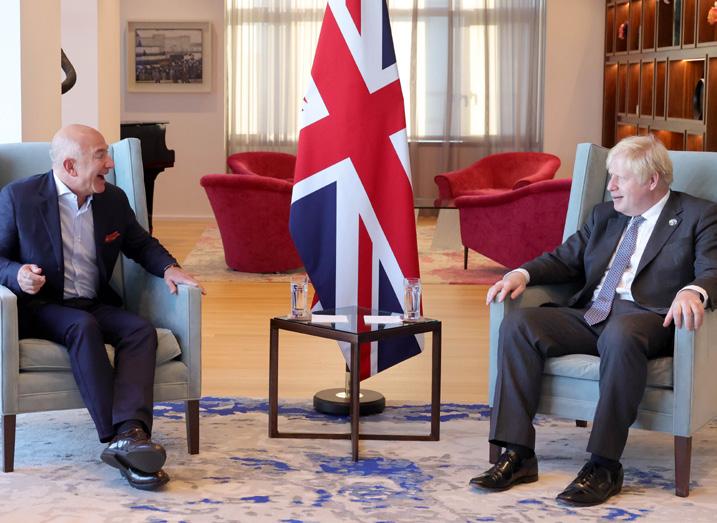
outlets have to create experiences for customers or else they will perish – and they’ll perish precisely because Bezos is so successful at creating a streamlined customer experience.”
If Daunt had to point out the most important ingredient of bookshops, it would be the people. If at the start of the 21st century everything was about “cutting costs and getting rid of staff”, the past decade has been marked by reinvesting in the people of the industry. “The personality of your shop is, at the end of the day, embedded in your staff. If you invest in knowledgeable people who care about what they do, you’ll run a much better bookshop: this is what underpins the strength of Waterstones.”
And of course, this is another differentiator with Amazon, which has, in the past, been criticised for bad customer relations.
Alamy.com
Waterstones dominates a quarter of the book market, and has been able to thrive
in recent years. But what of smaller independents, who collectively hold a mere 3 per cent share of the market?
“The good ones are actually in a better position than chains like Waterstones,” Daunt says, pointing to the backing such shops receive from their local communities. And again, it’s “survival of the fittest”: “If you’re good enough, and you genuinely create a nice environment, you’ll be fine. The rise of Amazon actually weeded out all the weak ones, and it’s the good ones that remain,” Daunt argues.
Even so Daunt is realistic about what’s achievable in the age Bezos has created. “The market share is tiny, because at the end of the day Amazon will always undercut. They invest much more, and they’ll always have the advantage of having created the market in the first place. Everybody else is just playing catch up.”
In other words, the only way to compete
with Bezos is in some way to imitate him – to become swifter, smarter and more decisive. Daunt has also said that it was important to the success of Waterstones to put the Kindle in the shop to demystify it and make sure the staff weren’t afraid of it.
Of course, it hasn’t all been rosy for Amazon. Throughout his career, Bezos has demonstrated an unusual tolerance for failure as part of the innovation process. After the spectacular flop of the Fire Phone, he famously remarked, "If you think that's a big failure, we're working on much bigger failures right now."
This perspective transforms apparent contradictions into competitive advantages, allowing Bezos to pursue high-risk, high-reward opportunities that more conventionally minded business leaders might avoid.
Even so the overwhelming trajectory is one of success – and a success
hardly paralleled in human history. The question then is: “What business philosophy underpins his achievements?”
I speak with Dr. Paul Hokemeyer, a clinical and consulting psychotherapist, who offers a psychological perspective on Bezos' leadership style. I remind him that Bezos makes a distinction between hiring ‘missionaries’ over ‘mercenaries’, with an obvious preference for the former. This seems wise to me but often in HR processes we don’t know what we’re being presented with. How do these different types – those who are just in it for the salary and true believers in a company, often present at first?
"What Bezos is talking about here is character," Hpkemeyer explains. "Character manifests relationally over time. In this regard, missionaries are people who are invested in ideological outcomes and long-term relationships. They stand in contrast to people who are transactional, focused on zero-sum wins and self-advancement."
It’s clear he finds Bezos’ perspective intriguing, but he also sees the challenge in identifying these qualities at first glance. "HR executives who want to find these people need to study candidates through these two lenses," he explains. "They need to engage in due diligence to see what the person has invested their

time, energy, and capital in and how they manifest themselves relationally over time." The distinction, he suggests, isn’t always immediate. People don’t walk into an interview labelled as either missionaries or mercenaries - these differences only become apparent when you observe how they interact, what they prioritise, and how they respond under pressure.
The conversation shifts naturally to Bezos’ framework for decision-makingthe ‘one-door’ decisions that are highstakes and irreversible, and the ‘twodoor’ decisions that can be undone with minimal cost. Hokemeyer says: "Human beings are relational creatures. We orient ourselves according to similar traits, interests, and goals. While this provides a sense of security, it also subjects us to biases and limits our creativity," he says. Bezos' two-door decisions, he explains, represent this tendency towards safety and familiarity. "They reflect safe and familiar decisions but do not push creative boundaries. They are also subject to limitations. Think of lemmings who follow each other over a cliff. In the realm of psychology, this is referred to as 'groupthink'. In it, people prioritize group harmony over critical thinking. Too often, this type of thinking leads to irrational and even harmful decisions. As such, they need to be considered thoughtfully."
One-door decisions, however, require a different mode of thinking. "These decisions are based on reduction, induction, and deduction. Through them, a person analyses complex data and simplifies and derives conclusions from observation and generalized principles. People can advance existing knowledge to higher and better states through such a process." He adds: "The best leaders know when to lean into each type of decision-making. They don’t just follow instinct - they create structures that allow for clarity."
Bezos’ success is no accident. The Princeton graduate who left a high-
powered hedge fund job to sell books online didn’t stumble into greatness - he engineered it. His approach has always been methodical, his belief in longterm vision unwavering.
“We don’t make decisions at Amazon with slides,” he reveals. “We do it with six-page memos. Everyone reads them, and then we debate.” The process is about achieving clarity, stripping away unnecessary fluff. “If the memo isn’t great, the meeting doesn’t happen. If it is great, we rip it apart and make it better.” It’s a relentless pursuit of improvement, a refusal to let stagnation creep in.
Referring to the memo approach, Hokemeyer explains: "Bezos has been a genius at reinventing the industry, maximizing customer service, and capturing market share," he says. "His approach focuses on experimenting and breaking from conventional thinking, encouraging leaders to think big and pursue unconventional solutions. So, starting with an articulate memo and then engaging in a relational exercise to tear it apart to make it better is very much a part of his ethos."
"FROM A NEUROPHYSIOLOGICAL STANDPOINT, HE HARNESSES THE BRAIN'S CAPACITY TO MAKE ORDER OUT OF CHAOS AND, IN SO DOING, BUILDS BETTER AND BETTER MOUSETRAPS."
He links this back to the neuroscience of problem-solving. "From a neurophysiological standpoint, he harnesses the brain's capacity to make
order out of chaos and, in so doing, builds better and better mousetraps." The balance between structure and creative disorder is, in Hokemeyer’s view, a significant driver of innovation.
Our discussion turns to Bezos’ belief in ‘wandering’ - the ability to allow thoughts to drift, to embrace the unexpected, to step outside the rigidity of structured work. This, too, has deep historical roots. "The notion of the creative wanderer is grounded in the writings of Charles Baudelaire, a poet who wrote during the Age of Enlightenment," Hokemeyer explains. "Baudelaire wrote of the 'flâneur' - a person who would aimlessly wander the streets of Paris, looking for creative inspiration through sensory and intellectual observation."
It’s an elegant comparison. "Bezos is a pioneer in the second wave of enlightenment, wherein new technological advancements can be used to improve the human experience. For businesses seeking to replicate their work in the realm of ‘technological flânerie,’ companies must be mindful of providing workspaces where employees can go and just be - or encouraging them to go out in their local communities and wander whilst drinking in the immediate ethos of the environment."
But can too much wandering lead to a lack of urgency? Hokemeyer disagrees. "This work should be seen not as the exclusion of task and goal-oriented work but as an integral part of it." He suggests that companies should actively build time for exploration into their structures rather than treat it as an afterthought. Always at the centre of Bezos’ story is this ability to think round problems. Badgett points to this as one of Bezos’ defining strengths. “He understands that most entrepreneurs make the
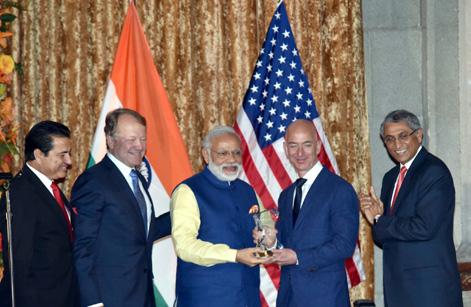
mistake of not making the funnel wide enough. What Bezos does is make sure every step of the customer experience is frictionless. It’s deceptively simple but incredibly hard to execute.” Perhaps other organisations don’t wander enough.
Bezos’ career is a mosaic of bold decisions, relentless execution, and a willingness to be misunderstood for long periods of time. Amazon was dismissed as an internet bookstore before it became a trillion-dollar behemoth. Amazon Web Services (AWS) was once seen as a side project before it evolved into the backbone of the modern internet. Prime, Alexa, Kindle - all ideas that were initially ridiculed before they redefined their industries.
Amazon's global expansion strategy has been marked by both significant investments and notable challenges across various regions, particularly in India and China.
In India, Amazon has demonstrated a robust commitment to establishing a substantial presence, with Hyderabad emerging as a focal point of its operations. In 2019, Amazon inaugurated its largest campus globally in Hyderabad, spanning 9.5 acres and designed to accommodate over 15,000
employees. Amazon’s investment has contributed to the city being labelled Cyberabad. I happen to have been there, and remember its offices rising out of the glorious excitement of modern India, as if it were somehow presiding over the next period of history. This facility underscores Amazon's dedication to the Indian market and its intent to leverage the country's burgeoning tech talent. Akhil Saxena, Amazon's Vice President of Global Customer Fulfillment, remarked during the campus inauguration, "This campus is also a tangible commitment to our long-term thinking and our plans for India."
Further solidifying its investment in the region, Amazon Web Services (AWS) announced plans in March 2025 to invest approximately $8.2 billion in the Indian state of Maharashtra over the next few years. This investment aims to bolster local cloud data storage capabilities and support the rapidly growing cloud services market in India, which is projected to reach $24.2 billion by 2028. It is another sign of the scale of Bezos’ thinking. Ashwini Vaishnaw, India's Minister of Electronics and Information Technology, highlighted the broader impact of this investment, stating, "Along with the investment, there will be significant growth in employment."
Jeff Bezos is born on January 12 in Albuquerque, New Mexico.

Graduates as valedictorian from Miami Palmetto Senior High School in Miami, Florida. Delivers a valedictorian speech on his dream of colonizing space.
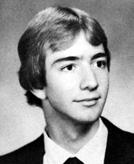
Attends River Oaks Elementary School in Houston, Texas. Develops a strong interest in science and technology.
Indian Prime Minister Narendra Modi has engaged with Amazon's leadership, notably meeting with CEO Andy Jassy on June 23, 2023, in Washington, D.C. During this meeting, discussions centered on e-commerce, digitization efforts, and the logistics sector in India. Amazon announced plans to invest an additional $15 billion in India by 2030, bringing its total investment in the country to $26 billion.
Bezos hasn’t had it all his own way. Amazon's journey in China has been fraught with challenges, leading to
a strategic retreat from the domestic e-commerce market. Despite early ambitions, by 2019, Amazon's market share had dwindled to a mere 0.6%, prompting the closure of its local marketplace operations. Industry analysts attribute this outcome to fierce competition from local e-commerce giants like Alibaba and JD.com, as well as Amazon's struggle to adapt to local consumer preferences and regulatory landscapes.
Jack Ma, co-founder of Alibaba, has previously delineated the fundamental
Graduates from Princeton University summa cum laude, joins Phi Beta Kappa, and serves as president of Princeton's Students for the Exploration and Development of Space (SEDS).

Declines offers from Intel and Bell Labs, instead joining fintech startup Fitel to help build a network for international trade. Subsequently joins hedge fund D.E. Shaw, rising to senior vice president by 1994.
differences between the two companies' business models, emphasizing that Alibaba's role is to empower others to engage in e-commerce, whereas Amazon operates as a direct e-commerce entity. Ma stated, "Amazon and eBay are e-commerce companies, and Alibaba is not an e-commerce company. Alibaba helps others to do e-commerce. We do not sell things."
Reflecting on the broader responsibilities of tech giants, Ma also commented, "Google, Facebook, Amazon, and Alibaba - we are the
Leaves Wall Street to start Amazon in his garage in Seattle, originally as an online bookstore.

Establishes Blue Origin, a private aerospace company focused on reusable rocket technology and the long-term vision of human space colonization.
Blue Origin’s New Shepard successfully launches and lands a reusable suborbital rocket, marking a breakthrough in cost-efficient spaceflight.
Launches Amazon Web Services, revolutionizing cloud computing and becoming a dominant force in enterprise technology.

Becomes the World’s Richest Person, surpassing $100 billion in personal wealth.
Steps Down as Amazon CEO, transitioning to Executive Chairman to focus on Blue Origin and philanthropic efforts.
Joins the crew of New Shepard’s first human mission, marking his entry into commercial spaceflight.

luckiest companies of this century. But we have the responsibility to have a good heart and do something good."
Interestingly, there is no public record of Chinese President Xi Jinping making direct comments about Amazon.
However, in 2019, the Chinese government requested that Amazon remove customer reviews and ratings for President Xi's book, "The Governance of China," on its Chinese platform. This move came after negative reviews appeared on the site, leading Amazon to disable the comments section for the
book. A source familiar with the matter noted, "I think the issue was anything under five stars."
Despite these regional complexities, Amazon’s overarching vision remains unchanged: a commitment to long-term thinking and continuous reinvention. But as the company expands into new markets and navigates shifting regulatory landscapes, its internal structures must evolve to keep pace. This is where Amazon Circles comes into play - an organizational experiment designed to maintain agility while
scaling the company’s decision-making processes.
A radical departure from corporate hierarchy, Amazon Circles is built on decentralized decision-making, empowering small teams to innovate without bureaucratic bottlenecks. Much like AWS reshaped cloud computing, Circles aims to create a flexible, networked model of management. This reflects Bezos’ belief that Amazon must
always be a "Day One" companynimble, customer-focused, and resistant to stagnation.
Circles is Amazon’s latest attempt to balance scale with the start-up energy that drove its early breakthroughs. Just as AWS and Prime redefined their industries, Circles seeks to reshape corporate structure itself, fostering an environment where bold ideas can emerge from any level, rather than trickling down from the top.
Amazon, the e-commerce juggernaut delivering everything from diapers to drones, has a secret weapon: Circles. These Circles are self-organizing teams - an agile framework quietly fuelling Amazon’s relentless growth and customer obsession. Imagine Lord of the Rings, but instead of hobbits on a quest for a ring, it’s software developers chasing the ultimate customer experience.
The model is deceptively simple. A Circle typically consists of 8-10 employees from various departments, united by a shared goal. They meet, brainstorm, and implement solutions collaboratively. Hierarchy dissolvesideas win regardless of job title. Picture a marketing manager, a software engineer, and a warehouse worker debating the best way to deliver dog biscuits. That’s Circles in action.
“Circles have been instrumental in fostering a culture of ownership and accountability,” says Dave Clark, former SVP of Worldwide Operations at Amazon. “They empower employees to think big, take risks, and drive meaningful change.” Jeff Wilke, former CEO of Worldwide Consumer, echoes this: “Circles allow us to move faster, be more agile, and respond to customer needs with greater speed and efficiency.” Amazon’s approach to organization balances agility, innovation, and relentless customer focus. Central to this is the "Two-Pizza Rule": teams should be small enough to be fed with
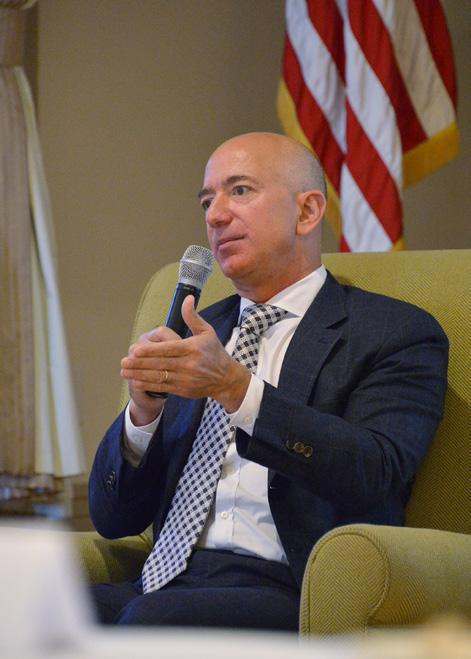
two pizzas. This principle underpins Amazon’s decentralized model, ensuring that innovation happens at a pace large bureaucratic organizations can’t match.
A key strength of Circles is their amplification of customer obsession. By integrating employees across departments, these teams ensure that every decision is customer-centric. Instead of top-down mandates, Circles act as built-in focus groups, constantly refining the customer experience.
This culture of experimentation pushes employees to challenge convention and develop creative solutions. Jeff Wilke notes that this flexibility is Amazon’s competitive advantage: “Circles allow us to move faster, be more agile, and respond to customer needs with greater speed and efficiency.” Unlike traditional corporations bogged down by hierarchical approval chains, Circles empower employees to act decisively, keeping Amazon adaptable in a shifting digital landscape.
Circles also boost employee engagement. By giving individuals direct influence over decisions, Amazon fosters a culture of ownership. Employees don’t just execute orders - they shape their teams’ direction. This has created what some describe as a company filled with “mini-CEOs,” each responsible for their domain.
No system is without its challenges. The decentralized structure requires careful oversight to maintain focus and ensure alignment with broader company goals. Without strong leadership, teams risk drifting from Amazon’s strategic vision. Yet when managed well, this approach has allowed Amazon to retain the agility of a startup while scaling into a global empire.
So next time you marvel at Amazon’s speed and efficiency, remember the Circles. These self-organizing teams are the silent architects of Amazon’s success, proving that the future of innovation belongs not to rigid hierarchies, but to those who empower individuals, foster collaboration, and remain obsessively customer-focused. They are the unsung heroes of Amazon’s meteoric risequietly revolutionizing the way we think about work.
In July 2021, Jeff Bezos stepped down as CEO of Amazon, a moment that carried immense symbolic weight - not just for the company, but for the entire tech industry. For 27 years, Bezos and Amazon were inseparable. So what did it mean for Amazon?
Stepping into the role of CEO was Andy Jassy, a figure well-versed in Amazon’s culture and operations. Having played a pivotal role in the creation and success of Amazon Web Services (AWS), he was no stranger to the company’s relentless pace of innovation. His appointment ensured continuity, yet any leadership transition at this scale comes with uncertainty. Investors, employees, and analysts alike speculated - would Amazon maintain its aggressive expansion under new leadership? Could Jassy match Bezos' visionary drive?
For Bezos, stepping aside as CEO did not mean stepping away. Instead, it allowed him to shift focus toward new ambitions, particularly Blue Origin, his
space exploration venture, and various philanthropic initiatives. As executive chairman, he retained a strategic role, ensuring that his influence would still shape Amazon’s future. But with Bezos redirecting his energy, a key question loomed: What would Amazon become without him at the helm?
The media and markets took notice. Analysts debated whether Amazon’s meteoric rise could continue under Jassy. Competitors watched closely, evaluating whether the company’s aggressive expansion would wane. The moment transcended a routine leadership change - it was an inflection point that forced the world to reassess what Amazon truly was, beyond its iconic founder.
When Andy Jassy officially took the reins in July 2021, he inherited an empire built on the foundations of relentless innovation. Having joined Amazon in 1997, he had spent decades cultivating an understanding of the company’s DNA. His leadership of AWS - Amazon’s cloud computing arm - had transformed it into a revenue powerhouse, shaping the internet as we know it. But leading AWS was one thing; leading Amazon as a whole was another.
As CEO, Jassy not only championed AWS’s continued dominance but also pushed Amazon into new industries, expanding its technological and retail footprint. Under his leadership, AWS continued its rapid evolution, introducing new services such as Amazon Connect, a cloud-based contact center, and Amazon Honeycode, a no-code app builder, while expanding its reach into key sectors like healthcare and the public sector. These invevntions haven’t yet entered the public consciousness to the same extent as achievements under Bezos, but it’s early days.
Beyond cloud computing, Jassy has driven Amazon’s expansion into healthcare. His oversight of Amazon Care, a telehealth initiative,

demonstrated the company's ambitions in the sector, and though it was ultimately shut down, it provided valuable insights for future healthcare ventures. The $3.9 billion acquisition of One Medical further signaled Amazon’s commitment to disrupting traditional healthcare models.
The advertising sector has also flourished under Jassy’s leadership. Recognizing the power of Amazon’s vast customer data, he has overseen explosive growth in advertising revenue, making it one of the company's fastest-growing profit centers. This revenue stream has, in turn, fuelled investments in logistics, technology, and new business verticals.
Amazon’s logistics and fulfilment networks have been another priority. Expanding its delivery infrastructure has allowed for faster shipping times, better inventory management, and a competitive edge against traditional retailers. Under Jassy, Amazon has reinforced its supply chain dominance, ensuring that it remains a step ahead in the evolving e-commerce landscape.
Strategic acquisitions have also played a major role in Jassy’s leadership. The $8.5 billion purchase of MGM Studios added a vast library of content to Amazon Prime Video, strengthening its position in the streaming wars. Meanwhile, the company’s grocery expansion, through initiatives like Amazon Fresh and Amazon Go, underscores a broader push to diversify its retail presence beyond e-commerce.
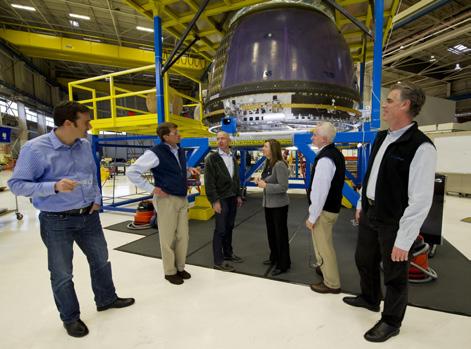
Despite these successes, Jassy’s tenure has not been without challenges. Amazon has faced increased regulatory scrutiny, labor disputes, and supply chain disruptions, all while navigating a post-pandemic economy. In response, Jassy has emphasized transparency, employee well-being, and corporate responsibility, committing Amazon to sustainability initiatives and local community investments.
As CEO, Jassy is not merely maintaining Amazon’s legacy - he is actively reshaping its future. His leadership is defined by an intricate balance: preserving Bezos’ innovative ethos while carving out his own strategic vision. Whether steering Amazon deeper into cloud computing, healthcare, logistics, or entertainment, Jassy’s approach ensures that the company remains a global force, continuously evolving with the digital age.
The transition from Bezos to Jassy was more than a change in leadership; it was a signal of Amazon’s next phase. While Bezos built the empire, Jassy is now tasked with reinventing it for the future - a challenge that will define Amazon’s trajectory in the years to come.
And Bezos? He would go interstellar. For him, success was never just about
selling books, or even about retail - it was about solving problems at scale. His entire career has been a case study in thinking beyond the immediate, building not just for the next quarter, but for the next century. If Amazon was about making commerce frictionless, his next great challenge was something even more ambitious: securing humanity’s long-term future.
"IF AMAZON WAS ABOUT REIMAGINING RETAIL, BLUE ORIGIN WAS ABOUT REIMAGINING OUR PLACE IN THE COSMOS."
Bezos has often spoken of Earth as a ‘garden world’ that should be preserved, not overexploited. But preservation requires an alternative - a place for heavy industry, for expansion, for growth beyond planetary limits. If Amazon was about reimagining retail, Blue Origin was about reimagining our place in the cosmos. And so, in 2000, long before private spaceflight was fashionable, Bezos quietly founded the company
that would become his most audacious venture yet.
Shalini Khemka CBE, founder of the E2E network tells me: “Bezos is very passionate about space and science and doing things which are pretty extraordinary like Elon Musk is. So he does. He's a man who follows his passions. You know, the businesses come out of passion, passionate interest.”
They certainly do. But while Elon Musk and SpaceX aggressively pursued interplanetary travel and Mars colonization, Bezos took a different approach. He envisioned a future where millions of people could live and work in space, but instead of focusing on Mars, he looked towards developing infrastructure that could support a broader space economy. He was particularly inspired by the concepts of physicist Gerard K. O’Neill, who proposed massive orbiting space stations that could sustain human life indefinitely.
To achieve this vision, Bezos focused on building reusable rocket technology, believing that the key to unlocking space was to lower costs dramatically. Blue Origin’s motto, “Gradatim Ferociter” (Step by Step, Ferociously), encapsulated this philosophy.
Blue Origin, founded by Bezos in 2000, was never just a passion project - it was an attempt to redefine humanity’s relationship with space. From the outset, Bezos spoke in grand terms about the future, imagining a world where “millions of people can live and work in space.” But space is unforgiving, and progress has been anything but smooth, as we shall see.
But in entering this sector, is he really so different from Musk? “In one sense he is similar,” Khemka adds. “Especially by this stage, he's not thinking about, can I make money? He's thinking about, what is it that I want to change? What
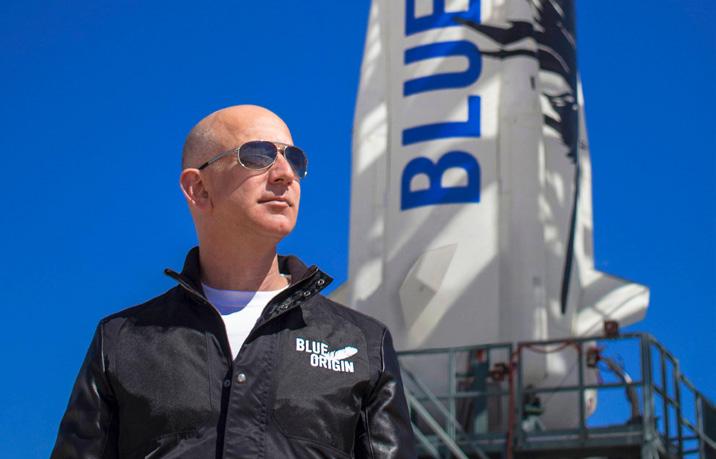
is it that I want to build or disrupt? Or where is the problem in the world, and how can I help to solve that problem and the money comes afterwards. He is obviously hugely commercial, but I don't think it's driven by commerciality. I think it's driven by making a difference - effecting change.”
It’s good that the motivation is strong because setbacks have inevitably come, along with some crucial successes. The company began its journey with cautious steps, testing suborbital rockets long before attempting anything more ambitious. In 2006, the Goddard prototype completed a brief but promising test flight, proving the company’s ability to launch and land vertically - an idea that would later become fundamental to commercial spaceflight. By 2015, Blue Origin made history with New Shepard, a suborbital rocket that successfully launched, reached space, and then performed a controlled vertical landing. This was a triumph, a tangible demonstration of the company’s belief in full reusability as the key to reducing launch costs.
Yet while New Shepard has carried paying customers - including Bezos himself - on brief, suborbital joyrides, the broader ambition of competing with SpaceX has been less straightforward. New Glenn, Blue Origin’s answer to Falcon 9 and Falcon Heavy, has been beset by delays. First announced in 2016 with a planned 2020 launch, the rocket has yet to complete a fully successful flight. The first test mission, in early 2025, reached orbit, but the booster failed to land on the recovery ship, a stark reminder of the difficulty of engineering fully reusable rockets.
The rivalry with Elon Musk has been an unavoidable subplot. The two billionaires, both obsessed with the future of spaceflight, have exchanged pointed remarks over the years. Musk, whose SpaceX has dominated the industry with rapid iteration and frequent launches, has been dismissive of Blue Origin’s slow pace. When Bezos announced his lunar lander project, Blue Moon, Musk tweeted, “Oh stop teasing, Jeff.” When asked about Blue Origin’s progress in an interview, he responded
simply, “Jeff who?” Bezos, for his part, has been more measured but has taken legal action against NASA’s decision to award key contracts to SpaceX over Blue Origin, prompting further digs from Musk, who derided Blue Origin as a company that “sues instead of innovates.”
Even so, the Astronomer-Royal Martin Rees is among those cheering him on, telling me: “Space travel is very expensive. For that reason, if I was an American taxpayer or European taxpayer I wouldn’t support NASA’s or ESA’s programs for manned space flight. On the other hand, I’m prepared to cheer on the endeavours of Jeff Bezos and Elon Musk in the private sector. Firstly, they’re not using taxpayers’ money, and secondly, they can take higher risks than NASA or ESA can when sending civilians into space.”
Blue Origin has continued pushing forward. The company has secured a role in NASA’s Artemis program with the Blue Moon lander, and its New Glenn rocket - though delayed - will
eventually provide another option in the growing launch market. More recently, Blue Origin announced an all-female crewed mission featuring Katy Perry and Lauren Sánchez, a move that captured public interest and showed that, while Blue Origin may not be moving at the breakneck speed of SpaceX, it is still shaping the conversation around commercial space travel.
It is easy to dismiss Blue Origin as the slower, more corporate cousin to SpaceX, but its methodical approach has its merits. Bezos has always maintained that space is a long game, and while Musk may be launching rockets at an astonishing rate, history will judge not just who moved fastest, but who built something that lasts. For now, the race continues - one billionaire flying higher, the other still quietly plotting his ascent.
That’s certainly an expansive perspective - and it explains his significant personal investment in Blue Origin, which he has called his "most important work." Bezos has funded this space venture by selling Amazon stock worth billions, demonstrating his willingness to convert present wealth into future possibilities. "The only way that I can see to deploy this much financial resource is by converting my Amazon winnings into space travel," he once explained. His fascination with long-term thinking is equally evident in his $42 million contribution to the Clock of the Long Now, a mechanical timepiece designed to run accurately for 10,000 years.
It might even be said Bezos has long been preoccupied with projects that stretch beyond the limits of a single human lifetime. Whether it’s space travel, renewable energy, or artificial intelligence, his vision consistently leans toward endeavours that demand patience, resilience, and an understanding that the most significant rewards often lie far beyond the present. It is this same philosophy that

underpins one of his most enigmatic and ambitious projects - one that is not about rockets or commerce, but about time itself.
The Clock of the Long Now is deep in the heart of Texas, nestled within a remote mountain range. This monumental timepiece is designed to tick for 10,000 years, and Bezos has been crucial in bringing this ambitious project to fruition.
The Clock of the Long Now is not your average timekeeping device. It is a complex mechanical marvel, designed to withstand the test of time and serve as a reminder to future generations to think beyond the immediate.
The clock’s gears, crafted from stainless steel and marine bronze, are designed to move slowly and deliberately, marking the passage of time with a sense of gravity and permanence.
The clock’s location, deep within a mountain, is no accident. It is meant to
be a place of pilgrimage, a destination that requires effort and intention to reach. The journey to the clock is as much a part of the experience as the clock itself, a reminder that long-term thinking requires patience, dedication, and a willingness to look beyond the horizon.
Bezos's involvement in the Clock of the Long Now is a reflection of his own philosophy.
He has often spoken about the importance of long-term thinking in business and in life. In a 2019 letter to Amazon shareholders, he wrote, "If everything you do needs to work on a three-year time horizon, then you're competing against a lot of people. But if you're willing to invest on a seven-year time horizon, you're now competing against a fraction of those people, because very few companies are willing to do that."
"THE CLOCK OF THE LONG NOW IS A REMINDER THAT WE ARE PART OF A LARGER STORY, A STORY THAT STRETCHES FAR BEYOND OUR OWN LIFETIMES."
The Clock of the Long Now is a reminder that we are part of a larger story, a story that stretches far beyond our own lifetimes. It is a call to consider the long-term consequences of our actions and to make decisions that will benefit future generations.
As Bezos himself has said, "If you extend your time horizon out, remarkable things can happen." The Clock of the Long Now is a testament to this belief, a monument to the power of long-term thinking and the
Alamy

enduring legacy of human ingenuity.
In our digital age where innovation cycles are measured in months, Bezos's support of the Clock represents something deeply countercultural. This timepiece challenges our collective short-term thinking. Bezos understands that civilization depends on extended contemplation. The most important projects require timeframes that most corporate boards would find unimaginable. The Clock's steady mechanism marks time differently. It suggests that humanity's greatest achievements come from those who plant forests they'll never sit beneath. By funding this strange timepiece, Bezos has created a perfect metaphor for his business approach. He's willing to endure Wall Street's confusion while building enterprises designed to outlast him. In this steel chronometer, we see not just Bezos the entrepreneur, but Bezos the philosopher. The Clock offers a meditation on mortality and the meaningful pursuits that transcend it.
Bezos's invitation to expand our temporal horizons works in both directions. By challenging us to contemplate millennia ahead, the Clock of the Long Now also prompts reflection on the continuum connecting past, present, and future. Just as the Clock's mechanism traces
time forward in measured increments, we can better understand Bezos's visionary perspective by tracing backward through his formative experiences.
The seeds of his long-term thinking, comfort with uncertainty, and boundless curiosity were planted decades before Amazon's founding. But if time is the first frontier, thought is the next. For Bezos, space is not the only unexplored territory worthy of investment - ideas, and the institutions that shape them, demand careful cultivation too. His entry into journalism was not merely the indulgence of a billionaire collector but a deliberate move into the contested arena of knowledge itself. Just as his rockets seek to propel humanity beyond Earth’s constraints, his stewardship of the Post suggests a similar ambition for the marketplace of ideas.
In August 2013, Jeff Bezos made a decision that surprised many: he purchased The Washington Post for $250 million. At the time, the move seemed incongruous for the billionaire founder of Amazon, a tech mogul whose career had been defined by e-commerce, logistics, and cloud computing.
Yet, in hindsight, Bezos’ acquisition of the legendary newspaper was not just an investment in a struggling media outlet but a calculated decision that would shape the future of journalism in the digital age. His entry into the media world influenced the paper’s financial model, technological infrastructure, and editorial independence. To fully understand the ramifications of this acquisition, it is essential to place it within the historical context of the newspaper and the challenges facing journalism at the time.
Founded in 1877, The Washington Post began as a modest four-page daily newspaper in the nation's capital. Over the years, it grew into one of the most influential newspapers in the United States, playing a pivotal role in shaping American journalism. Under the leadership of publisher Katharine Graham and legendary editor Ben Bradlee, the paper gained national prominence in the 20th century, particularly during the Watergate scandal. Bob Woodward and Carl Bernstein’s investigative reporting on the Nixon administration’s corruption led to the resignation of President Richard Nixon in 1974, solidifying the Post’s reputation for fearless journalism.
However, by the early 21st century, The Washington Post, like many print newspapers, was struggling. The rise of the internet had eroded traditional revenue streams as readership declined and advertising dollars shifted to digital platforms like Google and Facebook. Circulation was plummeting, and the Post faced significant financial difficulties. It was in this turbulent media landscape that Jeff Bezos stepped in, purchasing the paper from the Graham family, who had owned it for four generations.
For Bezos, the acquisition of The Washington Post was not a random indulgence but a strategic move driven by several factors. While some speculated that his motives were
political or personal, Bezos himself stated that his decision was based on his belief in the newspaper’s critical role in democracy and his conviction that he could help reinvent its business model.
One of Bezos' primary reasons for buying the Post was his understanding of digital transformation. As a pioneer in e-commerce and cloud computing, he recognized the need for legacy media to evolve in the internet age. He saw an opportunity to apply Amazon’s principles of customer obsession, data-driven decision-making, and technological innovation to a newspaper that was struggling to adapt to digital trends.
Additionally, Bezos had a long-standing interest in journalism. As a child, he was an avid reader of newspapers, and he understood their value in shaping public discourse. His acquisition of the Post was not just an investment in a media outlet but in an institution he saw as vital to democracy.
Bezos’ impact on The Washington Post was profound. From the outset, he took a hands-off approach to editorial decisions, pledging to uphold the newspaper’s independence. Instead of interfering in the newsroom, he focused on modernizing its business operations, expanding its reach, and leveraging technology to improve efficiency and profitability.
One of his first moves was to invest heavily in technology and digital infrastructure. Under his ownership, The Washington Post developed its own publishing platform, Arc XP, which improved the paper’s online user experience and became a revenuegenerating product used by other media companies. Bezos also introduced a subscription-based model similar to Amazon Prime, increasing digital subscriptions from under 100,000 in 2013 to over 3 million by 2020. This shift was critical in ensuring financial sustainability, as advertising revenue alone was no longer sufficient to sustain major newspapers.
Another key change was the expansion of The Washington Post’s coverage. Under Bezos, the paper transitioned from a primarily Washington-focused publication to a national and even global news powerhouse. He hired new journalists, expanded investigative reporting, and invested in data-driven journalism. The Post’s reporting became more ambitious, covering not just politics but technology, science, and global affairs with greater depth and resources.
In 2025, Bezos posted a tweet explaining that he was asking the opinion section to write in defence of freedom and free markets, triggering the resignation of long-standing opinion editor David Shipley. Reaction to this fell along political fault lines. Here in the UK, Baron Young of Acton tells me: “I think it’s smart of Jeff Bezos to shift the Washington Post’s editorial line to defending freedom. Left-ofcentre legacy media brands have been in freefall since last November because their customers have lost trust in them and unless they can rebuild that trust they’ll go out of business.”
But whatever the controversies the financial position under Bezos is clear: in that sense things have improved dramatically. Once struggling to stay afloat, the Post became profitable again, allowing it to reinvest in journalism rather than cutting costs, as many other newspapers were forced to do.
Bezos' success in turning around the Post encouraged other newspapers to rethink their strategies, with more outlets embracing subscription models and technological innovations to sustain their businesses. The New York Times, for example, expanded its digital-first approach, inspired in part by the Post’s resurgence.
As The Washington Post continues to evolve, Bezos’ influence will remain a defining feature of its modern history. Whether his legacy will ultimately be seen as a savior of journalism or

a harbinger of increasing corporate control over the press is a question that will likely continue to be debated for years to come.
For Bezos, success was never just about selling books, or even about retail - it was about solving problems at scale. His entire career has been a case study in thinking beyond the immediate, building not just for the next quarter, but for the next century. If Amazon was about making commerce frictionless, his next great challenge was something even more ambitious: securing humanity’s long-term future.
Bezos has often spoken of Earth as a ‘garden world’ that should be preserved, not overexploited. But preservation requires an alternative - a place for heavy industry, for expansion, for growth beyond planetary limits. If Amazon was about reimagining retail, Blue Origin was about reimagining our place in the cosmos. And so, in 2000, long before private spaceflight was fashionable, Bezos quietly founded the company
that would become his most audacious venture yet.
This instinct for long-term vision is deeply embedded in the culture he has built. Shalini Khemka, founder of the E2E network, reflects on this: “What Jeff has instilled within Amazon is the start-up mentality. Despite being a multi-billion-pound company, its divisions - AWS, Amazon Prime, and their subdivisions - are structured to think like startups. They are encouraged to be creative, nimble, and to operate with the urgency of a company still proving itself.”
James Badgett, CEO of Angel Investment Network, takes this further: “Bezos understands that success is not just about scale, but about resilience. He has built systems that allow for constant reinvention. Amazon doesn’t just react to change - it anticipates it. That’s why his impact will extend far beyond e-commerce.”
Bezos's invitation to expand our temporal horizons works in both
directions. By challenging us to contemplate millennia ahead, the Clock of the Long Now also prompts reflection on the continuum connecting past, present, and future. Just as the Clock's mechanism traces time forward in measured increments, we can better understand Bezos's visionary perspective by tracing backward through his formative experiences.
In the end, Bezos is not merely an entrepreneur but an architect of possibility. He builds systems, not for the present, but for futures yet to unfold - whether in the algorithms of e-commerce, the circuits of digital media, or the silence of deep space. As he told Lex Fridman, 'We are the lucky ones who get to lay the foundation stones for a future we will never see.' It is this relentless drive - this refusal to settle for mere success - that has defined his life’s work. And perhaps, long after the last Amazon package is delivered or the final rocket launches, it is this philosophy that will endure the longest."
Amazon has reshaped entire industries, from books to electronics to clothing. While many of these companies failed due to their own strategic missteps, there’s no denying that Amazon’s relentless efficiency, customer focus, and competitive pricing played a major role in their downfall. For every business that couldn’t keep up, Amazon only grew stronger, solidifying its place as one of the most disruptive forces in modern retail history.
(1971 - 2011)
Borders was once a giant in the bookstore industry, known for its massive retail spaces and cozy reading areas. But when Amazon introduced online book sales and later the Kindle e-reader, Borders failed to adapt. Unlike Barnes & Noble, which scrambled to launch an e-book competitor, Borders outsourced its digital business to a thirdparty provider and never recovered. A former Borders executive later admitted, “We were too slow to see what Amazon was doing. By the time we realized, it was too late.”
(1949 - 2009)
A household name in electronics retail, Circuit City was the go-to destination for televisions, computers, and appliances. However, as Amazon grew its tech marketplace with lower prices and free shipping, Circuit City

struggled to compete. The company filed for bankruptcy in 2008. Many analysts believe its failure to embrace e-commerce sealed its fate. A former CEO commented, “Amazon changed the way people shop, and we didn’t change with them.”
“AMAZON CHANGED THE WAY PEOPLE SHOP, AND WE DIDN’T CHANGE WITH THEM.”
(1948 - 2018)
The beloved toy store chain was a victim of both private equity mismanagement and Amazon’s dominance in the toy industry. In a fateful decision in 2000, Toys "R" Us signed a deal giving Amazon exclusive
rights to sell its toys online, effectively handing over its digital future. When the deal ended, Amazon had already captured the toy market, leaving Toys "R" Us struggling. CEO David Brandon later said, “We made a deal with the devil, and it bit us.”
(1928 - 2016)
Sports Authority was a major player in the sporting goods industry, but its failure to build a strong e-commerce platform allowed Amazon to scoop up market share. Customers began favoring the convenience of online shopping over visiting big-box stores. In 2016, the company liquidated, with many former executives blaming Amazon’s aggressive pricing and fast shipping for their demise.

(1985 - 2010)
While Netflix gets most of the credit for toppling Blockbuster, Amazon played a significant role in shifting consumers toward digital entertainment. Amazon Prime Video and its early DVD sales business made it easier for people to rent and buy movies without stepping into a store. In 2008, Blockbuster’s CEO scoffed at streaming services, saying, “People will always want to browse for movies in person.” He was wrong, and Blockbuster filed for bankruptcy just two years later.
(1984 - 2012)
Once a powerhouse in computer retail, CompUSA couldn’t keep up with Amazon’s rapid expansion in tech sales. Customers preferred Amazon’s vast selection and competitive prices over the in-store experience at CompUSA. Despite multiple attempts to revamp its business, including closing underperforming stores, the brand finally shut down in 2012. An insider admitted, “Amazon turned every customer into a price-checking expert, and we just couldn’t match them.”
(1989 - 2017)
Known for its edgy marketing and ethically made clothing, American Apparel was a favorite among young consumers. However, as Amazon expanded its apparel business with lower-cost alternatives and faster shipping, American Apparel struggled to maintain its market share. Mounting debt and dwindling sales led to bankruptcy. Founder Dov Charney once said, “Amazon doesn’t care about fashion; they care about convenience. And that’s what wins.”
“AMAZON DOESN’T CARE ABOUT FASHION; THEY CARE ABOUT CONVENIENCE. AND THAT’S WHAT WINS.”
(1921 - 2017, AGAIN IN 2020)
RadioShack was once a tech tinkerer’s paradise, selling electronics components, gadgets, and accessories. But as Amazon made it easier to buy the same products
online - often for less - RadioShack’s relevance faded. The company filed for bankruptcy twice, in 2015 and again in 2020. A former executive reflected, “Amazon took away our customer base one click at a time.”
“AMAZON TOOK AWAY OUR CUSTOMER BASE ONE CLICK AT A TIME.”
(1956 - 2019)
Payless was a budget-friendly shoe retailer that once had thousands of locations. However, the rise of online shoe sales through Amazon and competitors like Zappos (which Amazon acquired) made it harder for Payless to attract customers. The convenience of shopping from home outweighed the appeal of Payless’ discount pricing. The company filed for bankruptcy in 2017 and again in 2019, closing all U.S. stores. “People just stopped coming in,” a former manager lamented.
(1965 - 2023)
The college bookstore division of Barnes & Noble struggled to compete with Amazon’s dominance in textbook sales. Amazon offered students cheaper prices, digital alternatives, and fast shipping, undercutting traditional campus bookstores. As textbook sales dwindled, many universities opted to replace their bookstores with Amazon-powered alternatives. “Students want affordability, and Amazon delivers it,” an industry analyst noted. Barnes & Noble College was eventually acquired and merged into another company in 2023.
While Amazon has disrupted countless industries, these companies have found ways to thrive by leveraging their unique strengths. Whether through exclusivity, customer experience, or alternative business models, these businesses have successfully adapted to a world where Amazon dominates retail but doesn’t control every market.
Walmart, long seen as Amazon’s biggest retail rival, has managed to hold its ground by aggressively expanding its online presence. With Walmart+, a subscription service designed to compete with Amazon Prime, and its acquisition of Jet.com, Walmart has embraced e-commerce while leveraging its vast network of physical stores for faster delivery and pickup options. A Walmart executive remarked, “We’re not trying to be Amazon - we’re playing to our strengths.”
“WE’RE NOT TRYING TO BE AMAZONWE’RE PLAYING TO OUR STRENGTHS.”
Rather than compete with Amazon directly, Shopify positioned itself as the go-to platform for independent e-commerce businesses. By offering small businesses a way to sell online without relying on Amazon, Shopify

has thrived, even growing its merchant base as some brands sought alternatives to Amazon’s marketplace. A Shopify spokesperson noted, “Amazon dominates retail, but we empower entrepreneurs to build their own brands.”
As one of the few companies that can rival Amazon in terms of brand loyalty and product innovation, Apple has flourished despite Amazon’s tech ambitions. While Amazon sells Apple products, Apple maintains tight control over its ecosystem, ensuring its direct retail channels remain strong. Apple’s luxury appeal and exclusive in-store experience continue to drive its success. CEO Tim Cook once remarked, “Customer experience is everything, and that’s where we set ourselves apart.”
Costco has thrived by doubling down on its membership-based model and offering unbeatable value for bulk buyers. Unlike traditional retailers that struggled against Amazon’s low prices, Costco’s in-store-only discounts, private label Kirkland Signature products, and unbeatable in-store experience have kept it competitive. “We’re about quality and value, not just convenience,” a Costco executive said.
Nike initially partnered with Amazon to sell its products but later pulled out, choosing to focus on its directto-consumer strategy through its own website and retail stores. The decision paid off, as Nike strengthened its brand, increased its margins, and maintained
full control over pricing and customer experience. “We don’t need Amazon to connect with our customers,” a Nike spokesperson declared.
As a luxury brand powerhouse, LVMH has refused to sell its products on Amazon, maintaining exclusivity and premium positioning. While Amazon dominates mass-market retail, luxury brands like Louis Vuitton, Dior, and Moët & Chandon have thrived by keeping their products out of third-party marketplaces and focusing on in-store experiences and direct sales. “Exclusivity is key to luxury,” said LVMH’s CEO Bernard Arnault.
Tesla’s success is built on its direct-toconsumer sales model, which bypasses traditional dealerships and platforms like Amazon entirely. Its strong brand loyalty, innovation, and ability to control every aspect of its customer experience have kept it thriving. Elon Musk once commented, “We sell experiences, not just cars, and that’s something you can’t get on Amazon.”
Wikipedia.org
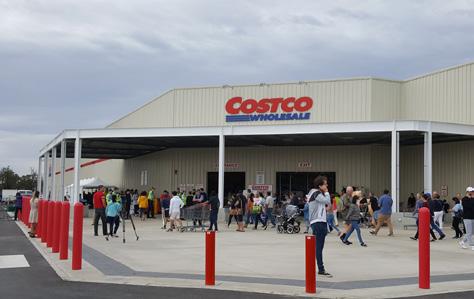
While Amazon offers a vast array of products, Etsy has carved out a niche for handmade, vintage, and artisanal goods. By fostering a community of independent creators and focusing on unique, non-mass-produced items, Etsy has successfully maintained a marketplace that stands apart from Amazon’s high-volume approach. “We are the home for creativity and individuality,” an Etsy executive stated.
Home Depot has embraced e-commerce while leveraging its

physical stores to offer something Amazon can’t - immediate access to large and bulky home improvement products. Its buy-online, pick-upin-store model has been a winning strategy, and its professional contractor customer base keeps sales strong. A Home Depot executive noted, “Amazon can sell tools, but they can’t match the expertise and hands-on service we provide.”
“AMAZON CAN SELL TOOLS, BUT THEY CAN’T MATCH THE EXPERTISE AND HANDS-ON SERVICE WE PROVIDE.”
Much like LVMH, Hermès has remained resilient by avoiding Amazon entirely and maintaining its exclusivity. Known for its ultra-premium handbags, leather goods, and fashion, Hermès has continued to thrive due to its craftsmanship, heritage, and controlled distribution. “Luxury is about rarity and craftsmanship, not mass-market convenience,” a Hermès executive explained.

CHRISTOPHER JACKSON MEETS THE COMPANY SET TO SHAPE THE FUTURE FOR THE GREATER GOOD.
It's 6 a.m. in California, and when I speak to Greg Meredith he is already surprisingly far along in his day: an early riser by nature, he has already walked his Australian Shepherd which is sacrosanct time, been working on music for a band 'The Crown' of which he is the founder and band leader ('some interesting explorations in an 11/8 time signature'), done some tai chi, and, probably turned his mind to other matters of a mathematical nature outside my competence.
But he is also kind enough to explain to me in layman's terms how he envisages the future of the Internet – a future in which I am in no doubt he will play a central role. When we speak, there is a sense of a matter-of-fact kindness which feels deeply embedded. Genius is often humbling – perhaps because we don't know where it comes from. This is not the tech visionary as firebrand, but as quiet, even quirky, revolutionary.
Like some highly intelligent people I've met he blinks a lot as if receiving an additional load of information to the rest of us – and his patience with me bespeaks a lifetime of being many levels above the average person like me in mathematics. You have a sense of someone travelling down from some great height to sit alongside you, in genuine sympathy that no matter what he says, you probably won't quite understand. Such people must always be trying to find the language for concepts whose origin is in a language – mathematics – their audience has insufficient experience in. It's like trying to explain tennis to someone who's never seen a racket or a ball – if tennis had a scoring system devised by a committee consisting of Einstein, Newton, Euclid and Niels Bohr.
The situation would in fact be entirely hopeless if Meredith wasn't exceptionally nice. I ask Meredith about his background. "I did a seven year stint at Microsoft, and left at the partner level," he tells me. "I was the principal architect
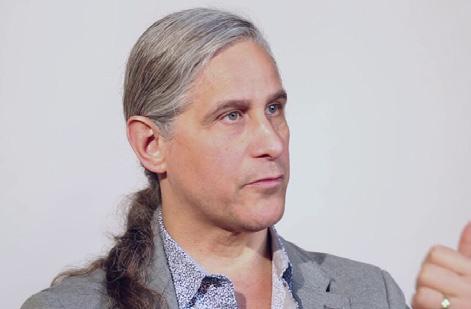
of business process orchestration, and did a project directly under the CTO called High Wire, which later made its way into a bunch of different Microsoft efforts, including their robotics stuff."
So did he work directly with Bill Gates? "We met something like quarterly or on a semi-annual basis to review stuff I was working on." What was that like? "Bill was sort of like a reverse fire hose. You know, a lot of people like to talk and spew out a bunch of stuff. Bill could sit in a meeting room and rock in his chair and listen to all the different points of view and then summarise it with blinding speed and accuracy. So he was a very intense listener. Not a lot of people are like that."
Why did Meredith leave? "I really felt the need to be more directly involved with the people I was serving," Meredith explains. "At Microsoft, it was very difficult to bridge between deep tech and customer-facing situations."
So we're dealing with someone who can be in the room with the most powerful and move forward tech at the highest levels. But I doubt anyone in that room could foresee Meredith's next imaginative leap which, the more I begin to understand it, the more I realise it can change the world.
It is best to keep it simple. F1R3FLY, the company of which Meredith is Chairman and Chief Science Officer, is building a
future where the Internet returns to its founding ideals: freedom, empowerment, creativity. It is based on maths which only a handful of people can understand – a small number that categorically doesn't include me. But then this has been the case for all the great technological upheavals of the past 50 years.
Back in the UK, in London, Stephen Alexander who is F1R3FLY's President, puts it simply: "You don't need to understand. You just need to know it works." Alexander looks at me sympathetically when I express my incompetence at mathematics; I sense a kindred spirit who not so long ago was grappling with it all in ways not entirely dissimilar to me.
“YOU DON'T NEED TO UNDERSTAND. YOU JUST NEED TO KNOW IT WORKS.”
So what is 'it'? It is the underlying mathematics of F1R3FLY. Specifically, Alexander is referring to the RhoCalculus – an arcane but foundational piece of mathematics – which F1R3FLY applies with an originality which other

mathematicians will find breath-taking but which others will need to take on trust. Essentially, Greg had discovered that the previously accepted theory of computation, known as the Pi-Calculus, contained weaknesses that undermined its usefulness. In solving those problems, he developed a much more flexible and powerful system that he called Rho-Calculus, which is now at the heart of F1R3FLY’s technology.
Nicholas Riddle, the COO of F1R3FLY, brings an unusual blend of insight to the role: a veteran of classical music publishing, he spent decades at the helm of Edition Peters, stewarding some of the greatest works in the Western canon. But his instincts have always bent toward innovation. It was Riddle who first began to frame the implications of the technology not merely in terms of
functionality, but of philosophy: "At its heart, this is about restoring dignity," he says. "Whether to patients, to artists, to the public – it's about creating a digital world that behaves more like the best of the real one."
"Imagine you're playing basketball," Alexander says. "You're standing up, breathing, looking, bouncing the ball, aiming, shooting – dozens of things are happening at once. That's concurrency [a key element of F1R3FLY’s technology]. You're not saying to yourself, 'now I breathe, now I bounce, now I shoot.' It all flows."
This, he explains, is what F1R3FLY makes possible in computing terms: instead of the slow, sequential logic of traditional
software, it mimics the lived experience of the human body – parallel, adaptive, aware. "When Greg talks about concurrency, this is what he means. We want software that doesn't just tick through instructions, but acts with the fluid complexity of a living organism.”
The analogy stays with me. This is not just about technology, but about a kind of technological empathy: software built not only to compute, but to behave.
In his laid-back way, Greg Meredith puts it more starkly: "If your software architecture doesn't eat physical threads and turn that into throughput and performance, then your software architecture is dead. You may not know it, but it’s dead.”
It's a dramatic turn of phrase, but one rooted in deep engineering truth.
“WE WANT SOFTWARE THAT DOESN'T JUST TICK THROUGH INSTRUCTIONS, BUT ACTS WITH THE FLUID
OF A LIVING ORGANISM.”
Traditional software can no longer keep up with the way modern hardware works – where performance depends not on faster chips, but on an ability to juggle thousands of processes at once. Concurrency, once a theoretical idea, is now a necessity.
With F1R3FLY, Meredith believes he's built a model that meets that challenge head-on: a system designed not only to run on today's infrastructure, but to thrive in the distributed, high-demand, multicore world of tomorrow.
More admirable even than the mathematical genius itself, is the intention behind the business. "Climate change is real," Meredith tells me, "and I estimate that we have about 25 years left before our existing supply chains will suffer considerably and perhaps cease. F1R3FLY is about preserving what we can of the beauty we’ve discovered for when the species gets to that point.”
This is a business then which melds high ideals with something earthier: namely, the ability to solve a huge number of problems. And everywhere you look, there are those – and amazingly, time after time concurrency and F1R3FLY can solve them. Moreover, providing such solutions in this area has become a strong revenue generator for many businesses.
For the time being, we seem to lurch from one crisis to the next. One of most famous bands in the world – Oasis –launches its World Tour and then the ticket touting spirals out of control, embarrassing the working class credentials of the Gallagher Brothers, and leading to a general sense of everybody being ripped off. With F1R3FLY, that couldn't happen. Next up, cyberattacks cripple vital companies like M&S or the CoOp leading to scenes of people trudging away from tills shaking their heads at the absurdity of a cash-only transaction. F1R3FLY would not permit that either.
Sometimes even entire nations, like Spain and Portugal, suffer power outages linked to digital vulnerabilities. Again, in a world underpinned by Greg's vision, these disruptions would be not only unlikely, but impossible. We're discussing in fact a far more elegant – and so more sustainable –version of things, as secure as blockchain but not unwieldy, which has the ability fundamentally to reshape where power is located in our system.
The more I look into F1R3FLY, the
more I realise that there is a sort of thread running through our modern life which opens up onto profound philosophical questions.
What if all these crises were not isolated flaws – not the inevitable toll of modern life – but solvable symptoms of the same underlying weakness? What if, instead of patching each leak separately, one company, with one imaginative leap, could address them all? F1R3FLY turns out to be that business. As F1REFLY's General Counsel Ralph Benko puts it: "If Greg is right – and by now a great deal of extraordinary evidence, including market adoption, supports that – F1R3FLY may be the most important digital event since the hypertext transfer protocol. Maybe since TCP/IP."
These are big claims, of course, and there are many hurdles for the business to traverse before the excitement of what could happen in theory becomes reality. For all this to work, the team must

convince established industriesfrom healthcare systems with legacy infrastructure to entertainment giants with entrenched ticketing partnerships - to embrace a radically different approach to security and data ownership. Regulatory bodies across different jurisdictions will need to validate F1R3FLY's novel architecture, particularly in sectors like finance and healthcare where compliance standards are stringent and evolving. The business also faces the challenge of translating its mathematical elegance into language that resonates with decision-makers who may lack technical backgrounds but control budgets. Perhaps most daunting is the need to scale rapidly enough to meet accelerating cybersecurity threats while building infrastructure robust enough to handle the massive concurrency demands their solution promises. Yet if F1R3FLY can navigate these obstacles, the potential payoff - a more secure, efficient, and equitable digital ecosystem - seems worth the journey.
"Security must be an enabler, not a jailor," Meredith explains. F1R3FLY's underlying innovation, the 'cap' – a programmable, ultra-secure credential –embodies this philosophy. Rather than gatekeeping access behind brittle passwords, it redefines ownership itself: data, creativity, transactions all guarded with surgical precision, but flowing freely to those who have been given permission to access them.
So how are they going to do it? Stephen Alexander says: "What we want to do is to focus on a few sectors where there's a real problem – and solve it. Health, security, finance... If you break it down vertically, people can say, 'I get that – you can solve ticket touts, or you can protect client confidentiality, or help solve the NHS crisis. That's not a bad position to be in."
All of this now means that the business can enter at an exceedingly attractive price point – F1R3FLY'S applicability to such a range of markets means it
can provide extremely cost-effective solutions to the problems which businesses, sectors – and countries – face. "It is incredibly economic," Alexander continues. “There is no great setup cost, and we're going to price it literally per user. So again, there will be no economic reason why a health authority would say, ‘We can't afford this.’”
It is a pleasant law of the universe that good things often happen to good people. You begin to sense what a good fit this team is. I can see that Stephen and Nicholas mean it when they talk of the problems they want to solve. When I speak further with Greg and Ralph, I can see they are excited about the effect of the business' success: in each, I see the kindly eyes of people who really want to change the world – and not for egoistic reasons, but because it needs changing and it's the right thing to do.
Every great revolution begins with a conversation. For F1R3FLY, that conversation began, improbably, with music and golf.
Alexander recalls: “In 1988, I started building golf services. I built a golf app and had professional connections through that world. About five years ago, John Cook – a pro – came to me and said, 'Golf pros never monetise their time.’ So we built an app to help them. Unfortunately, John got cancer, and we couldn’t launch it. So I thought. ‘It would a be shame to throw this away. Why not do music?’”
This led Alexander to Nicholas Riddle, who had a background in music publishing and technology. The initial vision was narrow - focusing on music teaching and protecting creative work. However, when their original technology partner couldn’t deliver, Riddle mentioned the project to Ralph Benko, who immediately thought of Greg Meredith.
“We then arranged to get Greg to come to London, and we borrowed a room in a vestry in St Bartholomew's, a 900-yearold church, in which to discuss new technology," Riddle recounts, clearly relishing the juxtaposition between old and new. "We talked about music and what we wanted to do, and Greg basically said, 'Yes, I can demonstrate that we can do this.'"
What had started as a solution for music rights gradually revealed a much broader potential. "At first, we thought we were working on the music project," says Riddle, "but gradually we started to see the implications for the planet - in terms of sustainability, security, and empowering people to control their own data."
The team that emerged - Meredith with his mastery of deep math and concurrency theory; Riddle with his publishing and rights management acumen; Alexander with his grasp of communication and markets; Benko, with his background in AI and tech; and investor Steve Knight, screenwriter, producer and creator of Peaky Blinders, was a coalition uniquely positioned to transform the internet itself.
To grasp F1R3FLY, one must first understand the story of the internet itself - a story that, over the past thirty years, has evolved significantly and at a pace which can feel overwhelmingly swift.
In its infancy, Web 1.0 offered information: static websites, early search engines, and the ability to publish without gatekeepers. By the mid-2000s, Web 2.0 arrived, ushering in the era of social media, ecommerce and advertising. At first, it seemed like a flowering of connection: anyone could post, share, comment, be heard.
But beneath the surface, a new inequality took root. Platforms like Facebook, YouTube, and later Spotify centralized power. As Nicholas Riddle


observes: "When you look at platforms like Spotify, they offer access - but at the cost of fairness. Artists reach audiences but often see little real return." The classic example would be the new musician with an album out on Spotify: they have reached market, and might get a degree of pleasure in seeing their work out there. But they have no realistic chance of being found, and therefore no realistic chance of earning a living.
The internet, once a tool for liberation, became a labyrinth of surveillance and appropriation - data mined for profit, creativity commodified, and identity repackaged. Tim Berners-Lee, father of the web, has sounded the alarm: "The future of the internet must empower individuals," he has said.
The financial structures of Web 2.0 exacerbated the divide. Steve Knight,


investor and F1R3FLY advocate, notes: "In the music business, creatives have been systematically stripped of their rights. You make something - and then you lose control over it." We admire The Beatles, precisely because they moved away from the suits Brian Epstein asked them to wear towards their own decisions, their own art. But increasingly, in the era of first Pop Idol, then X Factor and all the rest, this plainly doesn't happen.
But F1R3FLY can change this. Web 3.0, emerging around 2014 with visionaries like Meredith and Vikram Bharati, seeks to correct this trajectory. It imagines a decentralised architecture - where users own their data, where transactions are transparent, and where creativity retains its rightful value.

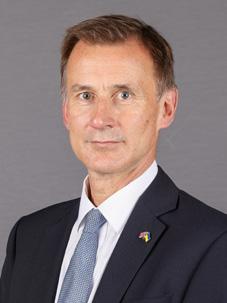
“WE ADMIRE THE BEATLES, PRECISELY BECAUSE THEY MOVED AWAY FROM THE SUITS BRIAN EPSTEIN ASKED THEM TO WEAR TOWARDS THEIR OWN DECISIONS, THEIR OWN ART.”

F1R3FLY embodies this next chapter through its programmable, ultra-secure credentials - the "caps" I mentioned earlier - that allow information to flow with consent, not coercion. Rather than retrofitting security onto broken systems, F1R3FLY reimagines the entire structure.
Greg Meredith explains: "F1R3FLY keeps track of content that is sold to customers. The customer's credentials are stored in a F1R3FLY wallet that has to be accessible for the content to be used."
This wallet is not merely a gatekeeper, but a liberator: "The details in the wallet also contain the agreement between the provider and the customer, defining, for example, whether the content can be sold on by the customer or what kind of mark-up could be charged for doing this,” Meredith continues. ”The transfer of ownership is then recorded on the F1R3FLY system, and a new wallet is
established with the new owner so that it can be used by them."
This shift has profound ramifications across industries. In healthcare, it means patient records can now move seamlessly and safely between providers and patients. In finance, it means transactions that are tamper-proof yet fluid. In media, it means that an artist can sell work directly to a fan - and retain a share of secondary sales forever.
To create these caps, Meredith realised he needed a new mathematical language - one that could accurately describe how modern digital interactions truly work. "I tried first of all to persuade the developer of Pi-Calculus to change it. That didn't really work out," he says. "They were clearly not seeing the world from the same perspective. So I then created my own: Rho-Calculus."
The innovation was profound. "The Rho-Calculus is smaller than the Pi-Calculus and yet more expressive," Meredith explains. "It matches more
aspects of how computation gets done in the Internet. In the Rho-Calculus you can send code around amongst autonomously executing programs."
In other words, F1R3FLY's caps are not static locks and keys; they are living credentials, capable of moving securely between devices and systems in real time. They allow for a new kind of trust architecture: one that is dynamic, programmable, and resilient.
All of this is what makes F1R3FLY, in the words of Steve Knight, "an aspirin that keeps discovering new cures" - a solution initially designed for one pain point (digital rights protection) that now extends to countless industries.
The need for this technology in healthcare could hardly be more urgent. In the UK alone, 13 NHS area health authorities operate in isolation. Mismatched data leads to cancelled appointments, spiralling costs, and patient frustration. In 2017, the
WannaCry ransomware attack devastated NHS systems, leading to over 19,000 cancelled appointments. In 2022, the NHS Digital report found that more than 40 per cent of trusts still lacked basic interoperability. Even today, delays in transferring medical records between trusts can stretch into weeks - an absurdity in the age of instant messaging.
“HEALTHCARE, IT’S NOT JUST ABOUT COST. IT'S ABOUT PEOPLE’S LIVES. WHEN SYSTEMS CAN’T TALK TO EACH OTHER, THE HUMAN CONSEQUENCES ARE PROFOUND.”
Nicholas Riddle captures the frustration: “In healthcare, it’s not just about cost. It's about people’s lives. When systems can’t talk to each other, the human consequences are profound.”
F1R3FLY offers an elegant fix: interoperable, confidential, affordable at scale. Its cap-based security allows a hospital to share only the necessary slice of a patient's data - not the whole file, but exactly what is needed. Stephen Alexander explains: "It's not just connection; it's secure connection - protecting patients, doctors, and budgets."
Greg Meredith adds: "With caps, we can create limited, highly specific permissions that can be revoked at any time. That's very different from traditional database access models where once the gate is opened, everything is vulnerable."
In the US, F1R3FLY has already begun conversations with two very substantial
players in the American health community, both of them keen to take things forward. In Europe, its relevance grows by the day as governments race to digitise records under GDPR and stricter cybersecurity regulations.
In the UK, the longest serving Health Secretary in the history of the NHS and former Chancellor of the Exchequer Sir Jeremy Hunt, welcoming F1R3FLY, notes the biggest barriers to healthcare interoperability: "The chopping and changing of IT budgets which get cut when NHS organisations run out of money; the short tenure of Chief Executives, well below the four to five years necessary to see an IT project come to fruition; and the focus on monthly operational targets rather than long term strategic change."
Given these realities, Hunt is especially open to technological change like F1R3FLY: "It's absolutely vital. The cost of healthcare will bankrupt us unless we adopt technological innovations."`
When asked about principles new healthcare technologies must uphold to earn trust, Hunt is clear: "Full patient access to electronic patient records with full patient control through the NHS app as to how and where their information is shared."
Looking ahead, Hunt envisions an ideal digital health infrastructure: "Everyone able to see an intelligible version of their health record on an app or on their phone. Within a decade that should also include key genomic information to enable prevention of illnesses to which we are genetically pre-disposed."
Beyond healthcare, F1R3FLY is poised to transform how value is exchanged across industries. In finance, the ability to transact securely without reliance on brittle third-party systems offers new resilience against the kind of attacks that have crippled even the most prestigious
institutions, with M&S being only the most noteworthy example among many. Stephen Alexander highlights the hidden fragility of traditional industries: "What happens is that law firms have a document which they think is safe in their office, and they send it to a third party. They have no idea the security of a third party, and that’s when it gets hacked."
F1R3FLY offers a technological alternative to trust based purely on reputation - a solution rooted in verifiable security: "We've actually got a solution that doesn't require legislation. Just technology can solve the problem."
“YOU GO ONLINE, YOU BUY YOUR TICKET TO THE CONCERT, YOU PAY YOUR £50, AND YOU GET A SPECIFIC TOKEN - AND YOU CAN SELL IT ON, BUT ONLY AT FACE VALUE. THEREFORE, THE TOUTS ARE OUT OF BUSINESS.”
As briefly mentioned earlier, in media, F1R3FLY technology can end the era of ticket touts - a timely solution in the wake of the Oasis tour debacle. Alexander explains: "You go online, you buy your ticket to the concert, you pay your £50, and you get a specific token - and you can sell it on, but only at face value. Therefore, the touts are out of business."
Meanwhile, creative rights management

could enter a renaissance. Steve Knight is optimistic: "I think it will offer the creators control of what they've created. You don't create something and then hand it to someone who can change it - you stay connected to it."
This change could unlock whole new creative ecosystems. Knight adds: "You could create something quite weirdand if it had gone through the previous system, somebody would have said, 'That's not going to work'. But this way, you can find your audience directly."
Another sector that can benefit is defence. Alexander explains: "The primary area which can be improved is the protection of all forms of data. This means that plans and records could be put onto a F1R3FLY chain to secure them and to limit access to named recipients."
Alexander cites a real-world example: "In one example, a major security breach has exposed the identities of at least 20 elite special forces soldiers in publicly available documents online. The documents, intended for Armed Forces members, were published without password protection. This leak would not have happened if the identities were stored on a secure F1R3FLY chain."
Perhaps F1R3FLY's most important contribution lies in its environmental impact. According to the International Energy Agency, data centres currently consume between 1-2 per cent of global electricity, a figure predicted to triple by 2030 if unchecked.
F1R3FLY offers a different future through its radical concurrency model. Stephen Alexander explains: "Once we've done that, the throughput is going to grow to be substantially faster through data centres."
This is not merely about speedit's about scale, cost, and carbon:
"Effectively, it will do the same amount of processing using far less energy, far less carbon."
The implications are enormous. Instead of building ever-larger server farmsprojects that drain landscapes, budgets, and national power grids - F1R3FLY can future-proof growth. "You don't need to build X number of new power stations to power the AI revolution," Alexander says. "You don't need it."
Today's AI boom places unbearable pressure on current systems. As Stephen Alexander notes: "The big worry is that AI and the growth of data is going to use up more and more and more power."
F1R3FLY proposes a graceful sidestep. Its concurrency technology uses every available processor cycle with ruthless efficiency - like an orchestra where no instrument ever falls silent. Instead of wasteful duplication, it offers streamlined intelligence. The result? Data centres can be smaller and dramatically cheaper to run.
Greg Meredith ties the vision to urgent necessity: "We have blown way past the 1.5°C targets proposed by the IPCC. Every piece of infrastructure and supply chains are going to be challenged. We want to be part of solutions like a smart, adaptable power grid that will help humanity navigate at least some of the difficulties it has brought on itself.”
Already, F1R3FLY is speaking with major data centre operators, offering a proposition as compelling as it is urgent. As Stephen Alexander sums it up: "We can build the Internet of the future without wrecking the Earth."
Perhaps the most transformative aspect of F1R3FLY lies in how it restores a sense of control - to patients, employees, artists, and fans alike. In a world where data feels perpetually at risk, F1R3FLY offers peace of mind.
For filmmakers and studios, the stakes are immense. The 2024 NullBulge hack of Disney exposed not only sensitive internal data but threatened entire release strategies. F1R3FLY rewrites that reality - you can work knowing your creative output is protected.
In healthcare, patients gain not just better care but dignity, as their records move instantly while maintaining strict privacy boundaries.
And for concertgoers, F1R3FLY creates a world where the ticket system is finally fair - resale is allowed, but not at exploitative prices, with part of any profit flowing back to the creators themselves.
In all these cases, F1R3FLY rebalances the relationship between individuals and systems, removing the uncertainty that has crept into nearly every corner of our digital lives.
Nicholas Riddle captures the potential perfectly: "When you make society fairer, you make it freer."
This is not the revolution of noisy declarations and sudden upheavals. It is more patient than that - an incremental reclamation of trust in a world that has too often mistaken connection for exploitation.
As Greg Meredith often reminds his team, the task is urgent not just for business success, but for survival: "We must build resilience into the fabric of our civilisation, not as an afterthought, but as a foundation."
When people change the world, they begin quietly. F1R3FLY feels like a quiet revolution. No manifestos. No riots. Just better ideas, moving steadily outward, until the world is changed.
If Web 1.0 was the Wild West, and Web 2.0 the age of empires, perhaps Web 3.0, as F1R3FLY sees it, will be like a kind of garden: interconnected, organic, self-sovereign. A place it would be good to walk in a while.

Itwas one of my better decisions. I stepped off the bustling streets of London into the Fo Guang Shan Temple on Margaret Street, and was immediately struck by the atmosphere of tranquility. A group of Buddhist monks were hovering in the courtyard, and I felt myself suddenly in a world that had nothing to do with the rush of luxury, tourism and professions outside.
Housed in a Grade II-listed building designed by Victorian architect William Butterfield, the temple's architecture isn’t really historic by London standards: it can’t quite compete with the great receding spaces of Westminster Abbey, or even Westminster Cathedral. But what it can do is transport you straightaway into another tradition altogether.
The temple's interior is adorned with traditional Buddhist iconography, including a prominent Buddha statue. We all known the sort of statue, but how often do we really pause and think about what it means in a fast-paced world. In short, what can the Buddha do for our careers?
When it comes to the life of the Buddha, much of what we know is drawn from early Buddhist texts, such as the Pali Canon, the Sanskrit and Chinese Agamas, and later biographies like the Buddhacarita by Ashvagosa and the Lalitavistara Sutra. While these sources were written down centuries after his death, they often reflect a strong tradition of oral history, which has preserved key events in the lives of famous figures with remarkable consistency.
Siddhartha Gautama was born a prince in what is now Nepal around 2,500 years ago. Like St. Francis of Assisi, he was born into privilege, yet he quickly realised that material wealth and luxury did little to nourish the soul. His father, determined to protect him from life’s hardships, created a world where suffering simply didn’t exist - at least within the palace walls. He was
surrounded by music, feasts, and every pleasure money could buy. For a modern equivalent one might need to imagine Brooklyn Beckham, or perhaps Malia and Sasha Obama. But eventually, curiosity took hold, and he ventured beyond his royal sanctuary.
What he saw changed everything. Old age, sickness, and death - realities from which he had been carefully shieldedwere suddenly unavoidable. And then, in stark contrast to this suffering, he saw a wandering ascetic, a man who had renounced material life in search of wisdom. It was a moment of awakening. Siddhartha realised that his privileged existence was an illusion, and that true understanding could only come from stepping outside of it.
So, he did. Leaving behind his title, his wealth, even his family, he embarked on a journey of spiritual discovery. He sought out renowned teachers, practiced severe asceticism, and at one point, nearly starved himself in the belief that self-denial was the key to enlightenment. But then he had another revelation: neither indulgence nor extreme deprivation held the answer. There had to be another way.
This insight led him to the famous insight of The Middle Way - a path of balance between excess and hardship. And so, under a Bodhi tree in Bodh Gaya, he sat in meditation, vowing not to rise until he had found the truth. After days of deep contemplation, enlightenment came. Siddhartha Gautama had become the Buddha - the Awakened One.
His teachings would go on to shape one of the world’s great spiritual traditions, rooted in wisdom, ethical living, and mental discipline. Among them was the Noble Eightfold Path, a guide to living well. One of its key principles? Right Livelihood (Samma Ajiva) - the idea that the work we do should be ethical, meaningful, and cause no harm.
As Emma Roche, a philosophical life coach, explains, "Right Livelihood is one of the steps in the Noble Eightfold Path, which serves as a guide for ethical living.

Wikipedia.org
At its heart, it is about engaging in work that is morally wholesome and does not harm others or the planet. It encourages us to pursue work that benefits society."
What exactly does this entail? In Thich Nhat Hanh's beautiful narrative Old Path White Clouds – the best first port of call for anyone who wants to know about the Buddha’s life – the author recounts how the Buddha advised his disciples about work: "For work to be meaningful, it must be done with mindfulness and compassion." The book eloquently describes how the Buddha taught that our livelihood should not cause harm to other beings and should ideally contribute to alleviating suffering. As Thich Nhat Hanh writes, "The Buddha emphasized that how we earn our living affects not just our own wellbeing, but the well-being of countless others connected to us."
The Buddha advised his followers to avoid occupations that cause harm to living beings or that involve dishonesty. Instead, he encouraged work that contributes positively to society and aligns with ethical principles. In the Anguttara Nikaya, the Buddha specifically mentioned avoiding trades in weapons, living beings, meat, intoxicants, and poisons.
This is where we bump up against what we might charitably call a gulf between modern life and what the Buddha was arguing for.

If we take those sectors alone, we can imagine that the Buddha would not be best pleased with the society we have built. The world of human endeavor is vast, and within its sweep are industries that speak to our oldest instincts - power, survival, pleasure, and control. Weapons, living beings, meat, intoxicants, and poisons: these are the sectors that have shaped history, defined economies, and, at times, decided the fate of nations.
The weapons industry, with its deep entanglements in global politics, is an engine of vast employment. In the United States alone, the national defense sector provides work for over 1.38 million people, while the manufacture of firearms and ammunition supports nearly 385,000 jobs, both directly and through supplier networks. It is an industry that thrives on necessity, but one that also stirs unease - an enterprise built on the prospect of conflict, perpetually justifying itself through the language of deterrence. All this would likely have horrified the Buddha – perhaps it should horrify us too.
Parallel to this, though more primal in its function, is the industry of living beings, particularly in the production of meat. The slaughterhouses and processing plants of the modern world are hidden from sight, yet they are among the largest employers in the food sector. In the United States, meat and poultry processing plants alone account for 30.6 per cent of the food and beverage manufacturing workforce. Behind the sterile packaging of supermarket aisles, there is a vast, mechanized reality - a world of labour where hands move with practiced efficiency over conveyor belts, transforming life into sustenance. Again, unless we all start listening to Paul McCartney’s advice rather than just listening to his music, it seems as though we are set on a path which the Buddha would strongly advocate against.
Then there are the intoxicants, the ancient escape from the burdens of

human existence. Alcohol, that most respectable of poisons, anchors an industry employing millions globally. In the United States, the beverage manufacturing sector - of which alcoholic drinks form a substantial part - accounts for over 12 per cent of all food and beverage jobs. Meanwhile, the cannabis industry, surging in the wake of legalization, has become an economic behemoth in its own right, with California alone employing over 83,000 individuals in cultivation, processing, and retail. The human appetite for altered states is not new; it is simply evolving with the times.
And then, there are poisons - more insidious than intoxicants, their purpose less pleasure than control. The chemical manufacturing sector, encompassing everything from industrial solvents to pesticides, employs over half a million people in the U.S., with the production of agricultural poisons alone sustaining nearly 40,000 jobs. Here, the language is not indulgence but necessity, and yet the lines blur - between what preserves and
what destroys, between what sustains life and what quietly erodes it.
In these industries, we glimpse a truth about human nature: whenever an enlightened individual comes along we have a marked tendency to listen to them for a short while – and then to carry on as we were.
But some do listen – and they live lives which we need to learn from. The ancient philosophy of Buddhism continues to influence how people approach their careers today. Bianca Riemer isn’t a Buddhist per se, but her meditation practice in South-East London, which is also based on the notion of pranic healing, draws from Buddhist techniques. Her fascination with the practice also caused her to leave a lucrative job in the financial sector to concentrate on a new kind of life.
She tells me: "Meditation tends to lower
negative emotions such as stress, anxiety and fear-based procrastination, allowing us to have the courage to question the status quo, and to have the brain power and creativity to come up with better ways of how we are currently doing things."
For many professionals like Riemer, Buddhist principles have become tools for navigating modern work challenges. She continues: "The principle that really helped me at the time was accepting that everything changes (the principle of impermanence), and training the skill of equanimity via the specific meditation practice... the principle of equanimity allowed me to be more accepting of whatever unpleasant circumstances arise, and then, thanks to that calmness, be creative rather than reactive."
The question of whether our profession aligns with our values is central to Buddhist career philosophy. Roche points out that "this eastern wisdom challenges us to reflect on whether our chosen profession aligns with our values. To meaningfully undertake this reflection, we need to identify our values and in doing this task we begin to understand who we are."
Beyond career selection, Buddhist principles offer guidance on how we perform our work. Riemer's experience demonstrates how meditation practices derived from Buddhist traditions can transform workplace dynamics: "Meditation on Twin Hearts specifically, which is the meditation offered by the Institute of Pranic Healing, has been shown in clinical studies to not only improve IQ, but also EQ, emotional intelligence."
In "Old Path White Clouds," Thich Nhat Hanh recounts how the Buddha taught his followers to be fully present in whatever task they were performing. He writes, "Whether sweeping the courtyard,
preparing a meal, or discussing dharma, the Buddha encouraged full attention to the present moment." This principle is increasingly recognized in modern work psychology as "flow state" – the condition of complete absorption in a task that leads to optimal performance and satisfaction.
This emotional intelligence becomes particularly valuable in management roles. As Riemer points out, "If companies were to offer more regular meditations to their employees, managers' emotional intelligence and therefore their ability to effectively manage people would drastically improve, helping companies' objectives to foster inclusive work places where everybody thrives."
Roche reinforces this idea: "Many people use Buddhist teachings to evaluate not only what they do but how they do it. It is in this way that Buddhism can offer valuable guidance on how we can pursue our careers. In particular, to approach it with mindfulness, integrity and purpose." The beauty of this is that it’s something everyone can work on, whether we’re in a law firm, sweeping roads, aiming for an Olympic gold medal, or gardening: attention to the present moment will tend to create joy. The Buddhist tradition, from the early discourses of the Pali Canon to the meditative insights of later thinkers like Nagarjuna and Thich Nhat Hanh, has long emphasized the transformative power of mindfulness. The Dhammapada reminds us that “the mind is everything; what you think, you become,” a teaching that underscores how our engagement with the present shapes our experience of life itself. Nagarjuna, with his radical deconstruction of inherent existence, teaches us that clinging to a fixed sense of self or future achievement leads only to sufferingwhereas deep attention to the flux of the moment opens up the possibility of true freedom. More recently, Thich Nhat Hanh has spoken of “peace in every step,” suggesting that joy is not
the distant reward of our striving but rather something accessible now, through presence. Whether in the boardroom, on the running track, or tending to a quiet patch of earth, mindfulness allows us to fully inhabit our lives, revealing that fulfillment does not lie elsewhere but is always, patiently, waiting here.
When we work without mindfulness or ethical consideration, we risk not only personal burnout but also contributing to harmful systems. Rushing through tasks without awareness often leads to mistakes, ethical lapses, and deteriorating relationships with colleagues.
The Buddha taught that acting with haste and without proper attention leads to suffering. This wisdom applies directly to our modern tendency to prioritize speed and efficiency over mindfulness and ethical considerations.
I attended one of Bianca Riemer’s sessions at the Carnegie Library, a space that effortlessly combines the intellectual atmosphere of a historic library with the deeply restorative energy of her pranic healing work. Sitting in the softly lit room, I allowed myself to fully submit to the process, following her guidance as she worked with energy cleansing techniques. At first, I was didn’t know what I was getting myself in for - how could something so subtle have any real impact?
But as the session progressed, I felt a gradual unburdening, as if layers of stress were being lifted away. By the end, I was lighter, my mind clearer. The next day, this newfound clarity seemed to alter my approach to my work, as if I were, all too briefly perhaps, less susceptible to what EM Forster called ‘the world of telegrams and anger’ which can greet us all on any given day at the coal face of life. It was an experience that left me not only refreshed but genuinely curious about how much of our mental clutter is
simply energy that can be shifted with the right practice.`
Riemer's personal experience illustrates the alternative: “What actually happened was that I allowed myself to eat my lunch properly, and have a short walk outside, without constantly checking my phone or replying to emails. As a result of feeling less stressed and anxious, I was then able to take more calculated risks at work and become much more visible with out-of-consensus investment ideas, which ultimately led to me winning industry awards.`
Roche points to the Buddhist concept of the Middle Way as particularly relevant: "Buddhism's 'Middle Way' teaches us to avoid extremes. In the workplace, this means balancing productivity with selfcare whilst ensuring sustainability within our professional efforts."
The earliest major wave of Buddhist expansion occurred during the reign of Emperor Ashoka (r. 268–232 BCE) of the Maurya Empire. Ashoka, after converting to Buddhism following the bloody Kalinga War, became a passionate advocate of the Dharma, sending missionaries to Sri Lanka, Central Asia, and possibly as far as the Mediterranean. The Sri Lankan king Devanampiya Tissa embraced Buddhism, establishing it as the island’s dominant faith. Meanwhile,
the Silk Road facilitated the movement of Buddhist monks and texts into Central Asia and China. By the 1st century CE, Mahayana Buddhism had reached China, where it adapted to local traditions, merging with Confucian and Daoist elements to form distinctive Chinese Buddhist schools.
Buddhism continued its journey eastward, entering Korea around the 4th century and Japan by the 6th century, carried by scholars and monks who integrated Buddhist philosophy with native spiritual traditions like Shinto. The transmission of Zen Buddhism to Japan in later centuries, through figures like Eisai and Dōgen, further deepened the influence of Buddhist thought in East Asia. Meanwhile, in Southeast Asia, the maritime trade routes helped spread Theravāda Buddhism, which gradually replaced earlier Hindu and Mahayana influences in places like Burma (Myanmar), Thailand, and Cambodia by the 12th century.
Buddhism also found its way into Tibet by the 7th century, where it blended with indigenous Bön traditions to create the rich and distinct Tibetan Buddhist tradition, led by figures such as Padmasambhava and later the Dalai Lamas. Though Buddhism eventually declined in India due to factors such as Hindu revivalism and Muslim invasions, it flourished elsewhere and continued to evolve. In the modern era, migration, globalization, and growing interest in meditation and mindfulness practices have led to the resurgence of Buddhism in the West.
Today Buddhist principles related to work have gained such significant traction globally, particularly among younger generations seeking meaning beyond material success. In the United Kingdom, meditation centers and Buddhist communities have flourished, with over 100 regular inperson meditation groups offered by organizations like the Institute of Pranic Healing alone, according to Riemer.
The West London Buddhist Centre near Royal Oak station offers specific programs for young professionals. Walking through its modern, minimalist space designed with natural materials and soft lighting, one can observe a diverse crowd of Londoners in their twenties and thirties. Their Mindfulness for Career Development series is consistently oversubscribed, reflecting the growing interest among young professionals in applying Buddhist principles to work life.
In the United States, mindfulness practices derived from Buddhist traditions have become mainstream in corporate settings, with companies like Google, Apple, and Facebook implementing meditation programs for employees. The popularity of apps like Headspace and Calm further demonstrates the widespread adoption of these practices.
Across Europe, Buddhist-inspired work philosophies have influenced discussions about work-life balance, with countries like Denmark, Sweden, and Germany incorporating aspects of mindful work into their corporate cultures. The European Network of Buddhist Organizations reports growing interest in Buddhist business ethics among young professionals.
In South America, particularly in Brazil and Argentina, Buddhist centres have seen increased attendance from young professionals seeking alternatives to traditional career paths and work approaches. Africa has also seen growth in Buddhist-inspired work practices, particularly in South Africa and Kenya, where mindfulness training is increasingly incorporated into professional development programs. While Buddhism remains a minority religion in most of these regions, its workplace philosophies have transcended religious boundaries to influence broader conversations about meaningful work, ethical business practices, and mindful productivity.
Both Roche and Riemer highlight how Buddhist principles shift our focus from material gain to deeper purpose. Roche observes that: "Buddhism helps shift the focus from solely seeking financial gain to finding purpose and contributing positively to the world."
"THE BUDDHA DID NOT CONDEMN WEALTH, BUT TAUGHT THAT RIGHT LIVELIHOOD MEANT USING ONE'S RESOURCES WISELY AND COMPASSIONATELY."
"Old Path White Clouds" describes how the Buddha taught that wealth, while not inherently negative, becomes problematic when pursued as an end in itself rather than as a means to benefit oneself and others. Thich Nhat Hanh writes, "The Buddha did not condemn wealth, but taught that right livelihood meant using one's resources wisely and compassionately."
Riemer's career transition reflects this principle in action: "Yes, it's very important to me to live in a way that preserves the planet's resources and does not unnecessarily harm others. It did not just inform what kind of career I chose, but also how I behave in the particular job on a day-to-day basis."
This perspective aligns with the Buddha's teachings on the limits of material wealth to provide lasting happiness. Instead, he taught that right intention and ethical action lead to greater fulfilment. Today, the phrase ‘not-for-profit’ arguably echoes the vision of the Buddha. Though he would certainly be mortified by our propensity to kill one another and pollute the planet, the Buddha has his inheritors in the charitable and sustainability sectors.
On the other hand, when we say the Buddha may or may not be impressed by this or that we forget that his practice is all about getting rid of precisely those emotions. We are always coming up against how far he got down the road to enlightenment – and therefore how far we still have to travel if we’re to join him.
For instance, another valuable Buddhist principle for modern workers is nonattachment to outcomes. As Roche explains, "The Buddhist philosophy encourages a non-attachment to outcomes. It teaches that by focusing on effort rather than holding on the outcome, we can reduce anxiety and embrace setbacks as opportunities for growth."
Imagine, then, that your financial results come in - and somewhere deep inside you, you don’t mind one way or another whether they’re good or bad. You must then imagine that this detachment does not stop you from doing your job as well as possible. This paradox is precisely what Buddhist philosophy invites us to embrace: an active life of effort and engagement, but without clinging to results.
In the Dhammapada, the Buddha states, "Let go of attachment to the fruits of action, and act with mindfulness and integrity." The workplace, however, often promotes an entirely different value system - one where success is defined by measurable results, and failure is equated with personal loss. Buddhism offers an alternative: a state of upekkha (equanimity), where one remains fully committed yet unshaken by outcomes.
Zen master Shunryu Suzuki once wrote, "To give your sheep or cow a large, spacious meadow is the way to control him." In the same way, the ability to let go of fixed expectations allows for greater flexibility and creativity in work. This is not an invitation to apathy but rather to a deeper presence in the moment - where the focus is on the task itself rather than on external validation.
Thich Nhat Hanh also often emphasized the practice of non-attachment to results
as a way to free oneself from stress and self-doubt. “When we do our best and let go of our craving for success,” he explained, “we discover a deep joy in the work itself.” This perspective reshapes ambition: instead of being driven by the fear of failure or the lure of reward, we find motivation in a sense of purpose and in the process itself.
This perspective also echoes the Bhagavad Gita, a text central to many Buddhist and Hindu discussions of duty. Krishna tells Arjuna: “You have the right to perform your actions, but never to the fruits of those actions.” In practical terms, this means working hard, making ethical decisions, and striving for excellence, but without being consumed by anxiety over external measures of success.
As we navigate increasingly complex work environments, the 2,500-year-old wisdom of the Buddha offers remarkably relevant guidance. By embracing principles of right livelihood, mindfulness, compassion, and non-attachment, we can transform our relationship with work from one of stress and alienation to one of meaning and purpose.
As Riemer's experience shows, these practices don't diminish professional success - they often enhance it: "As a result of feeling less stressed and anxious, I was then able to take more calculated risks at work and become much more visible with out-of-consensus investment ideas, which ultimately led to me winning industry awards."
The teachings preserved in "Old Path White Clouds" remind us that the Buddha's guidance on work was always practical and focused on reducing suffering while increasing joy. As Thich Nhat Hanh beautifully summarizes the Buddha's approach: "The work of your hands may build the world, but it is the work of your heart that gives it meaning."
Whether through formal meditation practices or simply bringing greater awareness to our daily work, Buddha's teachings continue to provide valuable guidance for anyone seeking to find greater meaning and balance in their professional lives.

BY MARTIN HOSZOWSKI
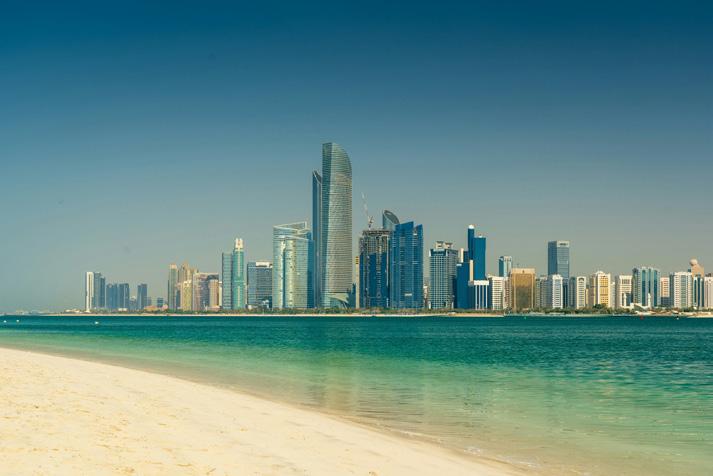
From the boulevards of Abu Dhabi to the tech campuses of Riyadh, the sound of construction and ambition is unmistakable in architecture, education, technology, and national purpose. Sitting in a café in Dubai, watching a group of students in immaculate uniforms board a sleek minibus to one of the city’s bilingual international academies, I’m struck by a question that’s becoming increasingly urgent: amidst Britain's educational crossroads, what lessons might lie waiting here in the Gulf?
The UAE and Saudi Arabia are not merely importing world-class education but fundamentally redesigning it. From
policy to pedagogy, a deliberate, systemic transformation is underway – one which may hold valuable insights into some of the United Kingdom's most intractable problems. At a time when Britain is grappling with persistent challenges like teacher shortages, wavering attainment levels, and uncertainty over AI's role in schools, the Gulf states are powering ahead with coherent strategies that actively attract global talent – not just with salaries but with the promise of purpose, cutting-edge tools, and classrooms where innovation is welcomed, not feared.
This isn't simply a story about oil wealth funding new campuses. It's a
narrative of strategic purpose, deepseated localisation reflecting national values, and bold reform reshaping entire systems. It’s about how organisations embracing 21st-century approaches and working within this dynamic ecosystem build educational foundations, integrating advanced technology and reinforcing cultural identity that could shape learning for decades.
To understand what’s happening, consider two key national strategies. In 2016, Saudi Arabia launched Vision 2030, a sweeping reform programme to diversify the economy. Central to its success is investment in human capital, with significant commitments
to AI-driven infrastructure (the AI sector alone is projected to reach $1.9 billion by 2027). Meanwhile, the UAE’s Centennial 2071 strategy positions education as a core pillar, aiming to prepare future generations with advanced technological skills and instil Emirati values – reinforcing national identity through learning. But these aren't just high-level directives; they translate into tangible changes transforming schools at the ground level. The UK curriculum remains widely admired and licensed by leading schools across the region – yet the UK's support for education technology remains patchy, especially when compared with the bold, well-funded ventures emerging from Riyadh and Abu Dhabi. In Bahrain, a growing emphasis on edtech, teacher training, and digital-first learning is starting to drive similar energy, albeit on a smaller scale, further proof that transformation is not confined to the Gulf’s largest economies.
“WHERE
AND OPPORTUNITY, THE UK STILL TOO OFTEN HESITATES – SEEING RISK, NOT POTENTIAL.”
Step inside the classrooms of institutions like Al Mawakeb, GEMS Education, or the King Abdullah University of Science and Technology school network, and you will witness this redesign in action. You will find students engaged with dynamic bilingual curricula reflecting global and local contexts, leveraging AI tutors for personalised learning support, diving deep into STEM-led inquiry projects, and exploring future career pathways forged through direct collaboration with employers. These students aren’t just

learning about the world - they’re being prepared to shape it.
It’s not just about ambition. It’s about alignment. Unlike the UK, where education policy can shift with each electoral cycle, the Gulf states have laid out long-term, cross-sectoral strategies that include ministries, families, tech companies, and global universities.
In recent years, we’ve seen falling teacher recruitment numbers, overburdened curricula, and a growing gap between what schools deliver and what employers need. The UK’s digital strategy for education, as outlined in the Department for Education’s 2019 EdTech Strategy, presents a vision for integrating technology in schools. However, its implementation has been inconsistent, leading to fragmented adoption across institutions.
Despite pioneering achievements from the Open University to Bletchley Park, Britain now seems unsure whether to embrace or resist the wave of AI and automation reshaping how students learn. Where the Gulf sees inevitability and opportunity, the UK still too often hesitates - seeing risk, not potential. It is not about copying Gulf models wholesale. The contexts and cultures differ. However, the UK should be asking why some of the most effective models of 21st-century education are
now emerging from places we once saw as educational importers. And what does it say about our ability to adapt, innovate, and localise?
One reason the Gulf’s reforms are succeeding is cultural intelligence. Initiatives here work because they are rooted in the local context –faith, language, family structure, and aspiration.
Too often, western educational exports fail because they arrive with assumptions baked in about pedagogy, gender roles, or what “critical thinking” should look like. In Saudi Arabia, for instance, reforms around the role of women in STEM must work within cultural frameworks, not despite them. In the UAE, bilingual delivery is not a luxury but a national necessity.
Founded on the principle that education technology must adapt to culture, not vice versa, 21C has been working with regional partners to build PedTech tools: avatar-based, multilingual platforms that localise content for learners, schools, and ministries. One of those partners is Knowledge Platform, Singapore’s leading EdTech venture, with a track record of large-scale digital rollouts across Asia and Africa, including Pakistan, Kenya, and Singapore. Their merger with Eneza Education and collaborations with UNICEF and
Oxford University Press reflect an ability to deliver at scale and in complex environments – an experience that underpins the technical build of 21C’s learning platform.
Built by 21st Century Digital Teaching Limited, a UK-registered company, 21C is the leading digital maths teacher using AI avatars, bringing a pioneering model during a global shortage of highly qualified teachers. Its platform is grounded in content developed by experienced British educators, combining deep subject knowledge with classroom-tested expertise. These educators are not just curriculum writers – they’ve led transformations in schools once ranked among the lowest, helping them become some of the top-performing institutions. The goal is exam success and long-term capability, preparing students for life, not just qualifications.
“THIS ISN’T SIMPLY A STORY ABOUT OIL WEALTH FUNDING NEW CAMPUSES. IT’S A NARRATIVE OF STRATEGIC PURPOSE, DEEP-SEATED LOCALISATION, AND BOLD REFORM.”
Currently focused on maths, often called the world’s universal language, 21C delivers avatar-led, digital versions of the UK’s GCSE and IGCSE curriculum, blending pedagogical rigour with human-like engagement. This is especially impactful in underserved schools where qualified teaching is scarce. The aim is to expand this

approach across STEM from physics and chemistry to computer science and develop a whole ecosystem of subjectspecific, culturally localised, techpowered learning. These systems are particularly vital as the global shortage of subject-specialist teachers demands practical, scalable solutions – not least in areas like the UK, where political hesitancy and underuse of private innovation have left gaps that tech-led models are now best positioned to fill. One example is using AI avatars to support young learners in Arabic-first schools. Rather than using a generic
chatbot, 21C builds culturally resonant virtual teachers, some with hijabs and others referencing local stories or Quranic examples. The result is a learning experience that feels native, not imported. For British policymakers, the stakes couldn’t be higher. A 2024 parliamentary report warned of a “deepening disconnect” between the classroom and the economy. Tech adoption in schools remains uneven. Young people in deprived areas face digital exclusion that leaves them behind peers not just in the Gulf but also in Estonia and Poland. At the same time, the UK is home

to some of the world’s most respected education researchers, publishers, and EdTech firms. Organisations like the Education Endowment Foundation have trialled AI tools such as ChatGPT in lesson planning. Nesta and Jisc have played key roles in promoting digital inclusion and ethical AI use in education. However, even major government-backed initiatives like Oak National Academy, though valuable during the pandemic, have shown the limits of centralised approaches in driving real, sustainable innovation at scale.
“WHEN EDUCATION STOPS BEING AN ARGUMENT AND STARTS BEING A STRATEGY, THE RESULTS CAN BE ASTONISHING.”
Yet, despite this expertise, uptake and integration remain sporadic. What’s missing is strategic coherence and the willingness to back new models with real commitment. Young academic
ecosystems like those in the Middle East and parts of Asia appear more willing to experiment and adopt emerging technologies at scale.
It’s no surprise that the smart money is shifting east – investors and educators alike see that the Middle East isn’t just catching up; it’s overtaking it by building agile systems that embrace innovation at the speed of relevance.
21C is not just listening to this change but actively leading it. It evaluates opportunities with local partners across the Gulf, identifying ways to blend faith, language, and modern learning techniques – including shorter lessons and contemporary forms of communication – into human avatar-driven education.
Instead of seeing education as a fixed export, the future must be seen as a two-way bridge. That is what 21C is now developing: solutions born in collaboration with Gulf and broader Middle Eastern schools and governments but refined in UK labs and classrooms. It’s a quiet reversal of a century-old dynamic – not post-imperial nostalgia, but postglobalisation maturity.
As I leave Dubai, the sun setting over a skyline dotted with innovation hubs, I find myself oddly optimistic. It isn't because everything is perfect, but because education here is moving purposefully. And when education moves, everything else can follow. Britain has much to teach. But it also has much to learn for the first time in decades. The real lesson from the UAE and Saudi Arabia is this: when education stops being an argument and starts being a strategy, the results can be astonishing.
Companies like 21C aren’t just preparing to participate; they are ready to pioneer.
Martin Hoszowski is CEO of 21C, a British PedTech company redefining classroom learning across the UK, Europe, and the Gulf. Unlike conventional EdTech, 21C builds culturally intelligent, avatarled platforms designed not for homework or revision but for real-time, teacher-quality cover in maths classrooms from KS2 to GCSE. Developed in partnership with global experts and local educators, 21C is pioneering a new category of scalable, AIpowered learning rooted in pedagogy, not just technology. martin@21c.digital
BY CHRISTOPHER JACKSON

At220 years old next year, Henry Poole & Co. is not only one of the oldest tailoring houses on Savile Row, but also one of the most quietly influential. From Disraeli to de Gaulle, and Churchill to members of Cameron’s Cabinet, the clientele reads like a roll call of history. Yet for CEO Simon
Cundey, the secret to longevity is not grandeur, but consistency: "The two things that endure," he says, "are quality and service."
Founded in 1806, Henry Poole is credited not only with inventing the dinner jacket but also with pioneering a customer-first
ethos that has seen it dress monarchs, prime ministers, and generals with equal care. It has held over 40 royal warrants, including that of Napoleon III, and is regarded by many as the original Savile Row tailor. As one style commentator put it, “Henry Poole doesn’t chase fashion - it defines permanence.”
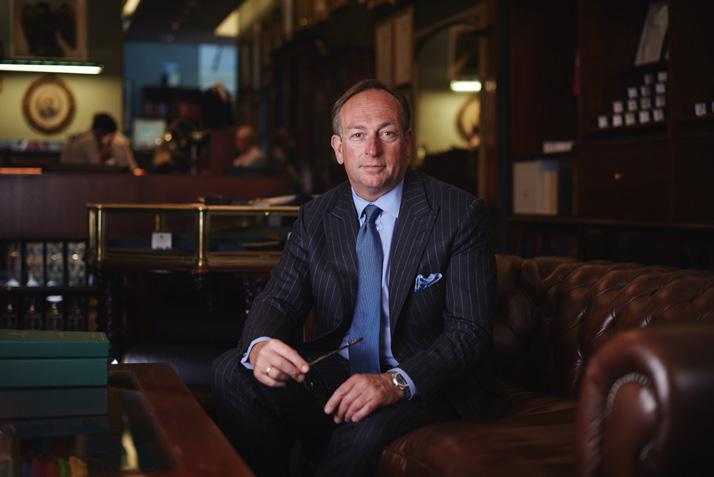
Simon Cundey’s own route into the company began unassumingly. Summer jobs with the Ferragamo family revealed the power of client service. Later came the London College of Fashion, and then time spent among Yorkshire cloth mills, where he developed a deep knowledge of the materials themselves. “You need to know the journey of the cloth – from yarn to finish. It changes how you talk to clients.”
The house he now leads sits somewhere between a workshop and a chapel. Henry Poole is not showy. It doesn’t go in for spectacle. And yet, what it offers is profound: a kind of patient transformation, one fitting at a time. "Everyone is different. Every figure has its idiosyncrasies. Our job is to put things in proportion: to make someone look balanced."
Poole is not fashion-averse, but it is fashion-resistant. “We’ve never ignored fashion, but we’re not dictated by it. We're the middle man in a pendulum that swings wildly.” He chuckles remembering the extremes: Beatles-era lapels on one
end, David Bowie’s wide cuts on the other. A Poole suit, he maintains, is for ten years - and probably longer.
“POOLE IS STILL PURE BESPOKE. THE CUSTOMER MEETS THEIR CUTTER, SEES THEIR GARMENT TAKE SHAPE. WE’RE THE ASTON MARTIN WORKSHOP OF TAILORING.”
But don't mistake that for a static house. Cundey has overseen careful evolution. In the late 1980s, Henry Poole opened its cutting floor to the showroom. “It’s like watching a dish being made at Le Gavroche,” he says. “People want to see the suit being assembled.” The tailoring process itself has become part of the experience, with many clients treating fittings as rituals.
The house has weathered the storms of war, economic crashes, and cultural revolutions - not through radical reinvention, but by holding its nerve. As fashion pendulums swung and mass production dominated the high street, Poole quietly held firm, reminding its clientele that some things are worth waiting for.
What strikes you, listening to Cundey, is his sense of continuity - not just of product, but of values. “This is still a family business. We’re not beholden to shareholders. That’s why we invest in apprentices. It’s not optional.” His father established a training scheme in the 1980s, and it continues today. “You start as an undercutter. When you’ve earned it, you get your own book.”
His sons, Henry and Jamie, are beginning to circle the family firm - one works in finance, the other in operations abroad.
“They’re not tailors yet,” Cundey says. “But they’ve grown up in the business. They understand what it means to hold something and pass it on. The legacy of a
family business is the wish to hope to pass on the company to the next generation in better condition than the previous. That’s the duty. One thing I learned from my father is that the word change should be frowned upon but the word tweak is acceptable. ”
And that admirable sense of duty clearly runs deep at Henry Poole, though it wears it lightly. The house travels five times a year to the United States to serve its loyal client base, and has longstanding links with Japan dating back to 1908, when its cutters helped train local tailors. "Savile Row," Cundey notes with pride, "became the word for 'suit' in Japan."
There’s a cultural curiosity in these global ventures too. American clients often bring ideas that reinterpret the British silhouette - more flair, bolder linings, a flourish of colour. In Japan, reverence for heritage often pushes the house to its most classical expression. This exchange has, in turn, helped Henry Poole subtly evolve - reinforcing its British roots while engaging an international gaze. There have been modern flourishes too. Collaborations with Adidas and Canada Goose have introduced the brand to younger audiences. And next year, he teases, there will be a partnership celebrating their claim to fame as the inventors of the dinner jacket - a story that deserves, and will likely get, its own chapter.
But while celebrity partnerships and global trunk shows are important, Cundey insists the future of the business depends on how well the industry supports its pipeline of talent. “We need young people entering the trade with a sense that this isn’t just a job, it’s a craft. It’s something that rewards patience.” He has seen the risk: talented cutters poached before they are fully trained, or worse, never making it to Savile Row at all. “There’s a generation that thinks working with your hands is somehow old-fashioned. We’re trying to change that.”
He’s also keenly aware of the digital world. While bespoke suits don’t lend themselves easily to e-commerce, Poole has expanded
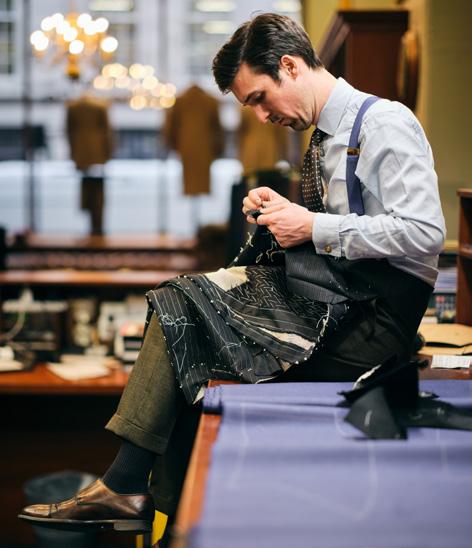
its online presence. “People want to learn. They want to understand where the cloth is from, what goes into each stitch. If we can’t meet them physically, we should at least invite them in virtually.”
And then there is Savile Row itself - sometimes romanticised, often misunderstood. “Poole is still pure bespoke. The customer meets their cutter, sees their garment take shape. We’re the Aston Martin workshop of tailoring.”
He has noticed, post-pandemic, a quiet resurgence. “People want to dress again. They’ve rediscovered occasion. It’s not always suits - often sports jackets - but the care is back.” It’s a heartening note in a world that often seems to reward the careless. There’s also the matter of sustainability - a buzzword now, but part of the DNA at Poole long before it became fashionable. “We’ve always used natural products. Wool, canvas, horn buttons. Our suits biodegrade. They last - and
then they return to the earth. That’s real sustainability.”
The Churchill stripe and the Hearst stripe are already established house specials. This autumn the business will celebrate the Earl of Longsdale lambswool and cashmeres sports jacketing. It will also be working with an Italian mill dating back to 1663. "We share Napoleon III at 1846 in our ledger books and celebrate with a 9oz super lightweight luxury flannel."
In an era of fast fashion and cultural churn, Poole’s persistence feels oddly radical. This is not a brand chasing algorithms or viral moments. It doesn’t need to. The work speaks - softly, precisely, and in perfect proportion.
If you want to understand what British craftsmanship looks like in 2025, start here. There’s no neon sign. Just the sound of shears, the murmur of wool, and a man quietly carrying the weight of two centuries on his impeccably cut shoulders.
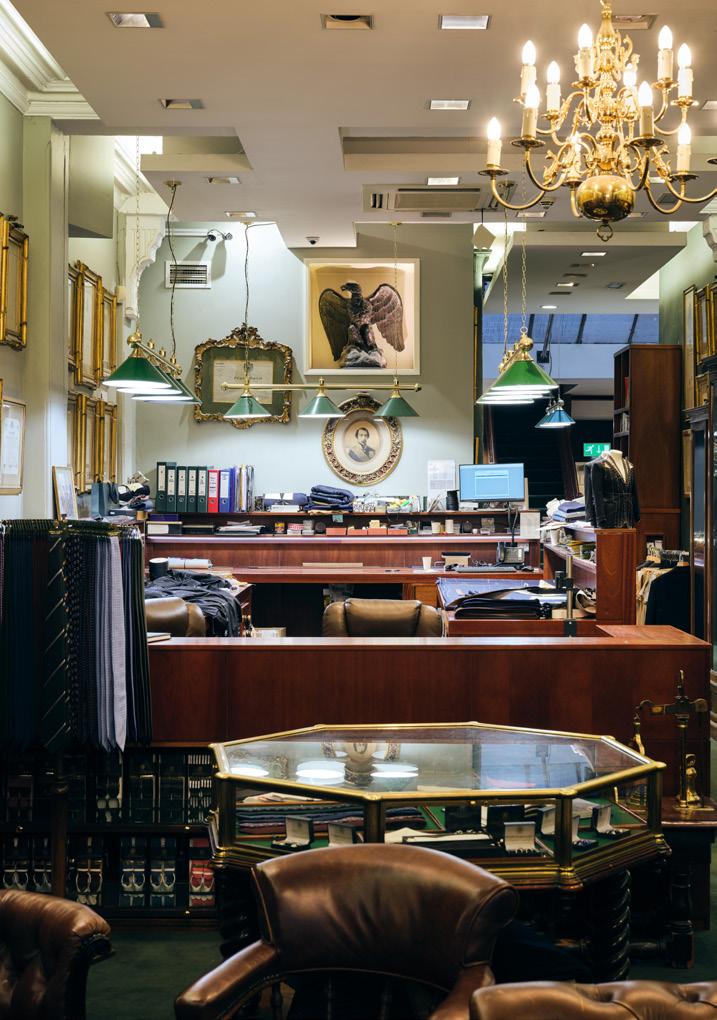

Atthis year’s Salone del Mobile, Palazzo Litta held its breath. Visitors stepped into Tessellation, the debut furniture collection by artist Katia Luna Benaï, and encountered not a conventional showroom but a manifestation of post-modernism infused with cultural heritage - a living geometry: a sculptural, spatial narrative woven from walnut, glass, shadow, and memory.
This was no solo endeavour. The project marked the inaugural collaboration of Helix Bespoke Studio, uniting Benaï’s multimodal design philosophy with the deep artisanal heritage of Chiodelli Arte and Faber Mobili. These two Italian maisons - one rooted in refined interiors, the other in classical woodworking -
brought centuries of knowledge and technical mastery to bear on Benaï’s vision. Together, they sculpted not furniture, but mythologies.
We spoke with Benaï on the philosophy behind Tessellation, and what it means to craft living design from the symbols of the past.
Your Tessellation collection at Salone del Mobile 2025 feels far more interconnected than a traditional series of furniture pieces.
How did you conceive the narrative that ties them all together into a living, breathing journey?
Tessellation was never intended as a traditional collection. From the outset, it was imagined as a living manuscript
- a cosmology of memory, light, and structure. It’s a geometry of the soul where history and futurism spiral together like a double helix.
At its heart stood the Elysian Lamp, which I see as the luminous origin point. Its handcrafted Canaletto walnut base and Murano glass shade, carved through waterjet cutting, do more than emit light, they create rhythm. A pulse. Its bronzed disc is etched with Amazigh and Arab motifs and evokes the “Fruit of Life”, a kind of sacred architecture. Around this radiant nucleus, the other pieces gathered almost organically.
Closest was the Ténéré Armchair, with its Franco-Algerian silhouette, its sculpted back and tapered legs, upholstered in Rubelli’s Iguazu Kieffer
linen. It felt as though the chair was listening, embracing the lamp’s radiance like a memory made tactile.
From there, the journey unfurled: the Pavage de Couleurs cabinet rose like a monument. A geometric monument in Canaletto walnut, it shimmered with marquetry in mother-of-pearl, showing homage to Ottoman and Egyptian traditions while pushing the form into the future.
Many of the pieces reference ancient symbols and philosophies. How do you balance historical fidelity with contemporary reinterpretation?
For me, history is a living language. I treat ancient codes and motifs with reverence, but I refuse to fossilize them. Instead, I allow them to evolve through the lens of contemporary materials, forms, and technologies. Tessellation is not about replication, it is about dialogue.
"IT’S
Les Oiseaux de la Maison Bleue Sourient is a testament to the enduring dialogue between tradition and innovation.
Rooted in the craftsmanship of Chefchaouen’s riads, it pays homage to the artisans who transformed raw materials into lasting symbols of cultural identity. They're maps of belonging. But instead of preserving them behind glass, we’ve given them new life through form, through function, through shadowplay.
Even the La Gazelle Credenza is not a nostalgic gesture, it’s a playful abstract storytelling piece.
Light plays a major role in Tessellation, both physically and metaphorically. Why was the language of light so important to you in this collection?

Light is the invisible architect. It reveals what structure alone cannot: intention, emotion, resonance. In Tessellation, light becomes the storyteller. It activates surface, it animates texture. It allows each object to shift and breathe.
Pieces like L’Hypothèse du Prisme, a glass table with cylindrical legs and refractive prisms, were designed precisely to destabilize the room around them. As light passes through, surfaces dissolve, colors fracture. You begin to question what’s solid and what’s ephemeral.
Even the candle holders - Lumières du Paradis - crafted from reclaimed Venetian
briccole, become miniature theaters of shadow and glow. Each erosion in the wood becomes a pathway for light. It’s a reminder that time, too, illuminates.
Sustainability and respect for craft are clearly embedded in the collection. Can you tell us about the choices you made regarding materials and artisanship?
Absolutely. We made a conscious decision to work with materials that carry both ecological responsibility and cultural memory: Canaletto walnut from the Veneto, reclaimed briccole from the Venetian lagoon, Murano-blown glass, hand-forged bronze. Nothing was chosen

by accident - every grain was chosen consciously.
Working with Chiodelli Arte and Faber Mobili was a turning point. Their ability to translate traditional techniques - carving, marquetry, inlay - into contemporary expressions was nothing short of alchemical. We challenged them, and they challenged us back. This has organically and intellectually formed the perfect union between innovation and century-long mastery.
"IN TESSELLATION, LIGHT BECOMES THE STORYTELLER. IT ACTIVATES SURFACE, IT ANIMATES TEXTURE. IT ALLOWS EACH OBJECT TO SHIFT AND BREATHE."
Some prototypes took three to four months to get right. The mother-of-pearl inlay on Pavage de Couleurs alone took nearly eight weeks. In this way, time itself became a raw material. It’s layered into every surface.
Closing
With Tessellation, Katia Luna Benaï, together with Chiodelli Arte and Faber Mobili, has laid the foundation for a design language rooted in reverence and reimagination. As Helix Bespoke Studio looks ahead, this dialogue between symbolism and structure continues to evolve - from sculptural collections to future architectural expressions, including the development of high-concept residential villa projects that embody the same ethos of cultural depth and refined materiality.
After a successful debut at Salone del Mobile 2025, our focus remains clear: to deepen the conversation between tradition and transformation, and to present new work that challenges the norms of form and design.

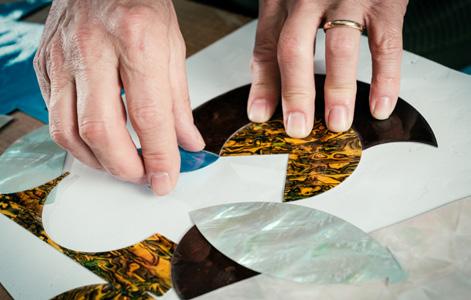
GERMAN, CEO
CHELSEA
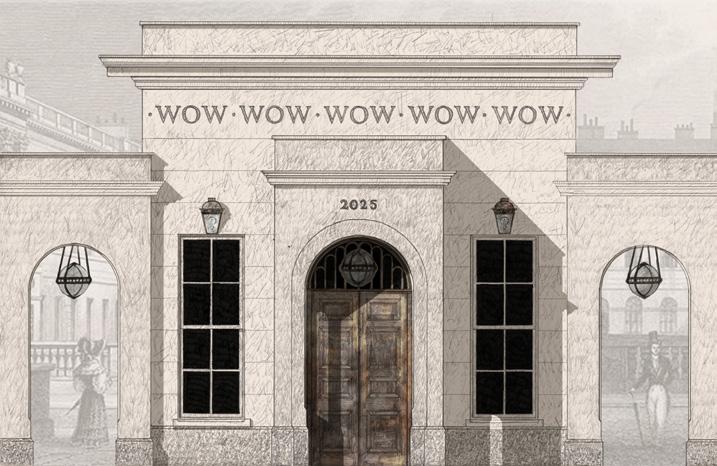
Junehas come to mean ‘WOW!house month’ for all of us here at Design Centre, Chelsea Harbour as we once more prepare to open our doors and welcome visitors into a world of wonder.
A project I first dreamed up during the first Covid lockdown, WOW!house is now considered the interiors event of the summer on the international design calendar.
First opening its doors in 2022, WOW!house is built from the ground up in the Design Centre’s magnificent Design Avenue. Its first alumni of interior designers and room sponsors demonstrated the amazing things that could happen when the industry comes together. Its second iteration in 2023 reached new heights with world-class names conjuring more rooms of wonder,
and a Legend Room and a Terrace added to the floorplan; 2024 was bigger still, with a transformed entrance area and Courtyard space.
“WOW!HOUSE: WHERE IMAGINATION BECOMES INTERIOR REALITY.”
Now in its fourth edition, our awardwinning designer showhouse is ready to inspire visitors with a line-up of renowned designers and world class sponsors.
For 2025, we are creating 22 rooms and outdoor spaces that will allow you to experience at first-hand what is normally out of reach – the work of masters in
their field, who have been given true creative freedom. Together they create an immersive interiors journey like no other; a journey that stands as a remarkable testament to creativity and design excellence.
Taking it back to the initial stages, we begin each WOW!house project by confirming our room sponsors and which room type they would love to own within the house for the year ahead. The designer selection process is very collaborative. In many cases, the room sponsors already have established relationships and ideas in terms of who they would love to work with.
It may be that the sponsor and designer are launching a collection together and the WOW!house room scheme offers the perfect opportunity to showcase this –
we saw this with Schumacher and Veere Grenney at WOW!house 2024 when they collaborated on their incredibly chic courtyard bedroom. In other cases, sponsors want to work with a designer who is more unexpected for them; someone who will put a fresh spotlight on their brand, introducing them to a whole new audience. The WOW!house steering committee are on hand to assist with matchmaking sponsors and designers when required. Each year, it is essential to have international designers involved alongside our UK based talent, this really widens the reach of the event and puts us on the map globally. It is truly humbling to know we have a list of international talent that are so eager to be involved.
Once the room type for the sponsor and designer has been confirmed, it is over to them to let their imaginations run wild. Naturally, interior designers are used to working with restraints and compromises when it comes to their dayto-day projects with clients, so during WOW!house they really relish the fact they can pull together their dream room schemes. Sometimes, the WOW!house



designers create a scheme that is deeply personal, and other times they design for a fictional character, creating a whole narrative around the room.
The WOW!house team works with the designers to bring their dream schemes to life. The joy of WOW!house is the fact it is not an existing building, but one we create ourselves, so the designers aren’t tied to any one specific architectural period or any tricky design issues that they need to solve.
Every year, we strive to create more excitements and unexpected elements for visitors. For 2025, WOW!house is set to have a new façade from Adam Architecture - their design embodies the traditions of classical architecture and works as the perfect invitation to gently guide the eye through a central door into a world of rich design, craftsmanship, and history. We have also introduced new room types for 2025 that we haven’t seen before, including the media room which is sponsored by Nucleus and designed by Alex Dauley, a powder room for Drummonds by Nicola Harding, and a snug for Hector Finch by Thurstan.
The introduction of an entrance garden for Artorius Faber by Alex Hoyle will beautifully set the tone and create a ‘wow’ factor as soon as visitors arrive.
“TOGETHER THEY CREATE AN IMMERSIVE INTERIORS JOURNEY LIKE NO OTHER; A JOURNEY THAT STANDS AS A REMARKABLE
These incredible experiential spaces, brought together by the best in the business from all corners of the globe, will shape aesthetics and influence design
directions, while the wider project stands as a remarkable celebration of creativity and design excellence.
Our goal is to amaze and inspire visitors, giving them the opportunity to see a calibre of interior design that one can usually only access on the pages of a magazine. The beauty of WOW!house is how transportive it is; in one room you will feel like you are steeped in history and in another you are in a clean, contemporary setting.
WOW!house is also very immersive. Our scent sponsor is Jo Malone London, who have worked with each of our WOW!house designers to select the fragrances for their rooms – often layering different scents to build the narrative of the room scheme. Every WOW!house room also has a specially curated playlist, ensuring visitors absorb the ambiance the designer set out to create.
We hope WOW!house’s originality, invention and beauty will continue to amaze as the show opens its doors from 3 June – 3 July.


BrianDuffy, CEO of Watches of Switzerland, is not just a leader in the world of luxury timepieces - he is a man with a mission. As an ardent supporter of The King’s Trust, his involvement goes beyond corporate social responsibility; it is deeply personal. Coming from humble beginnings himself, Duffy has long championed opportunities for young people who, like him, have faced obstacles in life.
“It’s not just The King’s Trust,” Duffy explains. “We have been involved with the Trust now for 17 years, but when we went public as a company in 2019, I decided then that we should elevate our support of good causes, to get as many of our employees engaged and
involved as possible through volunteering, fundraising, or whatever.
We formed a foundation back then, and The King’s Trust has been one of our biggest partnerships. The Trust is our biggest beneficiary of what we do in the foundation. I love what they do.”
Founded by King Charles III when he was Prince of Wales, The King’s Trust (formerly The Prince’s Trust) has become one of the most impactful charities in the UK, supporting over 1.2 million young people. With a 75 per cent success rate in leading participants to employment, education, or entrepreneurship, the Trust has provided a lifeline to those at risk of falling through the cracks.
Duffy has been instrumental in expanding the Trust’s outreach. “Back in 1976, youth unemployment was a major issue,” he notes. “Today, while overall unemployment is lower, we have a core of young people who are so disadvantaged that they don’t know where to turn-whether it’s to complete their education, get a job, or figure out their next step. The Trust steps in to provide that guidance, giving young people a future.”
One such success story is Demi Ruffell, better known as DJ Pebz. Hailing from Tower Hamlets, Demi was struggling to find direction after leaving her arts degree. Through The King’s Trust’s Team programme and its Get Started in Music Production course, she found her confidence and carved out a career as a DJ.
“FOR GIRLS WHO THINK THEY’RE NOT GOOD ENOUGH - I WANT THEM TO KNOW THEY CAN DO IT.”
Demi Ruffell, (www.kingstrust.org.uk)


young people who have turned their lives around,” he said. “Their stories never fail to move me. The King’s Trust is about giving people a chance when no one else will.”
raised a staggering £659,000 which will
King Charles III himself has spoken of his deep emotional connection to the charity. “I have met so many young people who have turned their lives around,” he said. “Their stories never fail to move me. The King’s Trust is about giving people a chance when no one else will.”
“I want to show other people like me what’s possible,” Demi says. “For girls who think they’re not good enough - I want them to know they can do it.” She has since opened for KSI, interviewed Bugzy Malone, and DJ’d at multiple King’s Trust events, proving that with the right support, dreams can become reality.
“I want to show other people like me what’s possible,” Demi says. “For girls who they’re not good enough - I want them to know they can do it.” She has since opened for KSI, interviewed Bugzy Malone, and DJ’d at multiple King’s Trust events, proving that with the right support, dreams can become reality.
a roster of high profile patrons, including actor John Hannah, model David Gandy, and DJ Spoony-each of whom, like Duffy, rose from modest backgrounds to achieve extraordinary success. Their involvement provides vital inspiration to young people facing adversity.
The Trust’s impact extends beyond the UK, with its influence growing in the US as well. “In the US, we’ve worked with The King’s Trust with help from Launch and supported a charity called Habitat for Humanity,” Duffy says. “Our focus is charities that either relieve the impacts of poverty or provide education helping people find their own way out of hardship.”
The Trust’s impact extends beyond the UK, with its influence growing in the US as well. “In the US, we’ve worked with The King’s Trust with help from Launch and supported a charity called Habitat for Humanity,” Duffy says. “Our focus is charities that either relieve the impacts of poverty or provide educationhelping people find their own way out of hardship.”
Megan Ferguson’s journey is equally inspiring. Diagnosed with severe scoliosis at 11, she struggled with mental health and lacked the qualifications to pursue her dream of working in healthcare. Feeling unemployable, she reached out to The King’s Trust. With mentorship and support, she passed her exams and is now a Healthcare Assistant at Great Ormond Street Hospital. Duffy highlights the importance of these success stories. “There is nothing more motivating than hearing young people tell their stories. I have heard from young ambassadors who were reclusive, suicidal, or completely lost, and now they stand in front of 200 people sharing their journeys with confidence and ambition. It’s transformative.”
Megan Ferguson’s journey is equally inspiring. Diagnosed with severe scoliosis at 11, she struggled with mental health and lacked the qualifications to pursue her dream of working in healthcare. Feeling unemployable, she reached out to The King’s Trust. With mentorship and support, she passed her exams and is now a Healthcare Assistant at Great Ormond Street Hospital. Duffy highlights the importance of these success stories. “There is nothing more motivating than hearing young people tell their stories. I have heard from young ambassadors who were reclusive, suicidal, or completely lost, and now they stand in front of 200 people sharing their journeys with confidence and ambition. It’s transformative.”
Duffy is not alone in his commitment. The King’s Trust has a roster of highprofile patrons, including actor John Hannah, model David Gandy, and DJ Spoony-each of whom, like Duffy, rose from modest backgrounds to achieve extraordinary success. Their involvement provides vital inspiration to young people facing adversity.
John Hannah, reflecting on his support for the Trust, remarked, “Growing up in a council house in Scotland, I never imagined I would be where I am today. It’s important to show young people that success is possible, no matter where you come from.”
John Hannah, reflecting on his support for the Trust, remarked, “Growing up in a council house in Scotland, I never imagined I would be where I am today. It’s important to show young people that success is possible, no matter where you come from.”
David Gandy echoed this sentiment, stating, “I’ve been incredibly lucky in my career, and I want to use my platform to give back. The King’s Trust is an incredible organisation that genuinely changes lives.”
Duffy remains optimistic about The King’s Trust’s future impact. “When you help a young person, you’re not just changing their life-you’re preventing what could have been a negative outcome,” he says. “For every young person we help avoid crime, drugs, or dependency on the state, we create a success story that influences their community. The effect multiplies.”
Duffy remains optimistic about The King’s Trust’s future impact. “When you help a young person, you’re not just changing their life-you’re preventing what could have been a negative outcome,” he says. “For every young person we help avoid crime, drugs, or dependency on the state, we create a success story that influences their community. The effect multiplies.”
“THEY GAVE ME CONFIDENCE, NOT JUST A JOB,” MEGAN REFLECTS. “NOW, I’M LIVING MY DREAM.”
“THEY GAVE ME CONFIDENCE, NOT JUST A JOB,” MEGAN REFLECTS. “NOW, I’M LIVING MY DREAM.”
King Charles III himself has spoken of his deep emotional connection to the charity. “I have met so many
David Gandy echoed this sentiment, stating, “I’ve been incredibly lucky in my career, and I want to use my platform to give back. The King’s Trust is an incredible organisation that genuinely changes lives.”

As Watches of Switzerland expands globally, Duffy sees more opportunities to support initiatives tackling poverty and education. “We’re doing more than just donating-we’re actively helping young people find their own way out of hardship,” he emphasizes. “If you don’t know what to do with your life, the Trust will help you find that something. They just want to help people get on with their lives.”
As Watches of Switzerland expands globally, Duffy sees more opportunities to support initiatives tackling poverty and education. “We’re doing more than just donating-we’re actively helping young people find their own way out of hardship,” he emphasizes. “If you don’t know what to do with your life, the Trust will help you find that something. They just want to help people get on with their lives.”
With champions like Brian Duffy, The King’s Trust continues to fulfil its mission. Through mentorship, funding, and unwavering support, Duffy and others are proving that real change is possible-and that success is best measured not in wealth, but in the lives transformed along the way.
With champions like Brian Duffy, The King’s Trust continues to fulfil its mission. Through mentorship, funding, and unwavering support, Duffy and others are proving that real change is possible-and that success is best measured not in wealth, but in the lives transformed along the way.
www.kingstrust.org.uk
www.kingstrust.org.uk
“I WAS SURROUNDED BY
AT THE VERY TOP OF THEIR GAME.”
WE MEET OUR LATEST CANDIDATE FROM OUR MANCHESTER COHORT AND DISCOVER A HEART-WARMING STORY OF SUCCESS.
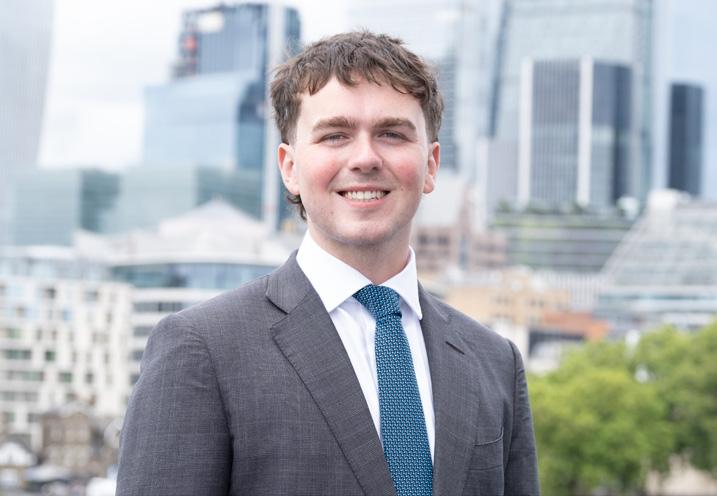
Sometimes, it helps to look at the bursary scheme from the perspective of the donor. The Finito bursary scheme has been active since the inception of the broader commercial business, using the name and experience of advisory board member Dame Mary Richardson. Ever since, it’s been an integral part of what we do.
Tell us a little about your early life and education? What was your family background and upbringing like? I come from a very traditional family
where education was highly valued. Both of my parents were teachers, deeply familiar with the system of success in academia. They understood the importance of discipline, hard work, and structured learning - principles they instilled in both me and my older brother. However, while my brother thrived in this environment, becoming a straight-A student and attending a ‘traditionally’ more prestigious university, I often felt overshadowed. As the second child, I was naturally independent and frequently left to my own devices - sometimes by my own will, sometimes by circumstance. At
this point, I must point out I am very grateful for the impact of my parents’ roles on my life and do not mean the penultimate sentence in a negative way. After receiving mediocre GCSE and A-Level results, I realised that if I wanted to succeed, I needed to take control of my education. University became a turning point. Determined to prove my capabilities, I applied myself fully to my studies, pushing beyond past complacency. Determined to take control of my future, I worked tirelessly, culminating in achieving 90% on my master’s dissertation - a defining
moment in my academic career. I felt this way as I did this on my own merit. I did not embrace help, I wanted to do it myself.
While my journey may not have followed the traditional path my parents envisioned, I ultimately embraced their values of perseverance and selfdiscipline, proving that success is about growth and determination, not just early achievement. I would say that whilst I do not regret my decisions, I wish I knew what I knew now, 10 years earlier - but that’s life.
I never really had heroes growing up, but the person I admired most in a professional capacity was my Great Uncle Gordon. He was a circuit judge - extremely intelligent, effortlessly composed, and someone who just exuded class. I always looked up to him, not just because of his achievements but because of the way he carried himself. He lived in a massive house, which may or may not have influenced my admiration, but more importantly, he acted as a role model for what success in law could look like.
"I REALISED THAT IF I WANTED TO SUCCEED, I NEEDED TO TAKE CONTROL OF MY EDUCATION."
As a trainee lawyer, I feel we had a lot in common, and I only wish we had more time for him to see me follow in his footsteps. When I was at university, I would often ask for his opinion on legal matters, but he would always remind me - half amused - that he had retired long before the statutes I was studying had even been introduced. Still, his legacy and influence shaped my aspirations, and I hope I’ve made him proud. Aside from that, probably, annoyingly, Morrissey.
Tell us about how you came across Finito and what your first experiences with the business were?
From my very first experiences with Finito, I was impressed. Every single person I’ve spoken to has been incredibly knowledgeable, highly professional, and genuinely friendly. It was clear from the outset that I was surrounded by people who were at the top of their game, committed to guiding and supporting those they work with. The atmosphere was both welcoming and inspiring, and I knew right away that I was in the right place to grow and develop professionally.
"IT WAS CLEAR FROM THE OUTSET THAT I WAS SURROUNDED BY PEOPLE WHO WERE AT THE TOP OF THEIR GAME."
What was it like to be photographed by Sam Pearce?
Being photographed by Sam Pearce was a daunting experience at first, as I had never had my photo professionally taken before. To make things even more stressful, I got lost trying to find the building, which didn’t exactly help my nerves. However, once I finally arrived, Sam was incredibly welcoming and put me at ease straight away.
Not only is she brilliant at what she does, but she’s also genuinely friendly, which made the whole experience far more enjoyable than I had expected. On top of getting a quality LinkedIn photo, I also ended up with a guided tour of London along the way. All in all, what started as a nerve-wracking experience turned into a really positive one, thanks to Sam’s professionalism and warm personality. I actually asked for more photos than the one she sent mewhich I was told - was a Finito first.

How did you find your LinkedIn training?
My LinkedIn training with Amanda was a great experience - she was incredibly nice and accommodating, especially with my schedule at the time since I was working. She made the process as smooth as possible, which I really appreciated.
That being said, LinkedIn is a completely different beast from any other social media platform I’ve used. Despite being part of the first generation to grow up with social media, I still haven’t quite got the hang of itand, to be honest, I probably never will. However, thanks to the training, I’m now fully set up and ready to use it… even if I still hate it!
Which mentors did you get assigned to and what sort of things did you work on with them?
At the start of my assignment, I was fortunate to be assigned the very lovely Tom Pauk. He immediately reminded me of my great uncle Gordon in all the
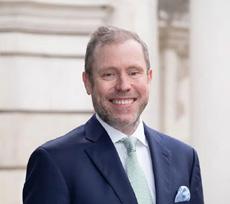
best possible ways - an incredible role model and a true oracle of all things law. Having lived and breathed legal service for so many years, his knowledge and guidance were invaluable. Together, we worked on interview training, planning for psychometric tests, and scheduling application dates, all of which helped me approach the process with more structure and confidence.
"FROM MY VERY FIRST EXPERIENCES WITH FINITO, I WAS IMPRESSED."
Later on, I had the privilege of working with the intelligent James Slater, who built on Tom’s foundation. James took a more active role in selecting firms to apply for, leveraging his network to gather useful insights, and assisting with the writing of application answers. His strategic approach and industry knowledge were instrumental in refining my applications. Both mentors played a huge role in my journey, and I’m incredibly grateful for their support and expertise.
Tell us about the interview process for the role you acquired?
The interview process for the role I acquired was quite unconventional. There wasn’t a formal interview process at all. It started when my friend casually called me and mentioned they were hiring. He gave me the partner’s email address, and I began emailing weekly to follow up. After a while, I grew tired of not getting a response, so I sent a straightforward message: "Hi Raj, any update? Cheers."
"AT THE END OF THE INTERVIEW, HE OFFERED ME THE JOB ON THE SPOT."
Within five minutes, he replied, asking
if I was available for an interview in 30 minutes. I said yes, and we had the interview. During the conversation, we discussed our goals and I shared more about who I am as a person. At the end of the interview, he offered me the job on the spot. It was a pretty spontaneous and informal process, but it worked out perfectly!
What is the role like and does it challenge you?
The role I’m in is focused on crisis management and commercial litigation, and it’s unlike anything I’ve ever done before. I really embrace the challenge, even though I often feel like a bit of an idiot with the number of questions I ask daily. It’s a steep learning curve, but everything always seems to work itself out in the end.
I’m working on high-stakes, multimillion-pound cases, and it’s an incredibly dynamic environment. Every day feels like I’m right in the thick of it, navigating complex legal issues, managing intense client expectations, and developing strategic solutions under pressure. I’ve learned to think on my feet, make quick decisions, and prioritise effectively, all while collaborating with a brilliant team.
There’s never a dull moment – one minute, we’re dealing with an urgent crisis, and the next, we're analysing intricate legal details in a fast-paced litigation scenario. It’s a role that constantly challenges me, pushes me out of my comfort zone, and sharpens my skills in ways I didn’t expect. It’s a demanding but rewarding experience, and I wouldn’t have it any other way.
What are your goals now for the future?
My goals for the future are to continue with what I’m doing right now for the foreseeable future - seeing out my training contract and gaining as much

"I WANT TO BECOME A STEREOTYPE, I WANT THE TOM FORD SUITS AND WORKING 300 HOUR WEEKS."
experience as I can. After that, I’m definitely considering making the move to London. I’ve only visited a few times, but I’ve fallen in love with the vibe of the city, and I can really see myself living and working there.
Having lived in Newcastle, Manchester, and Leeds, I feel ready for a bigger city, with bigger challenges, and of course, bigger pay. I’m eager to dive into the fast-paced, high-stakes environment of London and take on the opportunities it offers. I’m driven by the desire to keep growing in my career, taking on complex work, and continuing to push myself to new heights. The future is all about embracing the next challenge and making the most of the opportunities that come my way. I want to become a stereotype, I want the tom ford suits and working 300 hour weeks – it’s what I actually want to do; obviously not my entire life but it’s a layer cake isn’t it?
Ollie is another one of the students supported by Andrew Law and the Law Family Charitable Foundation and we’d like to take the opportunity to thank them once again for their kind support of the Finito bursary scheme.
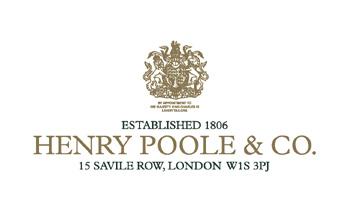

LORD LAMONT
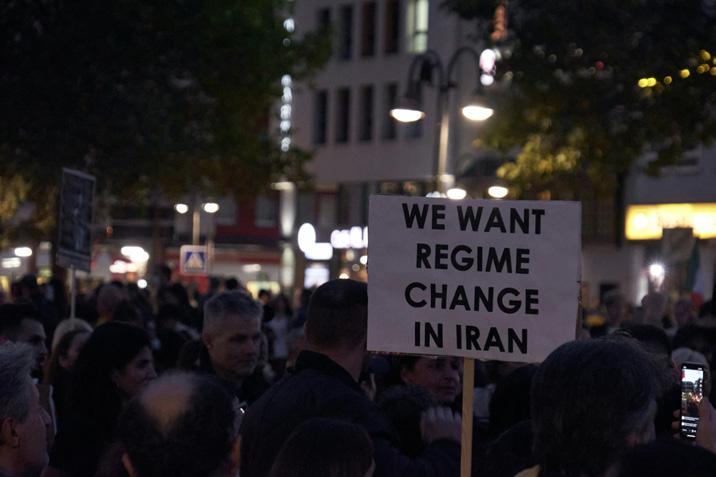
Thereis an odd sensation at gatherings of diplomats and analysts discussing Iran these days. While Arab and Western representatives are always present, there is often no Iranian diplomat in the room, no direct voice from Tehran to offer its perspective. And so, we are left attempting to fill the gap - speculating, interpreting, and trying to make sense of a regime that, over the past few months, has suffered one blow after another.
Since October and December, events have piled up in a way that is both humiliating and destabilising for Iran. The assassinations of high-profile figures in Tehran, the failure of its calibrated missile responses, and an increasingly chaotic domestic economy have all combined to create a sense of disillusionment and weakness. Even internally, Iran’s parliament is struggling
to enforce its own laws - take the morality law, for instance, which MPs passed despite knowing it cannot be effectively applied.
"SYRIA HAS LONG BEEN ONE OF IRAN’S MOST CRUCIAL ALLIES."
Syria has long been one of Iran’s most crucial allies for two reasons. Firstly, because the Assad regime was the only Arab state to back Iran during the Iran-Iraq War - a fact Iran has never forgotten. Secondly, because Syria is the key transit route for supplying Hezbollah, forming part of what Iran calls the Axis of Resistance - or what the West has long referred to as the “Axis of Evil.”
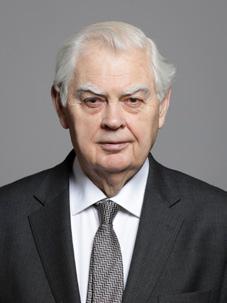
Iran has always justified its regional influence in part as a form of deterrence. Former nuclear negotiator Ali Larijani once put it starkly: “If the United States attacks us, expect Israel in a wheelchair.” The idea was that South Lebanon would
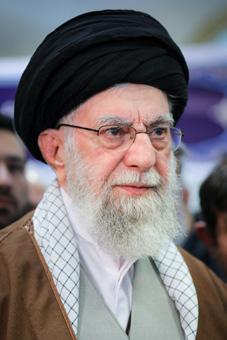
serve as a means of retaliation, creating a third front of terror against Israel. But now, that third front has been weakened, if not outright dismantled. Hezbollah may still have considerable firepower, but the strategic leverage is nothing like what it was.
A crucial question is whether Iran will now pursue nuclear weapons in earnest. Iranian MPs occasionally flirt with the idea, suggesting that the time may have come to override the Supreme Leader’s fatwa prohibiting nuclear arms. Their logic is clear: Iran is under growing pressure, so why not develop the ultimate deterrent?
Yet, my view is that Iran would proceed with extreme caution. The country has seen first-hand the effectiveness of Western and Israeli intelligence, and even small missteps in the nuclear domain could be swiftly and devastatingly countered.
Following the latest events, Iran’s leadership is scrambling for control.
Ayatollah Khamenei is due to address the nation, and President Ebrahim Raisi has already given a speech emphasising that Syria’s future “must be decided by the Syrian people, not external powers.” What Iran fears most is that Syria will become unstable, potentially allowing ISIS or other militant groups to regain a foothold.
Interestingly, even conservative voices within Iran’s Revolutionary Guard (IRGC) and the Majlis have criticised Assad for his brutality and lack of attention to public sentiment - an unusual moment of introspection within the regime.
Many assume that the United States will now apply even greater pressure on Iran - tightening sanctions, squeezing the economy further. Yet, I remain skeptical about how effective this will be. Iran has become highly skilled at sanctions evasion, and its deepening ties with Russia and China provide additional lifelines.
Under Donald Trump’s presidency, there were hints that he was open to talking with Iran - even proposing a meeting with then-President Rouhani on the sidelines of the UN. But Rouhani refused, knowing that Trump had already torn up the nuclear deala move that made direct engagement politically toxic in Tehran. Today, Rouhani is politically discredited, but interestingly, former Foreign Minister Javad Zarif has been allowed back into government, suggesting some willingness to reopen diplomatic channels.
The biggest unknown is what happens after Khamenei. Officially, this is not discussed in public, but behind the scenes, maneuvering has already begun. At 86 years old, Khamenei is in declining health, and his eventual death could mark a pivotal moment. Will Iran take the path of evolutionary change, or will it dig in deeper?
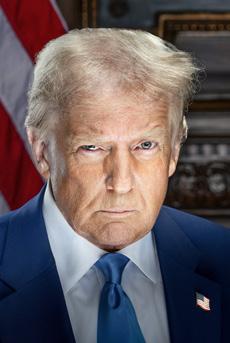
One reason Iran has not seen a mass uprising like those in Egypt or Libya is that many Iranians fear the alternative to the current regime might be even worse. They have seen the chaos in Afghanistan and Iraq, and some prefer a flawed stability over outright collapse. But once Khamenei is gone, a new leadership dynamic could emerge, creating fresh possibilities for diplomacy, reform, or even greater militancy.
"UNDER DONALD
PRESIDENCY, THERE WERE HINTS THAT HE WAS OPEN TO TALKING WITH IRAN."
Iran is at a strategic crossroads. The loss of Syrian leverage, domestic unrest, and economic hardship are all mounting. While the Supreme Leader’s primary goal has always been regime survival, his eventual departure could open up unpredictable new dynamics.
For now, the West must watch carefully, engage where possible, and be ready for a moment of potential transition. Because when Khamenei is gone, the Iran we have known for the past four decades may change in ways we cannot yet foresee.
LORD JOHN ALDERDICE
AsI listen to contemporary political discourse, I am struck by how often discussions are confined to the immediate: economics, institutions, and governance. These issues are undeniably important, but they rarely address the underlying causes of our deepest conflicts. My experience in Northern Ireland taught me that the roots of conflict run far deeper than political structures and economic interests - they are embedded in historical grievances, identity, and deep-seated emotions.
When I first became involved in Northern Irish politics, I, like many others, assumed that rational political actors would pursue their best socio-economic and power interests. But I soon realized that people were engaging in behavior that was profoundly self-destructive, damaging not only to their own communities but to the possibility of peace itself. This realization led me into psychiatry and psychoanalysis, in an attempt to understand why communities acted against their own interests in such seemingly irrational ways. At the time, conventional wisdom among the British and Irish governments, as well as many of the main political parties, was that progress could only be made by empowering reasonable voices in the political center while marginalizing the extremists. The idea was simple: bring together thoughtful moderates, fashion an agreement, and push out the radicals. It was a logical plan. The only problem was - it didn’t work. And it didn’t work repeatedly.
The hard reality was that the extremists on both sides had the ability to destroy any peace process. They could shoot people, plant bombs, and ensure that any progress collapsed into renewed violence. I vividly recall sitting in Stormont with John Hume, the nationalist leader and
committed peacemaker, alongside Ian Paisley and Jim Molyneaux, the Unionist leaders. We faced the stark truth: if we wanted a political process, the extremists didn’t need to be included, but if we wanted a peace process, we had to engage with those who were disturbing the peace. This was not an easy realization. It was ethically and morally difficult. Sitting at the negotiating table with people who had been directly involved in violence was profoundly challenging. Many of us grappled with a deep moral question: if we reached an agreement with those we had fought against, were we betraying the people from our own communities who had died in the conflict? Or, if we refused to seek an agreement, were we betraying our children and grandchildren by handing them a conflict worse than the one we inherited? The choice was stark.
The road to engagement was long and painful. It required listening to things we did not want to hear and sitting with people we did not want to sit with. But we did it because we understood that conflict resolution requires direct engagement with those who have the power to disrupt peace.
The global political climate today is very different from what it was during our peace process. In the 1990s, leaders like Nelson Mandela, F.W. de Klerk, Mikhail Gorbachev, Bill Clinton, and George Mitchell saw leadership as synonymous with resolving conflict. Now, many global leaders define their leadership through conflict itself - escalating tensions rather than reducing them. This is a dangerous shift, as conflict can always be escalated, but once it reaches a certain threshold, catastrophe becomes inevitable.
The reality of our post-1945 world is that total war is no longer survivable in the way
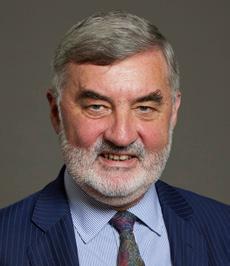
it once was. Before nuclear weapons, even the most devastating wars left civilization intact. Today, a major war carries no such guarantee. We don’t discuss this reality as much as we did during the Cold War, but the risk has not disappeared - it has simply dispersed across multiple actors, making the challenge even greater.
So, what lessons can the world take from Northern Ireland? First, no matter how bitter the conflict, there is no alternative to engagement. Refusing to talk to adversaries does not make them disappear - it only prolongs the cycle of violence. Second, respect is fundamental. Treating an adversary with dignity does not mean condoning their actions, but it is a necessary condition for serious negotiations. And finally, leadership should be measured not by the ability to wage conflict, but by the courage to resolve it.
As I reflect on our journey in Northern Ireland, I recall the words of our Nobel Laureate, Seamus Heaney: "The world has turned into one big Ulster." Conflict is not unique to any one place - it is a human condition. But so too is the possibility of peace, if we have the courage to pursue it.



RINGSIDE REVIVAL
Can boxing survive the influencer era?
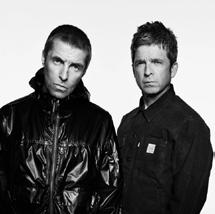
WONDERWALL OR BLUNDERBRAWL? Are Oasis finally getting back togetheror just back at it? 118

ROAMIN’ HOLIDAY

AS THE GUGGENHEIM MUSEUM BILBAO CELEBRATES ITS 25TH ANNIVERSARY, WE CONSIDER THE ENDURING IMPACT OF GEHRY'S ARCHITECTURAL VISION ON URBAN REVITALIZATION AND CONTEMPORARY DESIGN.
Asflames once again engulfed the hills around Los Angeles in early 2025, they evoked painful memories of the devastating Woolsey Fire that tore through Malibu in 2018. Among its casualties was Frank Gehry's iconic "Tin House," a modest yet revolutionary structure that had helped launch his unconventional approach to materials. The celebrated architect watched from a distance as one of his earliest experiments in architectural language burned to ash - a structure whose corrugated metal and industrial aesthetic had once scandalized neighbors but eventually became recognized as a seminal work in American architecture. This cycle of creation, destruction, and renewal seems strangely fitting for Gehry, a figure whose entire career has been characterized by an exceptional ability to transmute setback into creative advancement.
There are some architects who leave the world just as they found it, content to move within the quiet corridors of function, to shuffle the same old deck of aesthetic clichés. Then there is Frank Gehry. Born in 1929 in Toronto, he came into architecture as an outsider - immigrant, Jewish, scrappy - and proceeded to turn it inside out. His name is now synonymous with a kind of glorious, deliberate disorder: buildings that refuse to behave, that ripple and twist as if made not of steel but something with a looser relationship to gravity.
improvised, even ugly. From there, things began to unspool. The titanium-clad Walt Disney Concert Hall, the dancing figures of Prague’s Fred and Ginger building, the Fondation Louis Vuitton: all seemed to laugh in the face of symmetry, standing not as buildings exactly, but as gestures, as explosions caught mid-motion.
And then, of course, there is the Bilbao Guggenheim - perhaps the greatest example of what happens when an architect is allowed to chase his instincts to the very edge of physics.
I remember the first time I walked into Gehry’s Bilbao Guggenheim. Outside, the building swirls like a halfremembered dream, all brushed titanium and unrepentant asymmetry. It shouldn’t work - it looks like it was designed in the split second before waking, before reason sets in and tidies things up. But then you step inside.
It’s not just a museum. It’s a kind of intellectual event, a spatial argument. The usual rules - right angles, careful sightlines - have been thrown away. Instead, you are given volume, scale, a sense that space itself can be sculpted like a material. There is a moment of vertigo: how does something so messy, so uncontained, cohere? What does it mean that we have allowed this to be built, that we now stand inside it? Perhaps it is an admission - an acknowledgement that the old rationalities are spent, that we are now a species unmoored from certainty. Or perhaps, more simply, it is the work of a man who saw that chaos could be made into beauty, and that beauty, in the end, is always worth it.
Like all great artists, he began by doing something else. In the 1950s, he was just another anonymous Angeleno, designing homes and working with Victor Gruen. The seismic moment came in 1978 when he renovated his own Santa Monica house, sheathing it in chain-link fencing and corrugated metal. It was an act of rebellion, of refusal - a declaration that architecture could be something raw, Paul Joyce, Banana Study
And then there’s the Walt Disney Concert Hall. This is the work of an architect who’s prepared to question the very nature of what a building should be. It isn’t still. It doesn’t obey. Its titanium skin billows and folds like sheet music caught in a gust of Pacific wind, each
plane curving away from you in a kind of permanent crescendo. There is something symphonic about it - not in the way architects usually mean when they talk about harmony, but in the way a piece of music refuses to be contained.
Inside, the disorientation continues. The auditorium doesn’t settle into a predictable horseshoe; it sweeps and flows, as if the room itself is bending toward the stage. The wooden panels wrap around you like the ribs of some vast, living instrument, and the sounddesigned with the obsessive precision of acoustician Yasuhisa Toyota - moves with an almost supernatural clarity.
Gehry understands something essential here: a concert hall is not just a vessel for music, but a form of music itself. And as you sit beneath those swirling steel waves, you realize that this building is not trying to contain sound - it is trying to join it.
Or take another of his masterpieces. In the Bois de Boulogne, among the clipped hedges and stately avenues of Paris, there is something impossible moored in the trees. The Fondation Louis Vuitton does not sit on the ground the way buildings usually do; it perches, it hovers. Gehry has built a vessel, but not in any conventional sense - a ship that seems caught mid-transformation, part iceberg, part glass-cloud, part fragment of some future city that never quite arrived.
Approach it from any angle, and it is different. From one side, it is all weight and gravity, great wooden beams locking into place. From another, it is sheer momentum, 12 glass sails peeling away from the structure as if about to lift into the sky. The closer you get, the more you see its contradictions: this is both a place of mass and of air, of engineered precision and of dream logic.
Step inside, and the experience is like wandering into the guts of a machine that has forgotten its purpose. Walkways twist and intersect, staircases vanish around corners, light refracts off every surface, and the outside world is never
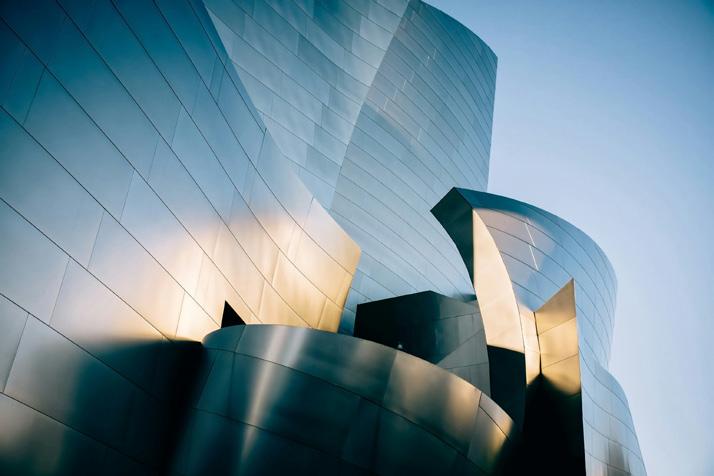
quite shut out. This is Gehry at his most mischievous: he has made a museum that does not behave, a structure that demands movement, that refuses to be neatly understood.
Gehry would often state that he didn't decide to be an architect, but rather stumbled into it. "I accidentally got into architecture," he once confessed to Architectural Digest. "I was an outsider, I came in through the side door." Perhaps – but once he was through the door, he has never gone away.
Even as a young man, Gehry had already by the 1970s almost single-handedly invented a new architectural language with projects like his own Santa Monica home, a raw and unrepentantly deconstructed vision that seemed to emerge from the Californian soil as both an act of defiance and an embrace of its fragmented, chaotic energy. Wrapped in an armor of chain-link fencing and corrugated metal, punctuated by sudden,
jagged skylights and unfinished plywood, it was a house that did not settle into its neighborhood so much as interrogate it - an existential provocation in built form. It showed a completely undaunted sense of the possibility of American architecture, and by association, American life. The European ideal, from Gehry’s perspective, was all very well, but might something new be possible in this vast country?
"I was looking for a way to express myself differently," Gehry explained to The New Yorker. "I got angry at the world of architecture as I saw it in the late sixties. It was so preconceived. It was like driving down the highway and knowing exactly what was coming. I said, 'There's got to be a better way.'"
And if something was possible, then what distinguished the American case from the European? For Gehry, the answer lay in embracing materials considered prosaic or industrial – just like the chain-link fencing, corrugated metal in the Santa Monica structure –
and elevating them to expressive artistic elements. "I approach each building as a sculptural object, a spatial container, a space with light and air, a response to context and appropriateness of feeling and spirit," he told the Paris Review. Many of these buildings still stand today as he always said they would.
"I GOT ANGRY AT THE WORLD OF ARCHITECTURE AS I SAW IT IN THE LATE SIXTIES. IT WAS SO PRECONCEIVED. IT WAS LIKE DRIVING DOWN THE HIGHWAY AND KNOWING EXACTLY WHAT WAS COMING. I SAID, 'THERE'S GOT TO BE A BETTER WAY.'"
The great innovation here is the
deconstructed form which mirrors the fractured, complex nature of contemporary life. For Gehry, traditional architecture was constrained by symmetry and proportion, characterized by boxed rooms, which are ideal for establishing hierarchical systems. Gehry's buildings are different: the flowing, undulating spaces which would go on to dominate his later work are really his invention.
But these insights were built on a deeper intuition which had to do with the need to respect the urban fabric while simultaneously challenging it, making Gehry the purveyor of what critics called deconstructivist architecture. This meant that his architecture was meant to embody the tension between order and chaos. Most famously, he once expounded his views on contextual design: "A building should not imitate its neighbors. It should be of its time while respecting what came before."
Gehry's architecture belongs to its moment – and he accentuated this idea by building often in titanium and stainless steel. The prominent sculptural forms in these buildings are intended to relate to human emotion – and there is perhaps the sense that Gehry's buildings correspond not only to the landscape they're in but to human beings themselves: they are, perhaps, attempts to create functional counterparts to the contemporary soul. "Architecture should speak of its time and place, but yearn for timelessness," he told PBS. "There has to be that element of awe."
What can the ordinary professional learn from Gehry's extraordinary career? Perhaps the most powerful lesson lies in his relationship with failure. Gehry's professional journey teaches us that setbacks are not merely obstacles to be overcome but potential sources of creative renewal. "Creativity is about play and a kind of willingness to go with your intuition," he said in a TED Talk. "It's

about trusting your gut, about not being afraid to make mistakes, and admitting when you do."
When his early experimental designs faced criticism or rejection, he didn't retreat to safer, more conventional forms - he doubled down on his vision while finding ways to make it viable. "You've got to bumble forward into the unknown," he says.
In our own careers, we might view professional disappointments as invitations to deeper introspection rather than signals to surrender. Gehry's approach suggests that when faced with
rejection, the question is not "How do I conform?" but rather "How might I articulate my vision more effectively?"
Another striking element of Gehry's career is his willingness to embrace technological disruption rather than resist it. When computer modelling emerged as a potential tool for architecture, Gehry - already in his sixties - was smart enough not to dismiss it as a threat to traditional craft. Instead, he pioneered the architectural application of CATIA software from the aerospace industry, transforming a potential disruption into his competitive advantage.
"I was sixty years old before anybody paid any attention to me," he has said. "The aerospace technology opened up the formal vocabulary for me." In an age where technological change threatens countless professions, Gehry's example reminds us that adaptability need not mean abandoning our core values. Rather, it might mean finding new tools to express those values more powerfully than before.
"I
Perhaps most instructively, Gehry demonstrates that career longevity often depends on balancing contradictory forces: an unwavering commitment to one's vision alongside a willingness to continually reinvent oneself. He has remained recognizably "Gehry" across decades while never repeating himself. Each building represents a new problem to solve, not a formula to apply. "I approach each project with a new insecurity, almost like the first project I ever did. I get the sweats. I go in and start working, I'm not sure where I'm going. If I knew where I was going I wouldn't do it."
For those navigating long careers in changing landscapes, this suggests that professional identity should be rooted in approach and values rather than specific techniques or outputs. The question becomes not "What do I make?" but "How do I think?"
It all amounted to a great vision of expressive freedom by a man who in his life was actually rather methodical and exacting.
As his career evolved, Gehry's buildings began to look so different as to not seem to be from the hand of the same architect, but of course they were in different contexts and Gehry was committed to an architecture which, to a near obsessive degree, took into account

place. "For me," he told Architectural Digest, "every day is a new day, each project is a new project. I approach it with a new sensibility."
Gehry had thought through the viability of his structures – although sometimes this has been exaggerated a little. The Guggenheim Bilbao did survive its transition from impossible computer model to physical reality, and the director sent Gehry effusive praise: "Museum stands as a monument of your genius thousands of visitors provided by perfectly maintained service congratulations. Congratulations."
Frank Gehry is, at his core, an architect who thrives on instinct and rebellion. It might be said that his work, with its signature fluidity and rejection of traditional form, mirrors his personality - a mix of playfulness, audacity, and deep contemplation. Gehry is not one to abide by the strictures of classical architecture, nor is he concerned with the expectations of the establishment. Instead, he approaches his craft with the curiosity of a sculptor and the spontaneity of a jazz musician, letting his forms emerge organically from a process of discovery. "He is not an architect who works from
logic outward," observed architecture critic Paul Goldberger, "but from feeling inward." It’s an interesting distinction and this emotional and almost subconscious approach sets him apart, making his buildings feel alive - moving, twisting, and defying the rigidity of their materials.
"EVERY DAY IS A NEW DAY, EACH PROJECT IS A NEW PROJECT. I APPROACH IT WITH A NEW SENSIBILITY."
Despite his global recognition, Gehry has often expressed self-doubt, a trait that makes him an unusual figure in the world of so-called ‘starchitects’. He does not possess the cold detachment of many of his contemporaries but instead seems to approach each project with a sense of personal vulnerability. Friends and colleagues have noted his introspective nature - he is both wildly confident and quietly insecure, an artist who never feels his work is finished. "There’s an uncertainty to him, a need to prove himself again with every new project," says architectural historian Victoria Newhouse. This humility keeps his work fresh; he is constantly refining, experimenting, and pushing boundaries, never allowing himself to become stagnant or complacent.
At the same time, Gehry is known for his warmth and irreverent humor, a trait that extends to his interactions with clients and colleagues. He has little patience for pretension and has been known to dismiss his critics with sharp wit. When asked about the backlash to his unconventional forms, he once famously responded with a middle finger.
Unlike many modern architects who prioritize spectacle, Gehry insists that his spaces remain human, livable, and engaging. "He makes buildings that people actually love, and that is no small thing," Goldberger once wrote. This ability to blend the radical with the familiar, the
avant-garde with the deeply personal, is what makes Gehry not just an architect, but an artist of space and structure.
Further professional challenges were round the corner. On numerous occasions, projects were delayed, budgets slashed, and designs compromised. Though Gehry was on site and able to adapt quickly, it was a period of high tension, and several major commissions were altered beyond recognition along with much of the artistic vision which their creator had intended. "Life is chaotic," he told The Independent, "Buildings should reflect it." But again he was undaunted and took these losses as inspiration for ever more ambitious work that stands today.
There is something magnificent about the simplicity of Gehry's approach: when faced with setback, he went to work. "Don't play victim," he once advised architecture students. "Work harder!" In its confident forward movement we get very close to the essence of the man.
Gehry always said that his buildings changed how people experienced space. "I think my best skill as an architect," he told Smithsonian Magazine, "is the achievement of hand-to-eye coordination. I am able to transfer a sketch into a model into the building."
Perhaps there is something poetically apt in the way fire claimed Gehry's Tin House in 2018, just as flames recently threatened the hills where many of his Los Angeles works stand. For an architect whose career has been defined by transformation - of materials, of spaces, of setbacks into opportunities - there is a certain symmetry. Like his buildings that refuse conventional forms, Gehry's legacy refuses conventional narratives of success. It reminds us instead that creation is not a linear path but a cyclical process where what really matters is vision – and your ability to see that vision through.

GEORGE ACHEBE

You’dneed to have been without WiFi these past few months not to notice that Oasis are back in the public consciousness on a wave of 90s nostalgia.
This reunion tour, a performative truce undertaken for money (there is no new music in the offing) hasn’t exactly been a smooth experience. First up, the ticketing system was shown to be faulty, with touts making at least four per cent of tickets sometimes sold at 40 times their resale value.
This caused the Starmer administration, not always noted for its responsiveness, to look into the matter. Culture Secretary Lisa Nandy released a statement: “The chance to see your favourite musicians or sports team live is something all of us enjoy and everyone deserves a fair shot at getting tickets - but for too long fans
have had to endure the misery of touts hoovering up tickets for resale at vastly inflated prices.”
This is obviously true. There is an added awkwardness due to the fact that it’s the Gallagher brothers, always apparently on the side of the working man, who have presided over such high prices.
Secondly when a set list was released, and Liam replied over Twitter, perhaps jokily, that the set would be under an hour. Whether true or not, enthusiasm was further dampened.
Despite this bad start, it must be said that there is always something to be learned from nostalgia even if the reunion itself turns out to be a damp squib. Oasis was all about nostalgia anyway in the first place. In particular, it was a nostalgia for the Beatles and really what one might call a Lennon-first Beatles, where John
with his attitude was slightly more to be celebrated that Paul with his essentially angelic gifts. Liam named his son Lennon not McCartney.
The success of Oasis was therefore really difficult to divorce from our openness to nostalgia at that point. This nostalgia was in itself a strange thing. The fact that they were able to reignite a genuine excitement about a band who had only split up 24 years before the release of their album Definitely Maybe is instructive in itself.
What was the reason for it? For one thing, the world had moved so fast between the 1970s and 1994 that there seemed a definite gap helped along perhaps by the fact of John Lennon’s tragic death in 1980, and by the rapid developments of Thatcherism. It would have been harder to be nostalgia for
1370 in 1394 than it was 600 years later. There wasn’t quite that pace moving you from one epoch to another, creating that difference between times which allows you to be nostalgic at all.
Nevertheless, Oasis, and their rivals Blur and Pulp, arrived in a new world with news which shouldn’t have been particularly earth-shattering: the 1960s had been quite good. But rock and roll is for the young, and their audience was young too. I personally wouldn’t have heard the Beatles so long without the Gallagher brothers’ recommendation. Any appraisal of Oasis written by someone born in the 1980s should enclose an aside of gratitude.
“SOMETIMES THE EXCITEMENT OF A MOMENT CAN CATCH US UNAWARES, AND WE GROW UP AROUND THAT MOMENT, SHEDDING THAT EXCITEMENT AS WE GO: THE SCALES FALL FROM OUR EYES.”
There’s a third reason. Oasis’ brief period of ascendancy through their debut and their follow-up (What’s the Story) Morning Glory (1995) also happened to inhabit that strange moment just before the world really became unrecognisable from it had been: these bands were preInternet, and so also took advantage of the pre-Spotify business model where things like Top of the Pops, the singles chart, and record labels mattered. Being signed meant everything. Nowadays everybody can get to market.
They couldn’t then, and so those who did had an exponential importance, and so were able to dominate the scene. If you weren’t signed you weren’t heard of – or heard.
So how good were Oasis? As one

listens back to their two most famous albums, one can never be sure to what extent one’s enjoyment of the music is nostalgia-related and to what extent it has to do with the music itself. My guess is that the very fact we’re not sure is a sign that the music might in strict terms not have endured all too well.
There are moments when to listen to Oasis is to be confronted by banality dressed up as inspiration. One suspects an apparent subversiveness which is really a deadly conformity.
It was Vladimir Nabokov who noted that in the 60s it was the shirtless drugtaking attendees at Woodstock – those who looked like, and claimed to be – the counterculture who were all along really the herd animals. The 1990s seem to have worked somewhat in the same way. One thinks of the Adidas jumpers with two lines down the arms; the vapid swagger of the frontmen; the sad drug-taking ending up of most of them. It was a hedonism without any of the Timothy Leary and Aldous Huxley esoteric content. Some felt at the time that the
advent of the Spice Girls and then Pop Idol spoiled the Britpop movement. But it was probably always redundant in the only place that mattered: within itself. This is partly because it was a rebellious movement which was sometimes rebelling in a vacuum. Virtually all the gains had already been won, and so in some cases there was nothing to do but reiterate them, or even to simply utter nonsense. The Sixties had railed against the Edwardian power structures. Peter Cook mocked the then prime minister Harold MacMillan to his face, and impersonated ignorant judges. But when you mock them a second time you are merely building on territory you have just won, and it was the winning of it that was the memorable thing.
In Cigarettes and Alcohol, Noel Gallagher told a nation where cigarettes and alcohol were de rigeur that he wanted those things. This is a world away from Lennon’s explorations of the psyche in ‘Strawberry Fields Forever’, Harrison’s decision to go to India, or McCartney’s inspiration to use an entire orchestra in

‘Day in the Life’. There is in fact a law in art that nothing too great can easily be achieved in that same genre just after a great genius has come along. This is why there are no good plays in the years after Shakespeare’s death. John Keats tried to write an epic poem in the early 1800s but found that Milton’s Paradise Lost, published in 1667, for the attempt to be viable. Great artists take up oxygen and the others come up behind them, panting for breath.
But there is nothing wrong per se with reiteration. But once you’ve established that Oasis not only attempted nothing new, but in fact committed themselves to pastiche, the question then becomes: how well did they carry off what was essentially a tribute act?
To take the lyrics to start with, there is hardly an Oasis song that doesn’t mar itself with some version of nonsense. In writing things like: “I knew a girl called Elsa/she’s into Alka Seltzer’ in the song ‘Supersonic’ Gallagher was copying Lennon’s sublime gift for nonsense in
‘I am the Walrus’. The difference is that Lennon’s lineage goes back through Lewis Carroll, and satirises the culture: “I am you as you are me as you are he and we are all together.” His images are originals – (‘see how they run like pigs from a gun’), and emanate a strange confidence, even a certain knowledge. That song sounds both potentially true on some level and also clearly a joke: it works on two levels. This in turns means it can bear repeated listens. Meanwhile, Gallagher’s is just derivative of Lennon’s adding nothing but his own fandom.
She’s electric
She’s in a family full of eccentrics
She’s done things I’ve never expected And I need more time
But if this doesn’t feel enough now, why did it feel so at the time? In one sense this is simple: we were younger then, and the world was too. Sometimes the excitement of a moment can catch us
unawares, and we grow up around that moment, shedding that excitement as we go: the scales fall from our eyes. The art and music which endures is in some way impervious to the moment in which it arose.
The reasons were also in part political, and sometimes seem to look forward to the levelling up debate which happened during the Johnson administration. This was the sound of Manchester, but made mainstream: the edgier sound of the Stone Roses given a popular twist.
But there are also points to be made in Oasis’ favour. To give Noel Gallagher his due, Oasis would never have been a pop culture moment at all, if it hadn’t been for Noel’s ability with a melody.
This was for some reason especially evident on the B sides: one thinks of ‘Half the World Away’, ‘Talk Tonight’, ‘and The Masterplan’ – songs written and sung by Noel, which always feel like they matter a bit more somehow. These are things he kept aside, and perhaps couldn’t quite bear to give away to a younger
problem who he was already falling out with.
Even so, these songs would have been with more work, and with some marginal rewriting of the lyrics. Why, for instance, might somebody’s dreams be made of strawberry lemonade? There is an old and lovely Jewish saying that ‘Life is strawberries’ which would be a nice hook for a song, but with Gallagher one always feels that made and lemonade happen to rhyme: the rhyme was made and left there – considered good enough. But no true artist really feels that their first thought is good enough. It was the Father Ted creator Graham Linehan who once pointed out that the best bit of writing is the second draft. With Gallagher I’m
Likewise Don’t Look Back in Anger would be better if we knew what Sally were waiting for; ‘Live Forever’ would be better if we knew more about where the garden is and what it means; and it is not clear if Champagne Supernova really means anything at all, meaning that we have 7 minutes of euphoria without any decent reason to feel euphoric.
Despite all these reservations and more, as you listen to any highlights
compilation of the 90s, you can feel that Oasis, more even than Blur or Pulp can transport you to that time. Whatever the band’s deficiencies, they were invited to Number 10 by Tony Blair – and perhaps the then PM shaking hands with Noel was in some ways the defining image of that decade.
“TO TAKE THE LYRICS TO START WITH, THERE IS HARDLY AN OASIS SONG THAT DOESN’T MAR ITSELF WITH SOME VERSION OF NONSENSE.”
We should add that if we want to understand that time, the music is more revealing than other art forms. True, the Millennium Dome and the London Eye, in their brash confidence seem to hint in architecture at Blair’s eventual hubris over Iraq, but they still feel like they had no true energy in them and that that was really the problem. Likewise, although many, including Blur frontman Damon Albarn, enjoy the humorous nihilism of Martin Amis’ books like London Fields
(1995), this was a time when people began to read less as the number of screens proliferated exponentially.
Finally, we all remember the Brit Art phenomenon and how we were meant to be impressed by Emin’s bedroom and Hirst’s shark. Who thinks about these things now? The truth is these were intellectual discussion points and never popular the way Britpop was. Nobody really cared about them then because they were never intended to stir the emotions and in the end that’s what counts.
But people cared about films like Trainspotting (featuring music by Albarn) and they minded deeply about the music because it was a gateway to hedonism. Hedonism is always a form of rebellion because it basically involves children giving their parents a fright about how far they might take it. In that sense Britpop was just an age-old generational acting up.
What is most notable is that nobody at the time seemed to pause and wonder if the example set by the Gallagher brothers was worth following or not. Blair, who had once been in a band The Ugly Rumours at university, calculated

that it was a vote-winner to endorse them. So it was time to binge-drink, be promiscuous and take drugs. ‘Lose control/hit a wall/but feel alright’ as Supergrass, one of the lesser bands of the time put it. I can only find one warning about going too far in the whole cannon of Britpop when Skunk Anansie in the song ‘Hedonism’ say: “Just because it feels good/doesn’t make it right.”
In all this, there was only really Damon Albarn to satirise it and it’s not surprising that he clashed especially with Liam Gallagher. Albarn, a reader of Martin Amis as I have just noted, particularly promoted the Kinks. He looked like he understood that it wasn’t all it was cracked up to be. He satirised the package holidays scene in ‘Girls and Boys’, the mores of a typical London neighbourhood in ‘Parklife’, the longing for a placebo in ‘The Universal’, and the rat race in ‘Country Life’.
In one sense when the Blur v Oasis battle of the bands it was a simple class contest. The battle was initially won in the short term by Blur when ‘Country Life’ went to number one ahead of Oasis’ dire ‘Roll With It’. In the medium term, Albarn was more sensitive to the opinions of other people than his rivals and so less suited to fame than they were. In the end, the band’s self-loathing album The Great Escape couldn’t compete with the carefreeness of (What’s the Story) Morning Glory.
But it’s possible today to wonder about the vitriol which the whole thing sparked. In the first place it had to do with the personalities themselves. Noel said he wanted Damon to get AIDS, and Damon wasn’t the sort of person to back down either. This childishness was gleefully reported during a time when, unlike today, the economy was thriving, and Blair was heading towards a gigantic majority. There was simply less political jeopardy in the air than we’re currently used to: during the era of Brexit and Covid, we only have time for feelgood music stories around Coldplay and
Photograph: Simon Emmett/Fear PR/PA
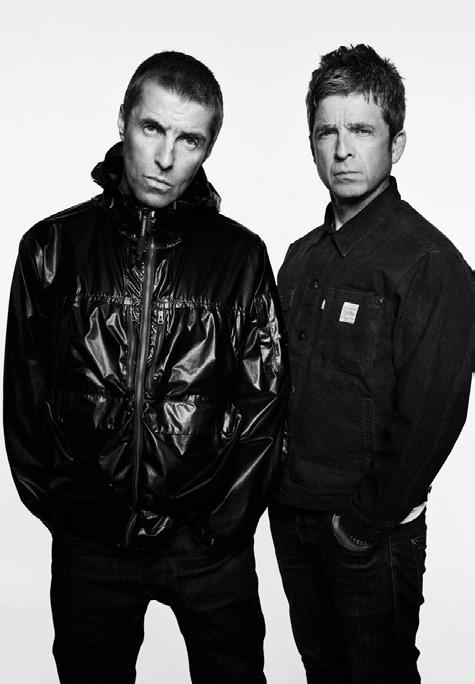
Taylor Swift. There is little debate in the headlines; that’s all disappeared back into the front pages where it probably belongs.
But really the issue was that the one was satirising the other in song – that is Blur was capable of mocking Oasis, but the same wasn’t necessarily true in reverse. Noel had as amusing a tongue as anyone, but it’s hard to imagine him quite doing it in song. Albarn could easily spend all day satirising British society at a piano. But in the end he succumbed to the very mores he was meant to be mocking.
As we move to the present time, Albarn himself cuts a grim figure on the recent
documentary To The End. It’s a reminder that the best satirists are able to have lives wholly apart from the flaws which they point to in their work. Ian Hislop is a little like this; so too is Rory Bremner. Albarn, though he knew the 90s was vacuous and problematic, got sucked in.
There’s no shame in that – most of us did for a time, and then we grew up. This is the peculiar nature of reunion tours –it’s a kind of refusal to grow up, and for those of us who watch a brief bit of time travelling. In Oasis’ case there is little to celebrate besides entering this time loop, and realising we’re looking at it all with slightly wiser eyes now.


BY IVANA

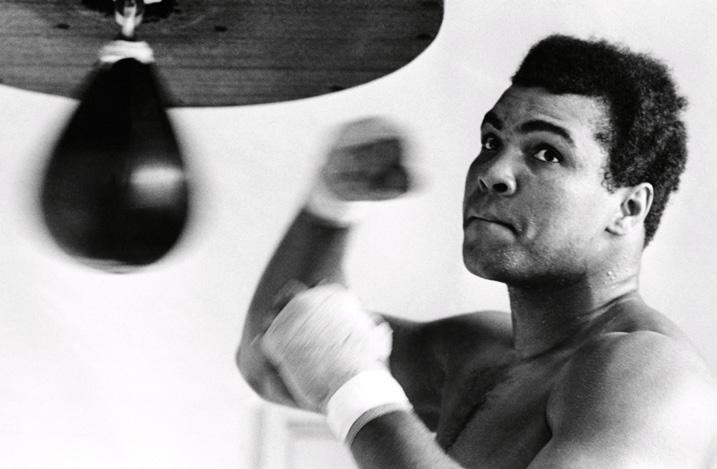
This year marks 50 years since Muhammad Ali’s historic victory over Joe Frazier in the ‘Thrilla in Manila’ in 1975. The fight, widely regarded as one of the greatest battles in boxing history, tested the limits of human endurance and determination. Ali later described it as the closest thing to dying he had ever experienced. It was a moment that transcended sport, cementing Ali as not just an extraordinary athlete but a global cultural icon. His effortless movement, dazzling speed, and poetic trash talk mesmerized fans - but just as striking was the immense industry that surrounded him.
Norman Mailer’s The Fight captures the drama of Ali’s bout with George Foreman, but beyond the spectacle of the fight itself, it illustrates the vast machinery supporting the sport. Promoters negotiating deals, trainers refining strategy, media figures shaping narratives, and an entire economy of ticket sales, merchandise, and television rights - it’s a reminder that boxing has always been about much more than two fighters in the ring.
Boxing has expanded significantly since Ali’s time, both in terms of financial scale and employment opportunities. In the 1970s, the sport was a multi-
Rafael Nadal (Wikipedia.org)
million-dollar industry; today, it generates billions globally. The number of people employed in boxing-related industries - ranging from coaching and promotions to media, sponsorship, and sports science - has surged. According to recent estimates, the global combat sports industry now supports over 150,000 jobs worldwide, with professional boxing events alone contributing upwards of $1 billion annually in economic impact. The evolution of broadcasting, digital streaming, and social media has further expanded career paths, making boxing not just a sport but a thriving commercial enterprise.
Boxing isn’t just about the athletes who step between the ropes. It’s an ecosystem that supports thousands of livelihoods across the world. Whether you’re an aspiring boxer, a coach, a promoter – or even an entrepreneur in sports nutrition – boxing offers countless routes into a fulfilling career. The sport’s ability to provide opportunities, especially for those from tough backgrounds, is one of the reasons it remains so resilient.
In truth, boxing has long been about more than just glory - it’s about money. Few fighters have understood this better than Floyd Mayweather, who turned prize-fighting into a billion-dollar empire. By negotiating his own contracts and taking a direct cut of pay-per-view sales, Mayweather’s 2017 bout with Conor McGregor alone generated over $600 million, a staggering sum that demonstrated boxing’s ability to draw global audiences.
Similarly, Tyson Fury, with his largerthan-life personality, has capitalized on boxing’s promotional model, securing some of the biggest paydays in heavyweight history. These figures illustrate that the business of boxing extends far beyond the ring. From broadcasting rights and sponsorship deals to betting markets and merchandise sales, boxing remains one of the most lucrative sports in the world.
The contrast with Ali’s era is stark. When Ali fought Joe Frazier in the “Thrilla in Manila” in 1975, the total purse was $6 million. Fast forward to 2023, and Fury’s bout with Francis Ngannou reportedly earned him over $50 million alone. The

rise of pay-per-view, streaming platforms, and sponsorship deals has created an industry worth billions, with major fights now generating upwards of $100 million in revenue.
Boxing has long been defined by its great rivalries - Ali vs. Frazier, Leonard vs. Hearns, Tyson vs. Holyfield. But in recent years, the rise of celebrity fighters has transformed the sport. Jake Paul, once dismissed as a mere YouTube entertainer, has forced boxing to sit up and take notice. By drawing millions of young viewers to his fights, he’s injecting fresh energy and commercial appeal into the sport.
Paul’s most famous fight to date came against Anderson Silva on October 29, 2022, a bout that saw him face off against the former UFC middleweight champion, known for his striking prowess and longevity in combat sports. Paul secured a unanimous decision victory (77-74, 78-73, 78-73), knocking Silva down in the eighth round and landing 83 of 336 total punches (24.7 per cent accuracy) compared to Silva’s 79 of 251 (31.5 per cent accuracy). The fight was watched by hundreds of thousands of pay-per-view buyers, further proving Paul’s commercial appeal.
Critics were initially sceptical, but Paul’s win over Silva earned begrudging respect. ESPN’s boxing analyst Mike Coppinger remarked, “Whatever you think of Jake Paul, he just beat one of the

greatest strikers in combat sports history. That’s a statement.” Even former world champion Shawn Porter acknowledged Paul’s progress, saying, “He’s not just playing at boxing anymore - he’s a real fighter now.” While purists continue to debate whether Paul elevates or dilutes the sport, it’s not really possible at this point to deny his impact. His ability to blend entertainment with boxing has led to increased fight purses, better sponsorship deals, and a newfound global interest in the sport. If nothing else, Jake Paul has shown that in today’s digital age, personality can be as powerful as punching power.
For many young people, boxing is more than a sport - it’s a lifeline. From the hardscrabble gyms of Philadelphia to community centres in inner-city London, boxing provides discipline, structure, and hope for those who might otherwise fall through the cracks.
Initiatives like England Boxing’s 'Boxing Awards introduce young people to the sport in a safe and structured way. The USA Boxing Foundation funds grassroots projects aimed at reducing youth crime through boxing. These programs don’t just create athletes; they mould better citizens.
Former world champions like Anthony Joshua and Tyson Fury often speak about how boxing saved them. Joshua was a teenager heading down the wrong path before he found structure in the gym. Fury, battling personal demons, has used his platform to discuss mental health, proving that boxing is about more than just throwing punches - it’s about finding purpose.
Boxing also has a proud tradition of mentorship. For many young fighters, their first real role model is their coach. Figures like Cus D’Amato, who shaped Mike Tyson, or Brendan Ingle, who mentored Naseem Hamed, show that the trainer-fighter relationship is often about much more than technique - it’s about guidance, discipline, and self-respect.
Beyond individual mentorship, organizations like 'Fight for Peace' use boxing to reach young people in underprivileged areas. By combining boxing with education and personal development programs, these initiatives help create opportunities that extend beyond the ring.
Not only that but boxing has also long been one of the most diverse sports in the world. Unlike elite sports requiring expensive equipment or club memberships, boxing is open to all. Historically, it has provided a platform for fighters from marginalized communities, from Muhammad Ali standing up for civil rights to Claressa Shields fighting for gender equality in the sport.
The rise of women’s boxing has been particularly exciting. Once dismissed as a novelty, female fighters like Katie Taylor and Amanda Serrano are now selling out arenas, proving that women’s boxing can be just as thrilling - and lucrative - as the men’s game. Meanwhile, governing bodies are actively working on more inclusive policies for fighters from different backgrounds and gender identities
For all the debates about celebrity boxing and commercialization, the fundamentals of boxing remain unchanged. The hunger, the discipline, and the thrill of a well-timed counterpunch will always define the sport. But as boxing evolves, it continues to offer a vast range of career opportunities, from coaching to broadcasting to business.
At its best, boxing is about transformation - taking raw potential and sculpting it into something formidable. Whether it’s a young fighter learning discipline in a local gym, an aspiring promoter finding the next big star, or a seasoned champion using their platform to inspire, boxing’s impact goes far beyond the ring. And that is why, in 2025 and beyond, boxing will always matter.
Unlock the freedom to travel, invest, and live without boundaries.
Antigua & Barbuda citizenship is more than a passportit’s an investment in safety, freedom, and global opportunity.
We are a team of trusted experts specialising in citizenship by investment in Antigua & Barbuda.
With more than 10 years’ experience successfully helping families secure citizenship rights that go beyond borders, rely on us to help unlock opportunities and pave the way to new horizons.
Trust us for your peace of mind, you can rely on us.


www.jamesandmaginley.com
BY CHRISTOPHER JACKSON

If you spend time in the company of the ultra-wealthy, you begin to detect a truth rarely spoken aloud: luxury, real luxury, isn’t about accumulation, it’s about subtraction. Time, noise, worry – the best luxury removes these, leaving only experiences. In this context, the superyacht is not simply a vessel, but a means of detachment. And Yomira, the London-based firm founded by Neil Hornsby and Amanda Armstrong, has grasped this better than most.
Founded during the turbulent uncertainty of 2020 – a year when most of us were rethinking our place in the world, not launching new businesses –
Yomira's emergence is as bold as it is interesting. The duo, with decades of experience in the yachting world, used the enforced pause of the pandemic to refine a vision rooted in personalisation, discretion, and knowledge.
"We turned the downtime to our advantage," says Amanda, with a calm assurance. "We focused on our core pillars: knowledge, experience, and pinsharp client service."
This is a duo that knows yachts the way a sommelier knows vintages. But more than that, they understand people. Neil talks with obvious affection about the Grenadines and the joy of skimming turquoise waters aboard a
Royal Huisman sailing yacht. Amanda, meanwhile, evokes the Grecian sunlight and the hidden beauty of Corfu with the ease of someone who’s anchored there many times.
"WE FOCUSED ON OUR CORE PILLARS: KNOWLEDGE, EXPERIENCE, AND PIN-SHARP CLIENT SERVICE."
The Yomira difference lies in this blend of technical mastery and human insight.

Unlike the larger brokerage houses with their conveyor belt approach, Yomira operates more like a boutique atelier. "We handpick every yacht. We know the captains, the crew, the nuances of each vessel," says Neil. "It's about chemistry. A yacht is a close-quarters environment, and you need the right crew for the right guest."
This translates into experiences that read like fiction. Take the couple who celebrated their wedding anniversary on a Yomira-arranged voyage. As the sun dipped over a secluded cove, a floating barge emerged around the headland. It held an orchestra and fireworks. The couple hadn’t been told. In another charter, a multi-generational family spent a week in the Bahamas, where Yomira had arranged for the teenagers to swim with wild dolphins while the grandparents enjoyed a curated wine tasting aboard, hosted by a sommelier flown in for the occasion.
It is this sort of bespoke magic that has won Yomira one of the highest


client retention rates in the industry. Their favourite projects are multigenerational charters: arranging treasure hunts for children, private island BBQs, VIP nightclub tables for the twentysomethings. "We relish the challenge of delighting each generation," says Amanda.
“EVERY YACHT HAS A PERSONALITY. THE KEY IS TO PAIR IT WITH THE RIGHT CLIENT.”
Boat shows – Monaco, Cannes, and Fort Lauderdale among them – are where much of Yomira's reconnaissance takes place. Here, Amanda and Neil immerse themselves in new builds, scrutinise emerging technologies, and – crucially – spend time with the crews. “You can learn a lot from a captain over coffee,” Amanda quips. “It’s where we get a feel for how a yacht really runs.”
Yomira’s collection includes some of the most celebrated vessels afloat: from expedition-ready motor yachts capable of reaching Antarctica to classically elegant sailing yachts, each with its own character. “It’s like matchmaking,” Neil explains. “Every yacht has a personality. The key is to pair it with the right client.”
Yomira's sustainability ethos also sets them apart. They actively prioritise yachts that use water filtration systems, hybrid engines, and ocean-friendly cleaning products. The crew – often the unsung heroes of these voyages – are engaged in these efforts too. Yomira also offsets its own travel and donates to coral and seagrass restoration for each charter booked. This isn't just greenwashing. It's a thoughtful, consistent ethic.
And what of the future? Yomira is part of a wider shift in yachting from ostentation to experience. Yes, there are the floating palaces with their helipads and spas. But increasingly,
clients want meaning. "It might be a wellness programme in the Maldives, a gastronomic journey in Sardinia, or an expedition to Antarctica," says Neil. "But whatever it is, it has to matter."
Amanda, one of the rare female founders in the sector, also represents a quiet revolution within the industry. As a leader, she is helping to redefine what excellence looks like in yachting. Not louder. Not bigger. Just better.
There is something almost paradoxical about the world Yomira inhabits. It is, on the surface, one of unfettered luxury. But underneath is a profound attention to detail, to humanity, and to a kind of intimate, curated joy. In an age of mass everything, Yomira makes the case for something truly rare: a holiday that becomes memory, a journey that becomes legend.
www.yomira.com


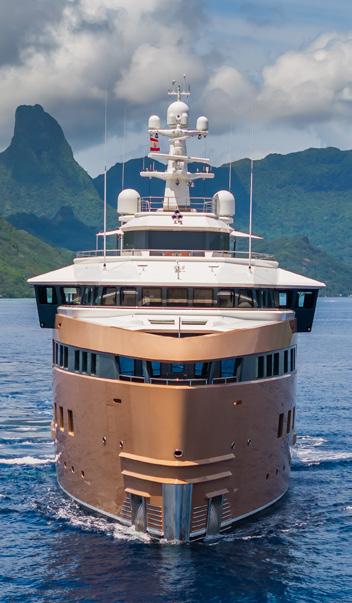
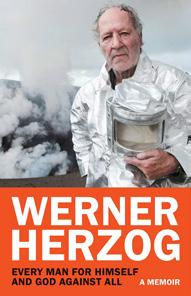
BY WERNER HERZOG
There is an old line in Tom Stoppard’s Night and Day in which a journalist remarks that a foreign correspondent is someone who believes “the most exciting thing about any story is that he has arrived to cover it.” It is a barb directed at a certain kind of self-mythologizing adventurer, the sort of person for whom the spectacle is never quite as thrilling as the fact of their own presence at it. Werner Herzog’s memoir, Every Man for Himself and God Against All, is a study in that instinct, a portrait of a man who has spent a lifetime in pursuit of the extreme, and who now wishes to ensure that the defining drama of those moments is the fact that he, Werner Herzog, was the one who captured them.
If that makes it sound as though Every Man for Himself and God Against All
is a cynical exercise, then that would not be quite right either. It is, above all, a fascinating book - compelling, at times wildly entertaining, at times frustratingly evasive, but never dull. Herzog, one of cinema’s most distinctive figures, turns the camera on himself and reveals a character who is, by turns, profound, foolhardy, amusing, and grandiose. His is a life lived at the edges of civilization, and the memoir is a reflection of that same manic energy. There are shipwrecks, encounters with bears, armed conflicts, and the legendary tale of dragging a steamship over a mountain for Fitzcarraldo. The Herzogian myths are here in full force. But is a memoir without introspection really a memoir at all? Herzog has always been allergic to conventional self-reflection, and he makes no attempt to disguise this aversion. “I have a deep aversion to too much introspection, to navel-gazing. I’d rather die than go to an analyst,” he declares at one point. Elsewhere, he suggests, “I feel some relief in knowing my origins are somewhat swathed in mystery... people know too much anyway.” There is an argument to be made that this is precisely what makes Herzog Herzog - he is, after all, a filmmaker of immense visual power, a chronicler of human struggle in its most heightened form, not a chronicler of his own interior life.
Yet, at times, the refusal to interrogate his own experiences or motivations feels less like a stylistic choice than a limitation. In a book filled with extraordinary encounters, what remains elusive is the sense of what, if anything, Herzog has learned from them. Why this endless pursuit of madness? Why the insistence on seeking out moments of physical extremity? Is it, as he claims, an artistic necessity? Or is there, lurking beneath the bravado, an insecurity about what a more reflective Herzog might find?
Of course, part of what has made Herzog such a cult figure is precisely this bravado. He embodies a very specific strain of artistic machismo: not the Hemingwayesque version of bar fights and bullfights, but something stranger and more extreme, a sort of cinematic conquistador. He does not just tell stories about danger - he must live them. He does not merely depict human obsessionhe must become obsessed.
This is both his greatest strength and his most consistent weakness. On the one hand, it has led to some of the most astonishing images in the history of cinema, from Klaus Kinski staring into the abyss in Aguirre, the Wrath of God to Timothy Treadwell’s doomed love affair with Alaskan grizzlies in Grizzly Man. On the other, it leads to a sort of wackiness that occasionally makes it difficult to take him as seriously as he takes himself. When, in the memoir, he recounts walking from Munich to Paris because he believed it would save a dying friend, it is an extraordinary story, but also one that feels oddly self-conscious, as though Herzog is aware that he is engaged in a very Herzogian act, a grand gesture designed to be retold.
There is also a performative quality to his relationship with suffering. Herzog does not merely document hardship; he relishes it, embraces it as a kind of personal badge of honour. It is as if hardship validates the work, gives it the weight of authenticity. This leads to some of the memoir’s most gripping moments - there are tales of surviving hostile film sets, guerrilla warfare, and dangerous landscapes - but also moments where one wonders whether Herzog is too enamored of his own suffering to ever truly reflect on it.
One of the more striking claims in Every Man for Himself and God Against All
is Herzog’s assertion that his writing will be his true legacy. “I am fairly certain that my written work will outlive my films,” he states with characteristic self-assurance. It is a bold claim, and one that is difficult to take at face value. Herzog is a formidable storyteller, but his genius - if one accepts that he is a genius - is fundamentally visual. He is an artist of landscapes and faces, of movements and silences. His films are not merely stories; they are experiences.
Can the same be said of his prose? The book is written with Herzog’s usual intensity, and there are passages of real power. Yet, in the absence of his singular cinematic eye, the writing does not quite reach the same heights. Herzog’s films endure not because of their plots but because of the sheer force of their images: the opening sequence of Aguirre, the boat on the mountain in Fitzcarraldo, the strange beauty of the wind through the bushes in Grizzly Man. It is difficult to imagine that his written words will leave quite the same mark.
In the end, Every Man for Himself and God Against All is a book that is impossible to ignore, even as it resists easy categorization. It is a memoir in the sense that it chronicles a life, but it is not an introspective memoir. It is a story of adventure, but it is also a selfmythologizing performance. It is a book filled with unforgettable moments, but also one that raises as many questions about Herzog himself as it answers.
Perhaps that is the point. Perhaps the enigma is part of the appeal. But one cannot help but wonder whether, after all these years of pursuing the extreme, of staring into the abyss, of pushing himself and his subjects to the limits of human endurance, Werner Herzog will ever be willing to turn the camera fully on himself.
One suspects that, even if he did, he would find some reason to keep walking, away from the analysis, away from the quiet, and toward the next impossible challenge. IS

BY MUSTAFA SULEYMAN
Books about the future of technology tend to fall into two camps: breathless utopianism or doom-laden warnings. Mustafa Suleyman’s The Coming Wave manages to straddle both perspectives with remarkable dexterity, offering a compelling, urgent, and deeply informed account of the revolutionary changes looming over humanity. As a co-founder of DeepMind and a key player in AI development, Suleyman is uniquely positioned to chart both the promise and peril of the technological surge. This book is not just about artificial intelligence but a broader “wave” of innovations that could redefine our world in ways we are scarcely prepared for.
Suleyman’s thesis is stark: humanity is at an inflection point, driven by what he calls the “wave of imminent technological transformation.” He argues that we are entering an era where AI, synthetic biology, and other radical advancements will reshape every facet of our existence. And yet, despite these breakthroughs, our ability to govern and regulate them is woefully inadequate. “The greatest challenge of the coming decades,” he
writes, “will be maintaining control over the technologies we have unleashed.”
The book opens with a historical perspective, drawing comparisons to previous transformative waves such as the Industrial Revolution and the nuclear age. However, Suleyman contends that this wave is differentfaster, more pervasive, and potentially more destabilizing. Unlike the slow adoption of past technologies, the AI revolution is accelerating at breakneck speed, propelled by a handful of powerful corporations and states.
One of the book’s central arguments is that we are entering the “contained era,” a period in which societies will scramble to establish safeguards against uncontrolled technological escalation. “Containment,” as Suleyman describes it, is the urgent and necessary response to the existential risks posed by AI and other emerging technologies. Without proactive governance, he warns, we risk catastrophic failures on a global scale. The dilemma, as he sees it, is that while these innovations promise immense benefits, they also introduce vulnerabilities that could be exploited by bad actors or even spiral out of control due to unintended consequences.
One of the most striking passages in the book comes when Suleyman describes the double-edged nature of AI. “For every problem AI solves, it creates another.” Suleyman also touches on the philosophical implications of AI. If machines surpass human intelligence, what does that mean for our sense of agency? Will we become mere spectators in our own history? The book stops short of full-blown dystopian speculation but does not shy away from acknowledging these deeper existential questions.
Where The Coming Wave excels is in its clarity and accessibility. Suleyman avoids technical jargon, making the book an engaging read even for those without a deep background in AI or biotechnology. His writing is measured, urgent without being alarmist, and enriched with real-
world examples that illustrate his points convincingly.
Critics might argue that Suleyman, as an industry insider, is part of the very problem he diagnoses. He acknowledges this tension but maintains that he has a duty to warn about the dangers he helped bring into existence. Some may also find his policy prescriptions too vague or overly optimistic about the possibility of global coordination in an era of increasing geopolitical fragmentation.
Nevertheless, The Coming Wave is an essential read for anyone interested in the future of technology and society. It is neither a paean to innovation nor a jeremiad against progress, but a thoughtful, well-researched call to action. Suleyman leaves us with a haunting reminder: “The wave is coming. Whether we sink or swim depends on the choices we make today.”
This book is a wake-up call, and one that we would be wise to heed. GA
and critical analyses all share that certain varnish - polished, distant, and ultimately revealing only what the establishment wishes us to see. They offer the art world's preferred narrative, not its truth.
Joe Tucker's memoir The Secret Painter tears through this facade with startling authenticity. This raw, uncompromising account exposes the commercial machine behind contemporary art. Tucker's testimony feels like confession rather than calculation, and in its brutal honesty reveals more about the real workings of galleries, collectors, and critics than a library of conventional art literature.
What makes this memoir exceptional is Tucker's willingness to expose not only the industry's wounds but his own. Rather than crafting a heroic narrative, he meticulously documents his complicity, his failures, and eventually, his rebellion. These are not polite anecdotes but visceral confrontations with power.
from friction, from discord. I painted first on scraps of cardboard because canvas was for people with different surnames than mine."
These insights hardened as Tucker navigated the art world. The middle chapters read like an indictment, where we learn how galleries manipulate prices, how critics can be influenced, and how collectors dictate artistic direction while pretending merely to appreciate it.
Once established, Tucker admirably began questioning the very system that elevated him. The reader of The Secret Painter witnesses his growing disillusionment and eventual decision to create anonymous works while still producing commercial pieces under his famous name - a double life that became increasingly unsustainable.


BY JOE TUCKER
Books about the art world typically arrive wrapped in pretension and mystique. Gallery catalogues, artist biographies,
And Tucker did reach the heights. Starting as a working-class painter from Manchester, he achieved fame in London's most prestigious galleries before conquering New York. Over time, he found that he enjoyed the accolades more than the actual painting. He found he was good at being famous.
The early chapters about his childhood are nostalgic and moving and let us know that Manchester's industrial landscape, now so often romanticized, was sometimes brutally indifferent to artistic ambition. Tucker was fortunate to find mentors who recognized his talent, provided materials he couldn't afford, and most importantly, protected his raw creative instinct from premature commercialization.
Tucker comes across in these chapters as obsessive, principled, and somewhat naive. Manchester shaped his understanding of class:
"In Manchester, I learned that beauty isn't polite. It doesn't announce itself with a degree from the Slade or the Royal College. It emerges from necessity,
As the memoir progresses, Tucker relates his education in the unwritten rules of Britain's cultural elite - lessons learned through humiliation and betrayal. What a working-class painter from Manchester couldn't understand was the coded language of privilege, where praise often masked contempt and support frequently came with invisible strings.
The final section of the book abandons restraint entirely. It reads like Francis Bacon's journals crossed with a prosecutor's closing argument. Key figures are named and their manipulations exposed: the gallery owner who sold Tucker's experimental works while telling him they were unmarketable; the critic whose reviews suspiciously aligned with her investment portfolio; the museum director who rejected Tucker's work until a certain collector acquired it.
If Charles Saatchi truly wants to understand what happened to British art after the YBA movement collapsed, he will need to read this memoir, uncomfortable truths and all. CJ
After Luke Kennard
I log on at 8:30 precisely, which is to say, I stare at the laptop for thirty seconds before opening it, which is to say, I am very disciplined.
A meeting begins. I arrive late, muted, camera off, nodding furiously into the void. I say, “I’ll action that,” which means I will write it on a list, which means the list will grow powerful and terrible in its silence.
The work begins. I honour this by stepping outside, blessing the sun, wiping a single crumb from the counter, considering the long arc of history.
Deadlines loom like slow-moving animals who are nonetheless getting closer. I write half a sentence, then preheat the oven. A breakthrough! I remember a recipe I once failed and now must conquer. I tell myself this is resilience.
At lunch, I step into the garden, read one page, make a cup of tea, stare at a leaf and consider its patience. My team suggests a meeting.
I say, “I’m in the weeds,” which is true, because I am in the garden.
By mid-afternoon, my achievements include:
1. Learning a chord that sounds like regret.
2. Hitting a golf ball into a metaphor.
3. Watching an entire episode of something I don’t remember choosing.
At five, my conscience taps my shoulder. I fire off an email with the word “circling” and close my laptop with purpose. I tell myself I was productive. I tell myself this twice, for emphasis. The day is done.
I lie in bed and dream of working, which is to say, I dream of dreaming.
Martin Plantinga
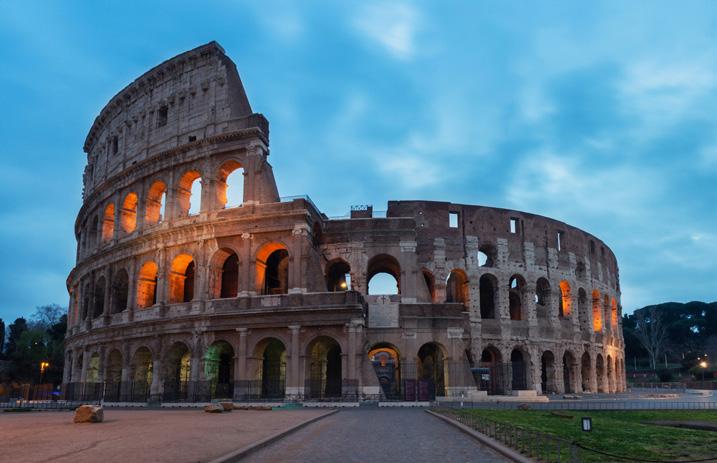
Rome is well-known as the Eternal City, and this has ramifications for the visitor. It would indeed take an eternity to see it, and many tourists have only the weekend. If you allow it to, this can create a tense situation.
It was the French writer Stendhal who fell into a swoon in Florence because of all that there was to see, giving rise to the condition Stendhalismo. We don't know how he fared in Rome, but it would perhaps have engendered a stroke: at least Florence is physically small.
In Rome, all history vies for your attention. The Vatican Museums alone would not be assimilable after a hundred years of fervent study. Along the miles-long route to the Sistine Chapel, I've seen grown men weeping from exhaustion. All they wanted was to say they'd seen Michelangelo's masterpiece, and hadn't wagered on all this other stuff.
At such times, the weight of history upon the tourist's shoulder, what's required is a sound basis to work from. Always keen to help, I would recommend the Hotel Eden, the outpost of the Dorchester Collection here.
Perched elegantly on Via Ludovisi near the top of the Spanish Steps, Hotel Eden has been a fixture of Roman hospitality since 1889. Originally conceived by Francesco Nistelweck, a German-born hotelier who married an Italian woman, the hotel has provided sanctuary for luminaries ranging from Hemingway to Ingrid Bergman in its 130-plus years of existence. During the Second World War, it even served as headquarters for the British High Command before becoming a gathering place for cinema's elite during Rome's dolce vita years.
In the superb upstairs restaurant Il
Giardino, I eat the finest guinea fowl I've had in a life whose key endeavour has been the consumption of guinea fowl. Afterwards, as a sort of unexpected digestif, I am introduced to Simon Ford, the architect here.
Ford unfolds a tale of recent renovation where the art downstairs echoes the art in the nearby Villa Borghese. The floors had to be completely stripped out to meet modern fire regulations. But a headache is an opportunity, and Ford has created a magnificent effect: a dramatic entrance eventually leads you upwards to the rooftop restaurant where St Peter's Basilica can be seen as you eat, and lucky chefs cook with a view of the Coliseum.
The Hotel Eden's location means you can walk each morning in the Borghese Gardens. On a clear day the light comes through the Roman umbrella trees creating stripes of light on the pavements.
The Sacred and the Profane
Everywhere in Rome we see evidence of two Empires, the original pagan Roman Empire overlapping with the dominion of Roman Catholicism. This second is still stronger today than the agnostic tends to suspect. The city is always confronting you with a certain duality within yourself: the sacred and the profane.
Beyond the grandeur of St. Peter's lie dozens of churches that reward the patient explorer. Santa Maria in Trastevere, with its glittering 13thcentury mosaics, offers a glimpse into medieval spiritual aesthetics. The Basilica of San Clemente, a three-tiered architectural marvel, descends through time: its 12th-century church sits atop a 4th-century basilica, which itself rests on foundations of a 1st-century Roman villa and a Mithraic temple.
"I have never felt a greater sense of wonder than when standing in these sacred spaces," wrote Goethe during Unsplash.com



Unsplash.com Unsplash.com

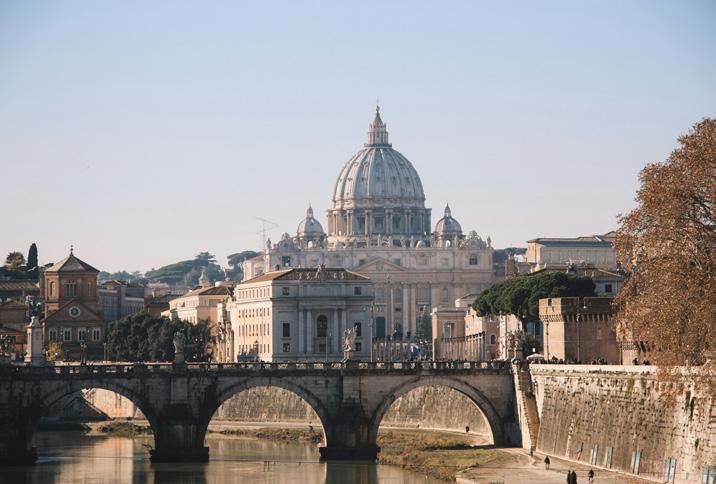
his Italian journey. "One senses that in Rome, divinity has been imagined and reimagined through every conceivable human epoch."
No city on earth so rewards you for going off the beaten track. The Coliseum is a marvellous experience but what about Nero's magnificent underground palace the Domus Aurea? Similarly, St Peter's Basilica is a very grand thing, but you'd be mad not to try Michelangelo's last church Santa Maria degli Angeli e dei Martiri. You'll still see tourists but you won't lose 45 minutes of your day queuing.
The Basilica of Saint Paul Outside the Walls, though relatively distant from the city centre, offers a breathtaking experience of early Christian architecture without the crushing crowds of the Vatican. The Capitoline Museums, meanwhile, house treasures that would be the centrepiece of collections elsewhere but are merely part of Rome's embarrassment of riches.
Laboring Through the Ages
To walk Rome's streets is to traverse not only space but time. Consider the laborers who built these monuments - the thousands of unnamed slaves who constructed the Colosseum under Vespasian's direction, hauling travertine stone from quarries near Tivoli.
During the height of the Empire, Rome was a city of a million souls, with a complex economy that supported specialized trades from marble cutters to mosaic layers, from bronze workers to scribes. The average laborer might earn enough sesterces for a modest apartment in the infamous insulae - multi-story tenements built of wood and brick that frequently collapsed or burned. As the satirist Juvenal lamented, "We inhabit a city supported largely by slender props... while the landlord patches up the ancient cracks and bids the tenants sleep at ease beneath a roof ready to tumble about their ears."
By contrast, the Renaissance brought a different kind of labor to Rome. When
Michelangelo was commissioned to paint the Sistine Chapel ceiling, he famously complained to his friend Giovanni da Pistoia: "I've already grown a goiter from this torture... My painting is dropping on me from above, my face makes a fine floor for droppings... My loins have penetrated to my paunch... and my brush, above me all the time, dribbles the paint on my face so that I look like a decorated pavement." Raphael, working simultaneously on the Vatican Stanze, approached his labor differently. "All perfect painting must be like perfect music: it must have rhythm, harmony, and content," he wrote, capturing the collaborative spirit of his workshop where dozens of assistants executed parts of his grand designs.
Today's Romans face different challenges. Italy's economy, the third-largest in the Eurozone, struggles with structural issues that particularly affect young workers. Youth unemployment hovers around 30 percent, nearly triple the overall unemployment rate. Many educated young Romans find themselves navigating a system of temporary contracts and internships, what Italians call "precariato" - precarious work.
"Rome has perhaps the most complex employment landscape in Italy," explains economist Maria Rossi at Sapienza University. "Tourism creates jobs, but these are often seasonal and low-paying. Meanwhile, the public administration, traditionally a major employer, has reduced hiring dramatically in recent years."
Yet amid these challenges, Rome's entrepreneurs find niches. Near the Hotel Eden, young artisans have revived traditional crafts, opening workshops
that produce handmade shoes, bespoke suits, and artisanal foods that command premium prices from discerning tourists. The gig economy has also taken root, with Romans offering specialized tours, apartment rentals, and food experiences through digital platforms.
It is a city of layers, with us the latest, our achievements one day to be built on top of by AI architects. In the church of San Clementi, as you explore deeper you find time reversing, until you reach a gushing spring: an image of timeless creativity which is what makes this city as relevant today as ever.
Rome's complexity offers a mirror to our own internal contradictions. We are, like the city itself, composites of past and present, sacred and profane, grandeur and decay. The poet Shelley captured this sentiment when he wrote of Rome's ruins: "The human mind's imaginings / Over its ruins spread!"
Walking from the Hotel Eden down to the ancient city center, one passes through distinct epochs - Belle Époque, Renaissance, Medieval, Classical - the transition seamless yet jarring. This chronological compression teaches us that civilization is neither linear nor inevitable, but rather a continuous conversation between what we inherit and what we create.
As Michelangelo, who spent the last three decades of his life in Rome, supposedly remarked: "I am still learning." This humility before the enormity of human experience is perhaps Rome's greatest lesson. Even the masters who shaped our understanding of beauty found themselves humbled by the city's accumulated wisdom.
Rome does not merely preserve history; it demonstrates how history lives and breathes in the present. And when the weight of all this significance becomes too much to bear, there is always the Hotel Eden - a perch from which to observe the eternal city with a glass of Lazio wine in hand, contemplating the next day's explorations with renewed vigor.
Sam


With
David
Can the UK cheese industry survive European competition? 75
How one scholarship changed a career path
85
The Amazon, the economy, and Lula’s legacy 94
Tobias
gives his view
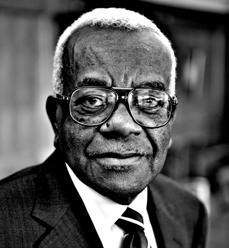
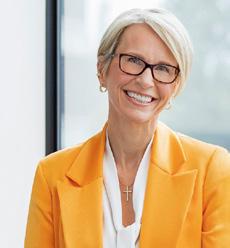
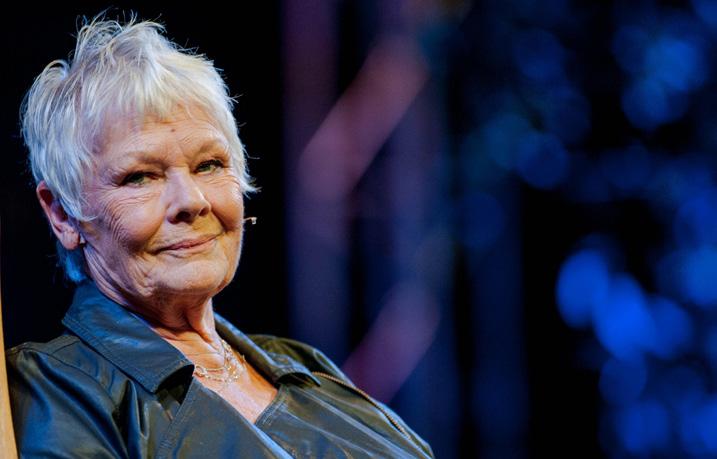

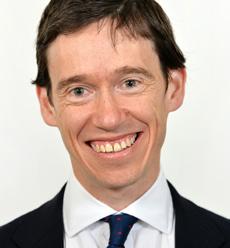

THE FOUNDING MEMBER OF THE ENID AND ADDICTION SPECIALIST ANSWERS QUESTIONS ABOUT HIS NEW BOOK DARK SUN
WHAT WAS YOUR WORST SUBJECT AT SCHOOL?
All of them! I was unteachable, but I could learn…
WHAT’S THE BEST PIECE OF ADVICE YOU’VE EVER RECEIVED?
George Aubrey Lyward OBE once told me: “Resist the strong pull of the herd.” It’s been a guiding principle ever since.
YOU WAKE UP IN 1976 AGAIN, WHAT’S THE FIRST THING YOU DO?
Stop drinking and drugging. Diligently and earnestly apply myself to learning about musical composition.
WHAT’S THE WEIRDEST GIG YOU’VE EVER PLAYED?
An officers ball at RAF Scampton, the HQ of 617 Squadron, The Dambusters.
IF YOU COULD BE IN ANY BAND IN HISTORY (BESIDES THE ENID), WHICH WOULD IT BE?
It would have to be either Captain Beefheart’s Magic Band or TheRolling Stones.
WHAT’S THE BOOK YOU WISH YOU’D WRITTEN?
Lord of the Rings.
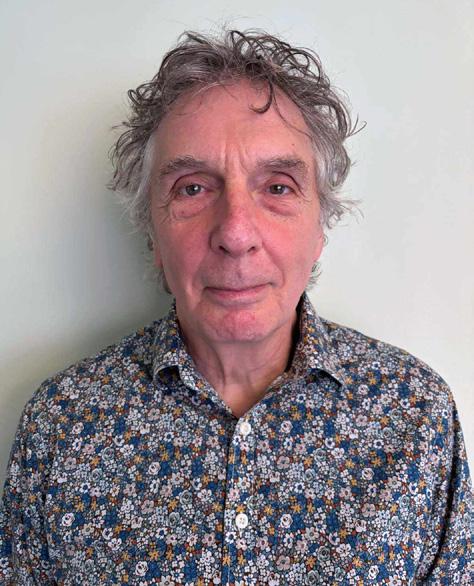
WHAT’S A LIE PEOPLE OFTEN TELL ABOUT ADDICTION?
That the problem is just about the addict. It is a family/societal systemic condition. The whole family system gets ensnared and there is a powerful cultural aspect. People think if the addict stops, everything returns to normal. It doesn’t. The family has to recover too.
WHAT’S YOUR FAVOURITE GUILTY PLEASURE SONG?
Honky Tonk Women or Big Eyed Beans From Venus.
WHAT’S THE BEST THING ABOUT WRITING A BOOK?
Getting to the last full stop and realising you’ve actually done it.
WHO HAS BEEN YOUR GREATEST MENTOR?
Dr. Philip Groves and Dr Maurice Nicholl.
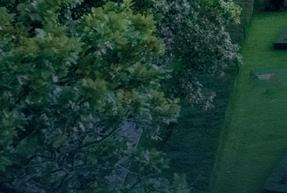


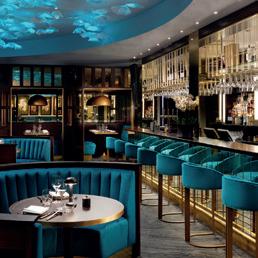
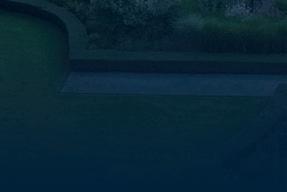

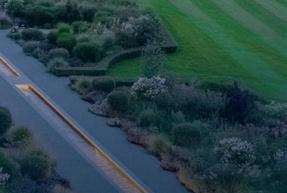
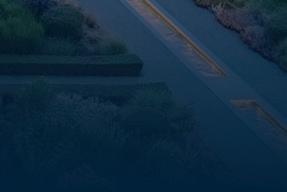


At Grantley Hall, stately grandeur meets contemporary elegance. Discover 47 luxurious bedrooms and suites, five sophisticated restaurants, three stunning bars and award-winning spa and wellness facilities. Authentic English country charm radiates from the 17th century estate that is nestled within a breathtakingly beautiful and historic region on the edge of the Yorkshire Dales.
Ripon, North Yorkshire, HG4 3ET | +44(0) 1765 620070 | hello@grantleyhall.co.uk | grantleyhall.co.uk @GrantleyHall_








